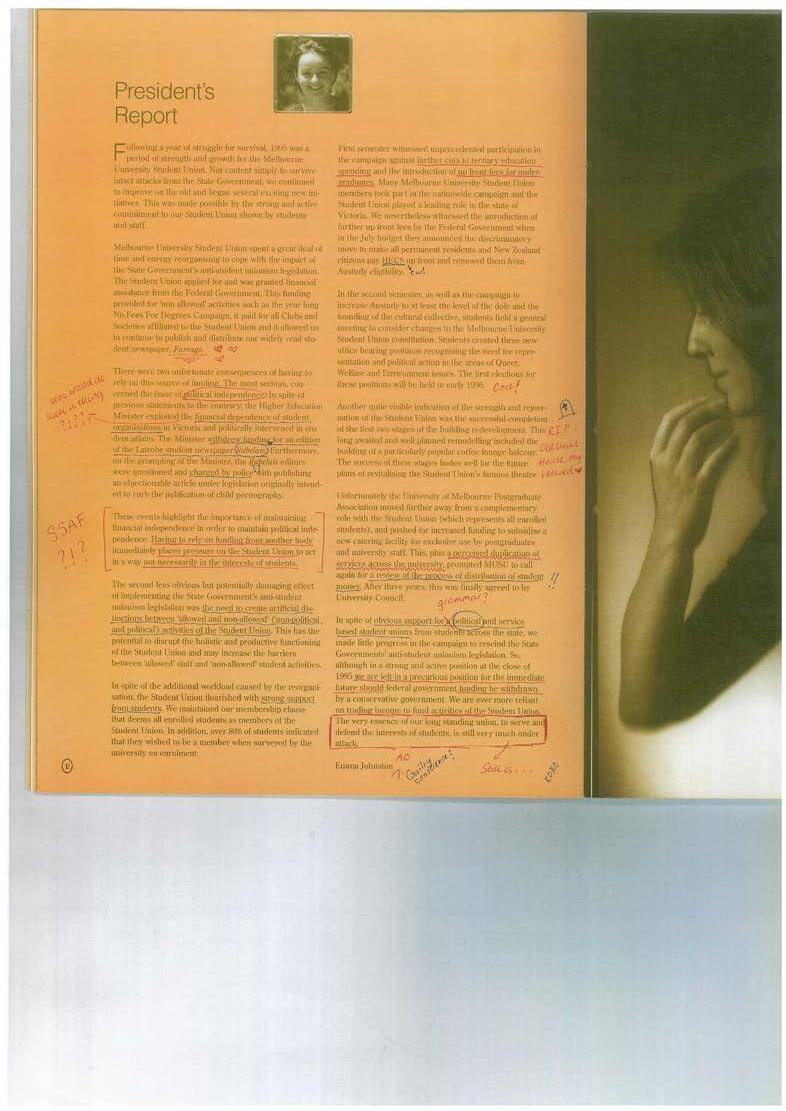

Farrago
vol. 101, ed. 3 est. 1925
CLASSIFIEDS
Notice of Elections
From the brilliant mind of Guglielmo Marconi, this new-fangled wireless telegraphy is sweeping the nation!
For those of us in print media, we are perplexed by this advancement in communication technology, which, quite frankly, can only be denounced as demonic - for what is ‘fodder’ but ‘farrago’ translated from the church’s Latin into the coarse peasant vernacular of English?
Radio Fodder is the University of Melbourne’s student radio station. Radio Fodder is run by the UMSU Media Department.
Tune in every weekday during the semester. Type radiofodder.live/ in your search bar.
Volunteering
If you spotted errors in our edition of Farrago... Join us as a sub-editor! We need you! Positions available in news, nonfiction and creative. Inquire at farragomagazine.com/ join
Follow us on socials!
Follow us @farragomagazine on all major social media platforms.
Stay up to date with campus reporting, events, workshops and live-tweets from UMSU Students’ Council.
Personal
100-year-old student publication looking for young contributor. Hard-working, of good character, meticulous hygiene, social drinker, lives on 4th floor of Building 168 and wishes for long-term companionship. Preference for student journalists, writers, sub-editors and visual artists.
Interested parties may visit farragomagazine.com/contribute
Above Water
Enter the annual creative writing competition and anthology.
Categories include:
Prose: Genre Fiction, Literary Fiction, Creative Non-Fiction (1500 words max)
Verse: Formal poetry and Free Verse (50 lines max)
Other: Experimental, hybrid, playscripts, ergodic, etc.
Winners and Shortlisted competitors will be published in the print anthology.
Email all submissions to abovewater@ farragomagazine.com
Please ensure your name does not appear in your piece (use an alias if you must). All submissions must state in SUBJECT LINE: Category, Title, Word/Line Count, UniMelb student number & optionally: if the piece’s subject matter concerns a marginalised experience, you may disclose whether you belong to the relevant group.
Applications close: 11 August 11:59 pm
Sick of heartache? Life got you down? Submit your woes annoymously to receive sage advice from our Farr-Agony Aunts.
Just scan the QR Code below.

Boring Disclaimers
Farrago is the newspaper of the University of Melbourne Student Union (UMSU). Farrago is printed on recycled paper by Kosdown Printing. Please recycle this magazine. Farrago is published by the General Secretary. The views expressed herein are not necessarily those of UMSU. If you want to raise an issue with the Union, contact the President and General Secretary at president@union.unimelb. edu.au and secretary@union.unimelb.edu. au respectively.
in the Blue Sky? How Bluesky Promises Online Consumers Choice, Clarity and Control
or, The Boy with the Ticking Tattoo
I Stopped Writing Poetry: A(Romance) in a Post(Modern) Age
Farrago is produced and published on the stolen lands of the Wurundjeri and Boonwurrung peoples of the Kulin Nation. Sovereignty was never ceded. We pay our respects to the Traditional Owners of this land and to all the lands on which our University operates: the homes of the Wurundjeri, Boonwurrung, Yorta Yorta and Dja Dja Wurrung peoples. We acknowledge that the University of Melbourne is an inherently colonial institution, built not only on stolen land physically, but on the systematic exclusion of Indigenous peoples and Indigenous systems of knowledge. As the University’s student publication for 100 years now, we
recognise our complicity in such systems and strive to actively resist and unlearn colonial ideologies, both our own and the University’s.
Always was, always will be Aboriginal land.
In 1994, under Jeff Kennett’s Liberal State Government, Victoria introduced partial voluntary student unionism (VSU), placing stringent limitations upon union spending. These legal amendments effectively prohibited political activity by confining union budgets to a narrow definition of “facilities, services or activities of direct benefit to the institution or students”.
Concluding her 1995 term, outgoing Melbourne University Student Union President Emma Johnston remarked upon these “attacks from the State Government”, condemning “the need to create artificial distinctions between ‘allowed and non-allowed’ (‘non-political and political’) activities of the Student Union”.
In the three decades following her presidency, the University of Melbourne’s student unions have had their independence vitiated by reliance on external funding. The Howard Government’s 2006 federal implementation of VSU and the introduction of the Student Services and Amenities Fee (SSAF) have stymied unions in their service provision and student advocacy, successfully reducing the prominence of students as a political body.
Pre-VSU, membership fees were directly paid to student unions. Today, the University of Melbourne Student Union must justify its existence to the University which it should exist to contradict. The mandatory SSAF payment is determined and issued by the University who subsequently controls the income generated. The process of renewing funding agreements has diminished unions to consultative bodies with decreasing leverage. Amid the University’s severe repression of student protest, specifically pro-Palestine movements opposing the University’s alleged complicity in the genocide, it is difficult to ignore UMSU’s unbalanced stance as it teeters between the students it represents and the University upon whom it depends.
Covers: Mathilda Stewart and Sophie He
As of this year, student-led organisations must receive a minimum 40 per cent SSAF allocation. However, as Woroni’s Charlie Crawford suggested last year, “It is entirely possible that the 40 percent requirement is taken by universities as a mandate to provide nothing more - it becomes a ceiling, not a floor.” In 2024, UMSU received 38.2 per cent of SSAF revenue while the Graduate Student Association received 15.6 per cent, totalling over the new 40 per cent minimum. The introduced base amount, if Crawford’s prediction materialises, threatens a status quo wherein the two student-led organisations wrestle for purchase upon an eroding tranche of funds.
In 1995, Johnston’s union supplemented their budgetary deficiencies with federal funding. As she acutely noted at the time, “Having to rely on funding from another body immediately places pressure on the Student Union to act in a way not necessarily in the interests of students.”
2025 marks another round of SSAF negotiations. This time, Emma Johnston, having ascended to the position of Vice-Chancellor, finds herself diametrically opposed to her old union. As the consultations unfold, it will soon become apparent whether she also finds herself diametrically opposed to the values of her younger self.
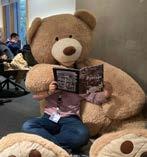
Designers: Sophie He, Mathilda Stewart, Ibrahim Muan, Chiaki Chng, Hallie Vermeend, Ruby Weir-Alaracon.
Sub-editors: Erin Ibrahim, Emily Macfarlane, Helani Munidasa, Pip Murphy-Hoyle, Harrison Abbott, Audrey McKenzie, Ren Richards, Emily Couzins, Charlie Simmons, Polly Allchin, Dom Lepore, Zeinab Jishi, Lucy Russ
Managers: Angela Nacor, Felicity Bayne & Nathan Pham (Photo/Video), Chiaki Chng (Social Media), Hallie Vermeend (Creative), Maria Quartel (News and Design), Madeline Barrett & Emily Macfarlane (Nonfiction), Hayley Yeow & Ruby Weir-Alarcon (Reviews), Tom Weir-Alarcon & Pamela Piechowicz (Archives), Taylor (Puzzles), Arshinie Saravanan & Beth Muir (Events)
The editors love: A1 Bakery, the mighty NTEU, Dolly Parton, all editors past, Mary Kin Chan, Michelle, Lachie, Simon, Sluntz and Pat from Above Quota, Blahaj (dead in absentia), Millie, Caro, Charlie, Trades Hall, Kathleen Syme Library, William McMahon Ball Theatre, Poetry Says Podcast, Alice Allan, Patrick Nguyen Kieu, Joshua Barnes, Jo Chandler, Radio Monash, School of Culture and Communication, Lot’s Wife and student media comrades worldwide.
Your 2025 editors are Mathilda Stewart, Sophie He, Ibrahim Muan Abdulla, and Marcie Di Bartolomeo.
THE DREAM OF SUSTAINABLE BUSINESS: A CHAT WITH A CYCLING ENTREPENEUR
Julia Hristodoulou University of Melbourne Student
It was the beginning of winter and I was in Tbilisi, Georgia, quite unexpectedly. There was chaos on the streets. Mass-protests were ensuing as the pro-European public expressed their outrage toward the new government’s pro-Russia stance. Within this mayhem, I met Benjamin Parent.
I was eavesdropping on his conversation. He, a cyclist from France, was having a long chat over breakfast with a local Georgian about the best places to travel through India. Ben was cycling from France to Georgia, and would be reaching Japan by the end of his trip. I had been solo travelling for 5 months which I thought was solid, but this type of travel was totally beyond my comprehension.
Following my curiosity, I wanted to know more.
About a month after exchanging contact details with him, I speak with Ben over the phone to learn about his project. He has just landed in India.
I hear him cough over the phone, he tells me that the pollution is quite bad.
I ask him why he is cycling such long distances, is it for slow travel or environmentalism?
He tells me it’s been a years-long dream of his to cycle the world. ‘It was at the back of my head, life goes on and you forget … but this dream was particularly strong, so it came back’.
Ben’s mission involves actively asking the world a question: can a business that prioritises sustainability also remain profitable?
He decided to cycle across the world to meet with entrepreneurs who own sustainable businesses. He tells me he is gathering information and research to codify into two books: one for entrepreneurs, people who want to create a sustainable business or CEO’s who want to apply environmental elements to their company. Then, another book about the adventurous aspects of his travels.
Ben explains how his endeavour has been shaped by Kate Raworth, an English economist who developed a ‘doughnut’ shaped plan of social and planetary boundaries. It contains a framework with life’s essentials and what a shortfall or an overshoot of these essentials would look like. It acts as a compass for human prosperity within the 21st century against which different organisations, networks, governments and owners can measure their businesses.
‘I decided to meet the entrepreneurs fulfilling the 21 sectors she outlines: education, climate change, pollution of the ocean, etc.’ He explains his business model wherein he meets different businesses who provide solutions within these sectors. Additionally, ‘The more I cycle, the more trees are collected. At the end, we plant trees for the number of kilometres I have cycled.’
Initially, I was not convinced by the notion of ‘entrepreneurship’, usually relegating it to the realm of finance and tech bros fixated on profit. I never considered business and environmentalism complementary to each other. Yet, as I’ve gotten older, I have noticed that while environmental social action is important, change must be applied to the realm of business and finance. Commerce is trading that which has been extracted from the Earth. If more environmentally-conscious people were involved in the decisions and functions of enterprise , there could be systemic prioritisation and awareness of sustainability.
I believe in the regeneration and rehabilitation of what has been neglected, used, and discarded as faulty. The term entrepreneur derives from the French entreprendre, meaning ‘to undertake’. This could also translate to the commencement or the ignition of new ideas. It’s so easy to quit things, to throw them away. The world is full of single-use products. Perhaps this is why we are treating the earth in the same way, extracting from her with dreams of running away to space once the planet is no longer producing upon demand. But humans are intrinsically linked to the earth, we are of her. So abandoning it, as though it is disposable, is simultaneously abandoning human nature. Hence, we need the development of business plans that do not avoid the issue of mass production usually dealt through the rubbish bin’s deep dark void, but action that transforms waste instead. This is why Ben inspires me, because his project, through experiences and meetings, emphasises solutions to this problem.
‘How can I begin and get into this type of slow travel?’ I ask.
‘The bicycle is a solution,’ he says, ‘I am linked so much more with nature. We understand that cars are way too fast for nature. It brings the ability to meet locals, enjoy the landscape, it’s faster than walking but it is also fun. Just try it. Around your place, do a small one, see how you feel, then extend it. I would say identify your next destination, don’t worry if the bike is not fancy, as long as it works properly. Just start day by day.’
Another fascinating part of Ben’s journey has been witnessing his connection to others. Travel is what intertwines us with people we may not have met if we never left our rooms. I was lucky to cross paths with Ben, and I have witnessed a transformation within him, as he has spread his wings across India, engaging in sustainable communities and learning yoga. You can follow the rest of Ben’s journey via his Instagram @ trees_on_the_way. I am excited to contact him again and see what is next in his journey.

UniversityofMelbourneStudentUnion
Office Bearer Reports

President Joshua Stagg
Hi to all, I hope that all of you are doing well and have survived another semester. This has been a difficult few months at UMSU and for the student community. The vast majority of my work has consisted of preparing for and attending meetings on behalf of the students. I will briefly touch on a few key issues that have emerged recently.
As mentioned in my last Farrago report, the new restrictions upon protest activity are a dangerous precedent and a near-fatal blow to student activism. I am advocating on behalf of students to repeal these changes, but in the meantime, I am calling for offences so far in 2025 to be treated as a warning as opposed to requiring sanctions. Myself, Advocacy and Education, are prepar-
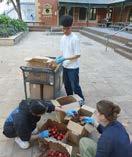
Welfare
Kunal Dewani & Felia Cahyadi
Hey there, we have had a fun month at UMSU Welfare, running Union Mart, Welfare Brunch and Dinner. We managed to publisj 2 editions of the Welfare Newsletter, prepared by our great newsletter team. We have had poems, stories, fun recipes with Welfie, our cute UMSU Welfare mascot and a section on Affordable Local Eats. While we have had a great successful month, there have been certain problems and therefore, we request all students to understand that all UMSU Welfare volunteers are also students, and we request you all to be kind and understanding towards them!
We were also present at Uni Mental Health Day, with board games and a raffle with a cute little Welfie plushie as the prize. We didn’t forget our friends at Southbank and Burnley and have been visiting them too, with Union Mart running at these campuses on a weekly basis. We look forward to seeing you around through the semester and the year. All the best for your exams and if you want some ways to destress, we have got (un) helpful recommendations in our May Edition Newsletter hahaha! more details!


ing a series of protest examples to seek guidance on what types of protests will be accepted. Once this is complete, I will communicate it with the student and staff community.
On the Australian front, whilst we have avoided a Coalition government, we have Labor returned with a large mandate, meaning that international student caps are a near certainty. This characterisation of international students as the cause of issues in Australia is a blatant exercise in scapegoating. The University and I agree that we must advocate against the caps, albeit based on different motives.
Across the globe, we are seeing conflicts emerge. Please look after yourselves and your families. If any student requires support, please do not hesitate to reach out. We, above all else, are a community.

Education (Academic) Harrishman Shobanan & Rhea Sankar
Rhea and Harry here! We’ve been busy behind the scenes making sure students are heard by the University - be it through our SRN and faculty committees. This semester, we’ve been pushing for academic policies which support students, like universal 3-day no-document extensions and more flexible attendance hurdles.
We’re also making sure no student concern slips through the cracks—whether it’s the lack of lecture recordings or assignments due during SWOTVAC.
We stand with students concerned about the new UniWireless terms of use. We’re working to get clarity on what these changes really mean—and we’ll always defend your right to privacy on campus.
PS: Is there something that’s always bugged you about your course? Now’s your moment to speak up - Our Faculty Feedback Form will be open very soon – check out @umsueducation for more details!
UMSU GenSec, Education (Public), Clubs & Societies, Creative Arts, Womens, Environment, Queer, People of Colour, Disabilities, International, Southbank, Burnley, Indigenous and Activities did not submit reports
Uni News
Potter Museum Reopens with First Nations Art Exhibition Sophie He
Having undergone substantial redevelopment since 2018, the Parkville campus’ Potter Museum of Art reopened during Reconciliation Week with 65,000 Years: A Short History of Australian Art. According to the Museum, the exhibition ‘celebrates the brilliance of Aboriginal and Torres Strait Islander art while confronting the dark heart of Australia’s colonial history and proclaims the importance of Indigenous knowledge and agency.’ The free exhibit is open until 22 November.
UniMelb Releases 2024 Sustainability Report
The University has released its 2024 Sustainability Report, communicating that it is ‘On track’ to meet 10 of its 28 sustainability targets by 2030. This is the third report released under the University’s commitment to its Sustainability Plan 2030 targets, and its 11th one overall.
Since the 2023 Report, five additional targets have been classified as ‘On track’. However, the target which reads, ‘The University has reduced total water consumption by 10% relative to a 2019 baseline’ has regressed from ‘On track’ to ‘In progress’. 14 targets remain ‘In progress’, meaning that while efforts have been made, the University is not on course to meet them by 2030. The Report classifies three targets as ‘Not yet started’, citing their contingency upon the prior completion of other targets. Notably, ‘The University has significantly increased the proportion of water consumption from non-potable sources compared to a 2019 baseline’ is the single target marked ‘Needs attention’, signalling insufficient evidence of its implementation.
In both 2024 and 2025, UniMelb ranked 9th worldwide in the ‘QS World University Rankings: Sustainability’, a significant jump from 51st in 2023.
‘The 2024 Sustainability Report highlights some of the great work being done across the University. However, the Report fails to accurately convey the areas where the University is falling behind in meeting its own targets, obscuring the continued urgency and further commitment needed for the final 2030 strategy to be eventually achieved,’ says UMSU Envirment Officer Bearer Jayde East.
Students may view the report on the University’s website.
University of Melbourne sells $8 million Parkville mansion
Mathilda Stewart
The University of Melbourne has listed for sale the historic Parkville residence, known as Cumnock House, previously home to former Vice Chancellor Duncan Maskell. The University is seeking to sell the property for between $7.9 to $8.69 million.
Located at 62 The Avenue, opposite Royal Park, the grand Italianate mansion was originally built in 1889 for stock and station agent George Howart, and acquired in 1919 by Ridley College, an Anglican theological college affiliated with the University, which officially purchased the property for $7.1 million in 2017.
The property was previously the home of former Vice Chancellor Duncan Maskell, and was the location of multiple protests during his tenure. In November 2020, the Unimelb NTEU Branch organised a rally outside the property to protest the University’s underpayment of over 350 casual teaching staff. Another was held in December 2021, opposing Maskell’s implementation of widespread casualisation and pay cuts.
The NTEU at the time described the property as “a symbol of the inequity facing employees at the country’s wealthiest university where top management enjoy some of the highest salaries and benefits while casual staff suffer under conditions that have included wage theft, no career path and a devaluing of their work”.
UniMelb Drops in Global University rankings
Sophie He
The release of ‘QS World University Rankings 2026’ saw the University of Melbourne drop to 19th place from the previous year’s 13th.
Higher education analyst Quacquarelli Symonds annually ranks universities from around the globe. It commences the requisite research in September of each year, publishing their findings the following June. Rankings are based on a series of indicators which measure universities’ outcomes in research, employability, global engagement, the learning experience and sustainability. Indicators pertaining to ‘Academic Reputation’ and ‘Citations per Faculty’ are the most heavily considered, comprising 50 per cent of the weighting.
UMSU Apologises for Accidentally Referencing Islamophobic
Sophie He
The University of Melbourne Student Union (UMSU) has apologised for referencing an Islamophobic meme in its Week 10 eNews mass email. The subject line reads, ‘Can Tralelero [sic] Tralala proofread my essay for me?’. Tralalero Tralala is an Italian brain rot meme which has accompanied AI-generated Italian voiceover insulting Allah. The meme depicts an AI-generated shark wearing Nike shoes.
Sophie He
In its following eNews email, UMSU issued an apology stating it was ‘not aware of’ and ‘deeply sorry’ for the subject line. The apology concludes by committing to ‘more diligence and care with any cultural references in [their] messaging going forward to avoid causing harm to [their] student community’.
General Store Coffee Prices Rise
Sophie He
The price of machine coffee at The Campus General Store has risen. Customers who do not bring their own cup can now expect to pay $2.50 for a small coffee, a $0.60 increase from the previous price.
Labour Announces 20% cut in HECS Debts
Ibrahim Muan
The Labour Government has introduced legislation to cut all student loan debts by 20 per cent, promising relief to over three million Australians.
Touted as a major cost-of-living measure, the bill also raises the repayment income threshold from $54,435 to $67,000. However, economists and higher education experts warn that the policy may deepen long-term inequities in the student loan system.
The government says the 20 per cent cut—backdated to 1 June—will wipe approximately $16 billion from the HELP system, translating to around $5,520 in savings for the average debtor. It applies to all types of student loans, including HELP, VET Student Loans, and Apprenticeship Support Loans.
However, industry experts point out that the one-off cut disproportionately benefits higher-income graduates on track to repay their loans in full, rather than lower-income earners who are less likely ever to reach the repayment threshold.
While the changes are well-intentioned, they risk locking some students— particularly women and low-income graduates—into “a debt treadmill,” as smaller repayments over an extended period can still mean decades of owing money.
Critics are calling the across-the-board reduction “blunt” and “regressive.” They argue that targeted support—such as indexing changes or sector-wide fee reforms— would provide more equitable and lasting relief.
The bill follows earlier indexation reforms, pegging annual loan increases to the lower of the Consumer Price Index or Wage Price Index. Together, the changes amount to nearly $20 billion in total student debt relief.
University Threatens Legal Action Against Unimelb for Pales-
Mathilda Stewart
The University of Melbourne issued a legal threat against the student activist group Unimelb for Palestine (UM4P) on Monday 12 May, requesting the removal of ‘Unimelb’ from its name, citing trademark infringement.
In a statement on Instagram, UM4P alleged that the University also threatened to have the group’s account taken down.
The group claims this is part of a broader attempt to suppress activism which opposes its ties with weapons manufacturers.
“This legal threat is just one of many tactics the University has used to silence protestors.”
In the past twelve months the University has issued disciplinary actions against students, used Wi-Fit to track student protesters, and instituted specific bans on indoor and ‘disruptive’ protest action.
UM4P has since changed its name to U Melb for Palestine and updated its logo, but maintains that the University’s actions are a form of intimidation aimed at stifling dissent. They call on the University community to reject what it describes as an attack on free expression.
“We refuse to be silenced, and we will continue to fight.”
Aborted encampment for Palestine: Thursday 8 May
Mathilda Stewart
Thursday 8 May saw students from Unimelb for Palestine launch a briefly renewed encampment in South Lawn in protest of misconduct charges levelled against multiple students by the University. Two
students were later expelled by the University, and another two suspended, though they are currently awaiting an appeal.
The action was announced on social media early on Thursday morning. After protesters set up two small tents, police, called in by University security, issued a directive for participants to remove the tents. Police directions were complied with, and police left the campus shortly after.
A speakout was held at 11 am, organised by Students Against War, in protest of a speaking event by former Elbit Systems engineer Gal Barkai in the Electrical Engineering Building.
While the encampment maintained a presence on South Lawn throughout the day, participants ultimately dispersed in the evening.
In a statement released the following day on Instagram, Coalition for Palestine stated that the “events that occurred yesterday were a clear demonstration
UniMelb Releases 2024 Annual Report on Racism
Ibrahim Muan
The University of Melbourne’s 2024 Annual Report on Racism paints a picture of cautious institutional progress, framed around acknowledgement, data collection, and policy reform. However, for many students—particularly those who contributed to the 2023 Racism at the University of Melbourne Report published by the University of Melbourne Student Union (UMSU)—the report rings hollow. When read side by side, the two documents reveal a widening gulf between managerial commitments and lived realities on campus.
The University’s report, released in June this year, recognises that racism remains “ongoing and systemic” across the institution. Drawing from 113 complaints submitted through internal channels in 2023, it documents a range of racially motivated incidents affecting both staff and students. However, only 13 cases progressed through formal complaint procedures, underscoring a broader culture of underreporting and institu-
-tional mistrust. The report acknowledges that students and staff face considerable barriers to accessing support— particularly due to uncertainty around reporting mechanisms, fears of reprisal, and concerns about the impartiality of University processes.
In response, the University has introduced a suite of reforms. These include a new Anti-Racism and Racial Equity Policy, the expansion of support pathways through the Safer Community Program, and the development of a racism-specific staff training module, which more than 4,000 employees have reportedly completed. The University has also integrated anti-racism metrics into leadership key performance indicators (KPIs) and piloted initiatives to diversify recruitment and retention.
The University positions them as evidence of structural change and a commitment to equity. However, what the report lacks—by design or omission—is the kind of detail and emotional truth that animates the 2023 UMSU report. Compiled by the Student Union’s People of Colour Department, the UMSU report is based on 43 student testimonies. It outlines a confronting portrait of institutional racism: students experiencing overt racial abuse, microaggressions in classrooms, alienation in tutorials, and a general sense of being ignored, disbelieved, or gaslit when they raise concerns.
Most damning is the UMSU report’s finding that over 60% of students surveyed did not know how to report racism, and only one in ten who did found the process worthwhile. Academic staff were frequently named perpetrators, and many respondents spoke of the futility of escalating complaints, citing procedural opacity and a lack of follow-up. The report calls for a survivor-centred complaints process, co-designed with students of colour, and structural reforms to curriculum, training, and staff accountability.
In contrast, the University’s report is more circumspect, opting for neutral language, anonymised data, and high-level policy over specificity. It does not break down where or how racism manifests across faculties or disciplines,
nor indicate whether any complaints led to meaningful consequences. Most tellingly, the University has yet to publicly respond to the UMSU’s 2023 report, despite its precise alignment with institutional values around equity and inclusion.
UMSU International By-election Results Declared
Ibrahim Muan
Vinayak Kapoor has been elected President of UMSU International following the 2025 General Elections, which saw 1,629 students cast their votes—well above the 500-voter threshold required.
Key roles include Shreeyukta Adhikari as Vice-President (Cultural and Social), Dhruv Rana as Treasurer, and Kaelyn Miranda as General Secretary (provisionally elected unopposed). Several positions were uncontested, including Vice-President (Media and Marketing) and multiple officer roles.
No nominations were received for the Media and Marketing Director role, leaving the position vacant. The election period concluded with one appeal, which has been resolved.
Full results and counts are available on the UMSU website.
UniMelb Transitions from Google Workspace to Microsoft Ibrahim Muan
The University of Melbourne is transitioning from Google Workspace to Microsoft 365, significantly changing how students and staff will access digital services.
In late 2025, UniMelb accounts will no longer support Gmail, Google Drive, Docs, or other Google tools. Instead, email and collaboration will exclusively shift to Microsoft Outlook, OneDrive, Word, Excel, Teams, and other applications within the Microsoft 365 suite.
Student IT states this change is part of a “strategic transition to a single platform” that aims to provide better integration, enhanced security, and streamlined support. Students are encouraged to migrate their files from Google Drive and Gmail as soon as possible.
University of Melbourne, First in Australia to Expel Pro-Palestine Student Activists
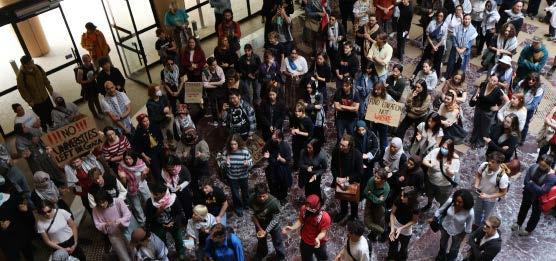
Mathilda Stewart
Vice Chancellor Emma Johnston on Monday, 2 June, upheld formal recommendations from the University disciplinary committee to expel two students and suspend two others.
If the expulsions are upheld on appeal, the University will become the first in Australia to expel students for pro-Palestine activism. The move mirrors disciplinary decisions made by universities in the United States, including at Columbia University, Vanderbilt University, and the University of Florida.
While students are intending to lodge an appeal, the University’s decision will remain in place until the result is decided. The two students facing suspension will have their enrollment deferred until March next year.
The students were found by the University to have participated in a protest in academic Steven Prawer’s office on 9 October 2024, where those involved requested
to speak with Prawer, erected pro-Palestine stickers and a Palestinian flag, and recited chants. The sit-in lasted 90 minutes and ended when police issued a move-on notice, which students complied with.
Prawer is a professor of physics and the academic lead of the University of Melbourne’s joint PhD program with the Hebrew University of Jerusalem. The Hebrew University of Jerusalem collaborates with the Israeli military on research and training, while part of their Mount Scopus campus is allegedly built on illegally occupied Palestinian territory.
Demands issued by students at the time of the 9 October protest included that the University sever ties with Israeli universities and implement a scholarship for Palestinian students.
One student issued with expulsion for their involvement was found by the disciplinary committee to have attended the protest for no longer than 10 minutes, and that while they did not participate in any sanctionable actions, their attendance
alone constituted harassment and intimidation.
The decision by the University to formally sanction students sets a distinct precedent for its handling of political activism on campus. Last year, approximately 21 students who faced suspension or expulsion for their participation in a 10-day sit-in in Arts West/Mahmoud’s Hall ultimately received only warnings. The University’s use of surveillance technology in identifying these students is currently the subject of an investigation by the Office of the Victorian Information Commissioner.
U Melb for Palestine (UM4P), formerly Unimelb for Palestine, have launched a campaign to lobby the Vice Chancellor to overturn the decision to suspend and expel the four students, which they say will “set a dangerous precedent for student activism.” UM4P is urging students and staff to ring and email the Vice Chancellor’s office opposing the decisions.
The disciplinary action has been
strongly condemned by the University of Melbourne branch of the National Tertiary Education Union (NTEU), which released a statement following the disciplinary decisions. “The NTEU branch rejects the University of Melbourne’s claims that these student protests are not peaceful. In the face of growing international condemnation of Israel’s actions, we should be proud of these students who have risked their own interests in order to stand up for Palestinian freedom.”
“University of Melbourne staff are united with students in the belief that protest
has an essential role within public universities in advancing knowledge. Professor Johnston conflates staff and student comfort and their safety in this decision, which deeply compromises the public mission of universities.”
University of Melbourne Student Union (UMSU) President Joshua Stagg, in a press statement, emphasised the Student Union’s commitment to uphold the right to freedom of speech and peaceful assembly.
UMSU’s Advocacy and Legal Service is assisting the students who intend to
appeal the decision. Students have been represented pro bono by lawyers from the Watermelon Defence Fund, a not-for-profit organisation aimed at providing financial and legal support to activists facing legal challenges.
The Greens deputy leader and NSW senator Mehreen Faruqui has condemned the disciplinary action as a “witch hunt”, calling on the University to “issue a public apology for the McCarthyist crackdown on staff and students speaking out for a free Palestine.”
Anonymous Source Leaks Racist Email from Melbourne Law School Professor
Sophie He
An anonymous party has leaked a racist email sent by University of Melbourne Professor of Law Eric Descheemaeker in August 2023, reigniting scrutiny into the reported institutional racism at the Melbourne Law School (MLS).
The leaked email from Professor Descheemaeker addresses then-MLS Dean Matthew Harding, the subject line indicating Descheemaeker had been responding to an ‘Indigenous Cultural Safety Review’.
In the email, which was physically posted on notice boards on the Parkville campus and subsequently spread online, Descheemaeker claims that ‘Celebrating the “noble savage” is already the main, if not exclusive, thing [the Melbourne Law School] appears to exist for – with just a bit of space to spare for every possible sexual or gendered minority vying for claims to victimhood.’
‘There is absolutely no end to where the “Blak” activists are meaning to take us – except destruction,’ he writes. He calls Acknowledgements of Country ‘ritual prayers’ and Indigenous claims to land ‘non-existing’.
‘They want me to teach that Australian law is only “settler law” and that there exists a rich body of “indigenous law” alongside (what are indigenous private-law remedies, I wonder. Ritual spearings?).’
Descheemaeker proceeds to rhetorical-
ly question if disagreeing with Professor Marcia Langton would become a ‘sackable offense’.
‘I certainly no longer feel “culturally safe”, or indeed safe at all, when I walk into our building. It feels like walking into a re-education camp taken over by activists. I am a scholar, a world-class one I believe, and have no desire to be re-educated in my thoughts, beliefs and ways of acting by anyone, let alone these people.’
The email was sent amid the resignation of several First Nations academics from the Law School, which Descheemaeker references by writing, ‘I don’t know who the “indigenous colleagues” who have left are - I have in fact no interest in categorising my colleagues into pure-blood and impure-blood ones, which to an old European like me is reminiscent of things too ugly to speak of’.
Dr Eddie Cubillo, a prominent legal scholar descended from the Larrakia, Wadjigan and Central Arrernte peoples, resigned from his role as the Law School’s Associate Dean (Indigenous Programs) in 2023. His high profile departure sparked public concerns regarding the Law School’s embedded racism. Speaking to The Guardian at the time, Cubillo describes the MLS as the ‘most culturally unsafe place [he’s] worked’. This year, Cubillo
left his position as Director of the Indigenous Law and Justice Hub and is currently Director of The Mabo Centre.
UMSU Indigenous Office Bearer Noah Kellett has raised the email with the University Executive.
Law Students for Refugees released an open letter to the Law School and University, condemning Descheemaeker’s comments and requesting his termination.
‘The students and staff of Melbourne Law School understand the critical importance of academic freedom. However, when a person in a position of power at our University to advocate [sic] for fundamentally racist beliefs with real impacts on our students and staff, the University must intervene,’ reads the letter.
Eric Descheemaeker’s Comments on Kanak people ‘Colonial propaganda’ and ‘legally indefensible’, says Black People’s Union, Crime Scene Australia and Free Kanaky Solidarity Naarm
Earlier this year, Descheemaeker was condemned for disparaging comments he made while speaking to French radio program Transparence regarding the indigenous Kanak people of French territory Kanaky/New Caledonia.
Snippets of the French interview have been translated into English, revealing Descheemaeker, who is French, allegedly
saying, ‘The French flag is the condition for the survival of the Kanak world … It is we who have allowed them to continue to exist.’
Alongside other comments expressing similar attitudes, the interview prompted a joint response by the Black People’s Union, Crime Scene Australia and Free Kanaky Solidarity Naarm.
The response denounces Deschee maeker’s comments as ‘colonial propa-
ganda’ promoting a stance which is ‘historically false, morally repugnant, and legally indefensible.’ They emphasise that Descheemaeker’s sentiments contradict United Nations international law which protects indigenous peoples’ right to self-determination. The response has been signed by various groups and individuals, including U Melb for Palestine, Students Against War, Law Students for Refugees and Red Ant (Unimelb).
Eric Descheemaeker joined Melbourne Law School in 2017 with degrees from Paris 1 Panthéon-Sorbonne University, the London School of Economics and the University of Oxford. He is currently a Visiting Research Fellow at the University of Oxford.
Campus Canteen Overwhelmed as Students
Queue for Affordable Meals Amid Cost-ofLiving Crisis
Jalina Cameron
A $5 subsidised canteen launched by the University of Melbourne in Semester 1 is struggling to meet demand, with students facing long queues and meals selling out hours before closing.
The Campus Canteen, designed to ease financial pressure on students amid the ongoing cost-of-living crisis, has quickly become a flashpoint for concerns about food insecurity on campus. Student leaders say its popularity highlights a problem the University can no longer ignore.
‘We were telling them all last year how big the need was,’ says University of Melbourne Student Union (UMSU) President Joshua Stagg, who was an UMSU Welfare Officer at the time. ‘Now that the queues are stretching out the door, they finally get it.’
Stagg describes how the canteen is operated through the Students and Scholarly Services division and funded by the Student Services and Amenities Fee, a compulsory student charge. While students cover the cost through this fee, the University does not profit, and the service is expected to run at a loss.
The vendor, already used by some residential colleges, according to Stagg,
offers meals at $5 for students and $12 for non-students, with the student price locked for 2025 and future increases tied to inflation.
But rapid uptake has raised logistical concerns. First-year commerce student Aishah Kayani says she has yet to successfully get a meal.
‘I’ve tried to go a few times, but the line quite literally stretches outside onto the street,’ she says. ‘The deal sounds really good, $5 for a meal, but I end up just eating nothing. In the morning, the line’s too long, and by the afternoon, the food’s already sold out.’
Others say the canteen has provided rare relief from the financial stress of university life.
‘Throughout my degree, I never considered food something I’d struggle to afford, but it became just another financial burden,’ says third-year science student Sarah Ibrahimi. ‘The canteen has helped alleviate that pressure. For once, there’s an affordable option on campus.’
UMSU has been pushing for such initiatives for years. In 2024, the union released its Campus in Crisis report, which finds that 88% of surveyed students earn below the poverty line, over a quarter re-
‘When students line up in person, it becomes a protest in real time’
port $100 or less in savings and nearly half say they have gone hungry during class because they cannot afford a meal. Stagg says the report was a turning point.
‘I’d been telling the university students were going hungry, but it was easy to ignore without hard data,’ he said. ‘That report gave us the proof. We took it to the elected representatives, Deputy Vice-Chancellors and directors, and said: this problem exists whether you want to talk about it or not.’
The switch from online to in-person food queues at Union Mart, the free grocery service run by the UMSU Welfare Department, also helped make the issue visible. That shift, introduced by then-Welfare Officers Stagg and Divyanshi Sati, was a deliberate move to highlight the scale of student need.
‘When students line up in person, it becomes a protest in real time,’ Stagg says. ‘That’s what we saw with Union Mart and now with the canteen; hundreds of stu-
‘Our power isn’t what it used to be. Student unions used to be independently funded. Now we rely on money from the University ... And we’re doing work they don’t always like, because part of our job is asking for change.’
dents lining up shows just how bad it is.’
A University spokesperson says the Campus Canteen is currently serving 500–600 meals a day between 8am and 8pm on weekdays. ‘The current location is a pilot for the next few years. ‘We will be opening a Southbank Campus Canteen in 2025, and have longer term ambitions for a larger scale Parkville canteen in a central location on campus,’ they say. ‘The University has been working closely with students to address food insecurity with several established food relief programs in addition to the recently opened Campus Canteen.’
Stagg confirmed that while the canteen is a pilot program, it is influencing longterm planning.
‘This isn’t meant to be permanent — but it’s already changing how the University thinks about future campus development,’ he says. ‘They didn’t expect it to be this successful. It’s forced a real shift.’
While the canteen is not driven by commercial profit, its current space is limited. Staff are still adjusting to demand,
and options like expanded serving windows are being explored. A larger, more permanent version is under discussion, though no details have been announced.
UMSU is also lobbying for systemic reforms. In 2024, while Stagg was serving as Welfare Officer, the Union presented to a Victorian parliamentary inquiry into food insecurity. It is now preparing a briefing for state MPs ahead of the next election.
‘Our power isn’t what it used to be,’ Stagg said. ‘Student unions used to be independently funded. Now we rely on money from the University, which controls how much we get. And we’re doing work they don’t always like, because part of our job is asking for change.’
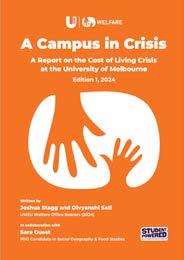
Victorian State Government’s ‘race to
the
bottom’ Expansion of Police Search Power ‘puts communities at risk’
Sabine Pentecost
Victoria Police’s (VicPol) weapons search powers have been expanded under new amendments, sparking concerns that the State Government is putting marginalised communities at risk.
In a batch of crime and policing initiatives announced 13 March, the Victorian Labor Government proposed amendments to laws regulating designated weapons search areas. These amendments have since passed in the State Parliament. The
changes allow police to declare a location as a designated area for up to six months, up from the previous maximum of 12 hours, and to decrease the mandatory public notification period from 10 days to 12 hours.
Designated areas can be declared when police are concerned that violence or disorder is likely to occur within a certain location. Within these areas, police have expanded search powers which eliminate the need for reasonable suspicion to

search individuals.
The amendments also change the guidelines for identifying a designated area, as the Chief Commissioner is no longer required to cite previous incidents as probable cause for concerns of weapons and disorder.
Under the previous regulations, details of designated areas were required to be published in a Victorian newspaper, as well as the Government Gazette. These regulations have also been amended, replacing the need for newspaper publication with notices on the Victoria Police website.
‘Reducing dissemination time for designated area details could impact community awareness of active search zone whereabouts, and of individuals’ rights within them.’
This new batch of laws align with the Allan Government’s tough-on-crime approach which has included what they claim to be the ‘toughest bail laws in Australia’ and $727 million to ‘ramp up’ capacity of prisons and youth justice centres.
According to Minister for Police, Anthony Carbines, police powers are being expanded to ‘keep Victorians safe’. This follows 14,797 knife seizures by VicPol in 2024, an increase from the previous year’s 13,063.
Greens State MP for Richmond, Gabrielle De Vietri, believes that ‘these kinds of indiscriminate stop and search powers are discriminatory and anti-democratic’, and communities, particularly racialised and low-income groups, are put at risk by shortening the period between notice and the designated search areas coming into effect. Reducing dissemination time for designated area details could impact community awareness of active search zone whereabouts, and of individuals’ rights within them.
‘These laws should not be there to try and catch people out with a weapon,’ Ms De Vietri said, commenting that details should be widely communicated so that communities can take appropriate measures and understand their rights.
In designated areas, people have different rights than under regular circumstances.
Officials have the power to stop and search any person for weapons. This includes anything or any vehicle in the possession of that person.
Individuals may be given a ‘pat down’ search or searched using an electronic wand, and they must cooperate with that search.
It is an offence to fail to comply with, or to obstruct or hinder a search.
The Greens are concerned that community members in frequently targeted areas across Victoria will be unaware they are in a designated area due to the new reduced publication times and may attempt to deny search requests.
‘It can really snowball if a community is not aware of these new rules,’ Ms De Vietri said. ‘If you refuse to produce ID, you can be arrested. Then, if you resist arrest, then you can be charged.’
When a designated area was declared in their electorate on 5 March , Ms De Vietri alerted her community of the details via Instagram.
She also raised racial profiling concerns, citing findings from the Centre Against Racial Profiling that Aboriginal people are 11 times more likely to be searched than white people.
Ilo Diaz, a representative from the Centre Against Racial Profiling, shared that the expansions of police power are a ‘massive intrusion into people’s right to privacy’ that will cause racial profiling.
‘They don’t work, and they harm our communities, particularly communities of colour,’ he said.
The Centre Against Racial Profiling has published findings on their website revealing that although rates of weapons found in searches of racialised groups are roughly equivalent to, or less than, the search find rates of white people, these demographics are more likely to be overrepresented in searches, evidencing VicPol’s
The Centre Against Racial Profiling has published findings on their website revealing that although rates of weapons found in searches of racialised groups are roughly equivalent to, or less than, the search find rates of white people, these demographics are more likely to be overrepresented in searches, evidencing VicPol’s systemic racism
systemic racism and profiling.
Mr Diaz stated that designated areas should not exist due to these harms.
‘There is no middle ground to this legislation. There is no better way.’
In a statement to The Age, Deputy Commissioner of Regional Operations Bob Hill stated that ‘These searches are all about protecting the community – if you are not carrying a weapon, then there’s nothing to worry about.’
Mr Diaz countered this statement by highlighting the long-term effects of negative police contact on racialised communities.
‘It causes more trauma on someone who already doesn’t have a good relationship with police, and these designated areas, they’re targeted at exactly these cohorts,’ he said.
The State Government’s decision to extend the maximum declaration period could allow these communities to be targeted by police over a prolonged time frame.
Ms De Vietri said this decision by the State Government points towards further
expansion of police powers in the future.
‘The Labor State Government is very much at the beck and call of this race-tothe-bottom approach to law-and-order. They are trying to look tough on crime, and in the process, they are doing a lot of damage to the community,’ they said.
Mr Diaz has stated that the Centre Against Racial Profiling will continue to disseminate information about active designated areas in Victoria to promote community awareness under the new amendments.
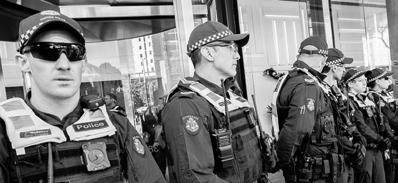
Police Shooting of Somali Refugee Highlights Criminalisation of Melbourne’s Western Suburbs
Audrey McKenzie
Victoria Police’s shooting of Abdifatah Ahmed, a Somali refugee experiencing homelessness and a mental health crisis, has stoked criticism of over-policing in Melbourne’s western suburbs.
Around 9 pm on 17 April, two police officers responded to a triple-zero call which reported a man armed with a knife around Footscray Plaza.
Upon arrival, 35-year-old Somali refugee Abdifatah Ahmed allegedly ran at the officers with the knife. In response, police fatally shot him.
According to The Age, a witness estimated six to eight shots fired by police. The Coroners Court of Victoria heard the confrontation lasted 11 seconds. The officers did not use pepper spray prior to deploying their firearms, says police. The Police Association of Victoria claims the officers did not have Tasers.
In a prior encounter with Ahmed, police had used pepper spray to try and sedate him. His death follows the recent non-fatal shootings of a 33-year-old Doveton man on 29 March and a 29-yearold woman in Mulgrave.
In 2021, Victoria Police promised to dedicate $214 million to arming all
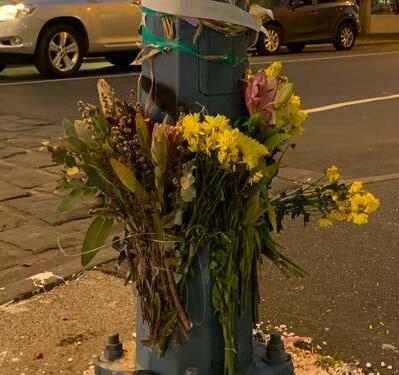
Impromptu memorial dedicated to Abdifatah Ahmed, located at the intersection of Paisley and Albert Streets in Footscray
Photography by Sophie He
frontline police with Taser technologies. Currently only 60 per cent of the force has access and training.
The night following Ahmed’s death, a snap vigil was held at Footscray Plaza. For its participants, the vigil was an opportunity to grieve and express disappointment in Victorian institutions.
On 22 April, hundreds in Footscray marched in protest. Mostly peaceful, the demonstration included a physical altercation between a few protesters and police.
Ahmed’s death occurred in the week following VicPol’s announcement of a public crackdown on crime in Footscray, which had already commenced and resulted in arrests. VicPol announced on X that ‘Uniform police, the Public Order Response Team and the Dog Squad will be out in force in Footscray over the coming weeks, as Victoria Police runs a series
of operations in the area’ and directed viewers wanting further information to a now-broken link on its website.
The efforts intended to ‘build better relationships with locals and traders in the area’.
Police claim Ahmed’s death was not racially motivated.
The Victorian Socialist Party have connected the area’s criminalisation with its large migrant community.
A traditionally working class area, in 2024 Footscray had the highest number of recorded criminal incidents in the Maribyrnong council area, according to Crime Statistics Agency Victoria. The suburb’s rates are higher than both second (Maribyrnong) and third place (Braybrook) combined. Members of the Footscray community have repeatedly condemned the area’s ‘over-policing’, arguing investments should
go toward public housing or mental health crisis support.
Despite Melbourne’s western suburbs having some of the highest levels of homelessness in the state, the Victorian Labor government has set a number of public housing buildings up for demolition. Additionally, they have confirmed the further privatisation of redevelopment in North Melbourne and Flemington. These decisions have been made despite Victoria’s rental crisis.
Ahmed’s death was referred to Victoria Police’s Professional Standards Command and is now facing investigation, as is protocol in the event of a fatal shooting. It is yet to be seen whether this death, and the outcry surrounding it, will result in fundamental changes to policing and government policy.
Shincheonji: the Cult Promising Truth on Australian University Campuses
Anna Lau
Content Warning: cults, psychological coersion
In a world full of disinformation, at the core of the extreme ideologies infringing upon the mainstream is a promise: ‘we have the truth.’ This is what university student Joel was promised when he was approached by Shincheonji (SCJ), a religious sect which has been labelled a cult.
A Local Phenomenon on a Global Scale
Founded in 1984 in South Korea, SCJ is a registered non-profit charity under the Australian Charities and Not-For-Profits Commission, circulating not only in Melbourne but also worldwide.
Initially supporting a nervous friend who was interested in joining, Joel underwent three to four months of Bible studies with SCJ. At first, he thought it was harmless, but this perception quickly changed as he was invited to more sessions.
‘SCJ at first glance appears … to be another sect of Christianity that is intensely focused on Biblical study and knowledge

Art by Anna Lau
‘They’ll talk about how Satan will come and deceive you now that you’re coming here to discover the truth’
of the truth,’ Joel says. ‘These two-to-threehour classes required attendance three times weekly and pushed for their priority over family, work, religious, social and personal commitments. Their teachings encouraged social isolation from everyone. They taught prioritising [SCJ’s] studies over church, family, friends, work and any other obligations.’
David, a pastor at CrossCulture, works closely with high school and university students and has seen these tactics in action. Warned about SCJ when he first became a pastor, David didn’t expect his own students to have already encountered them.
‘Being a worker in religion, I had known of cults before,’ David says. ‘Surprisingly, six months into the role, people started coming to me and telling me about their experiences, or certain groups they had joined, or Bible studies they were part of.’
Not Like the Other Churches
SCJ attracts involvement through intense, high-commitment teachings. According to David, the group operates with a logic of secrecy which gradually reveals Jesus’s return. They claim that following Lee Man-Hee, SCJ’s founder, will guarantee
salvation. This is not revealed to newcomers immediately. They start by focusing on the parables of Jesus, implying there is a hidden meaning to gauge the newcomer’s faith.
‘They’ll talk about how Satan will come and deceive you now that you’re coming here to discover the truth,’ David says. ‘They’ll say things like, if a friend tells you not to come here, that’s Satan deceiving you. If your parents say this is not good, that’s Satan deceiving you.’
SCJ employs further strategies to maintain coercive control over members, such as physical exhaustion and sleep deprivation. As a Christian youth minister, David expresses that such abusive behaviour is a deviation from Christianity. ‘I would say I was pretty angry about it, just because of the deception and the harm that it causes to people, how they’re essentially hijacking religion.’
‘On the flip side, I think it shows that as humans, we’re searching, we’re looking. As much as we want to believe everyone, everyone needs to figure it out themselves,’ David says, ‘Your life belongs to God, not to an institution.’
David urges his students to ‘question everything’.
Certainty in an Uncertain World
With recruitment methods ranging from contact on university campuses, dating apps and Discord servers, SCJ recruits from a particular demographic of people.
‘They target young, lonely, trusting, faith-searching individuals – all of these terms were directly used to describe myself or others by recruiters and teach-
ers,’ Joel says. ‘Once a relationship of trust is built by conventional studies, more dangerous, dogmatic, isolating and unbiblical teachings are integrated to uproot a person from all of their support systems and completely rely on, trust and work for the cult.’
‘They target young, lonely, trusting, faith-searching individuals --all of these terms were directly used to describe myself or others’
With younger generations experiencing an epidemic of loneliness, this makes groups like SCJ all the more dangerous. When the desire for truth is manipulated, it becomes a tool of coercion as influence transforms into pressure.
David says that the truth is not something that is told to you, it’s something that you have to find yourself: ‘You have to be cautious when something doesn’t give you freedom to do that. We have great capacity for good, but we also have great capacity for evil. We can use power for good things. We can also use power to abuse and control. I think cults are one of the most evil expressions of that within religion. It’s not just religion, it happens everywhere. Any ideology can lead to this.’
Hired or Tired?
Gen Z’s Struggle for Jobs in Victoria’s Creative Industries
Megan Nicole Yin
Interest in the creative industries have been thriving in Victoria, with growing public engagement and shown signs of recovery from the pandemic. But for many recent graduates, employment in the creative market remains a challenge. Structural barriers, fierce competition
and limited entry-level roles have made it difficult to translate passion into stable employment. Creative Victoria noted that as of February 2025, the sector employed approximately 327,362 individuals, accounting for 8.7 percent of the state’s total workforce. This marks a recovery from the pandemic-induced decline observed in 2020.
Creative Victoria’s employment’s data report showed that starting 2022, the arts experienced growth which exceeded pre-pandemic numbers. The same report outlines the broad field of what creative industries comprises: architectural and other design services; broadcasting digital media and film; computer system design; creative and performing arts and publish-
ing and print media.
This growth has been uneven. Notably, the computer system design services sector has experienced significant expansion, increasing from 82,105 workers in February 2020 to 105,150 in February 2025, as stated in the same report by Creative Victoria.
While sectors like computer system design have expanded in Victoria, others continue to struggle. In 2024, the Australian publishing and print sector experienced a significant decline, particularly affecting journalism, which the Australian Bureau of Statistics classifies as a creative industry. Nine Entertainment, as reported by the ABC, announced plans to lay off up to 200 employees — half from its publishing division, eight from television news and current affairs, and the remainder from digital and head office operations, primarily due to redundancies.
According to the Media, Entertainment & Arts Alliance (MEAA), with the growing use of unregulated artificial intelligence (AI) in newsrooms, job losses in the industry are expected to continue. In a recent survey, 59 per cent of MEAA members reported extreme concern about AI-related job losses, highlighting widespread unease over the technology’s impact on journalistic employment. Likewise, Australian Community Media announced in January this year that up to nine staff members from its print production team would be made redundant. The article also included that these cuts were preceded by ‘ACM axing 35 jobs across 11 newsrooms’, and eight newspapers who had their printing halted.. In August 2024, the company also ceased printing several regional New South Wales publications, such as the Moree Champion and the Tenterfield Star, resulting in layoffs of both photographers and journalists.
While newsrooms in Australia grapple with uncertainty, fresh graduates in graphic design are competing against many others for a limited number of stable positions, leading to significant employment challenges. Data from Jobs and Skills Australia shows approximately 27,500 graphic designers employed nationwide, many working part-time, indicating a shortage of full-time, secure roles in the industry.
Giona Wong, a honours graduate from
RMIT, recalled feeling a sense of dread as she neared the end of her university studies. She was constantly hearing about the difficulties of finding a job in Melbourne, which only fueled her anxiety about the job search. She had hoped that her dedicated participation in an unpaid internship as part of her course would lead to a full-time offer, but that turned out different from what she hoped.
‘I was shocked to find out that graduate programs were not for fresh grads with zero experience. It was more for fresh grads who had already been working for years’
This was the beginning of her arduous job-hunting journey.
Giona and her friends soon realised that job hunting in their niche field came with more stringent requirements, where securing a role often depended on having the most polished and experienced portfolio.
‘Previously, I thought junior roles were meant for fresh grads with little to no experience … I was shocked to find out that graduate programs were not for fresh grads with zero experience. It was more for fresh grads who had already been working for years and were really good at what they were doing. I realised I was a bit too naive, and landing a job was way more difficult than I anticipated,’ she shared. Junior roles required five years’ experience.
After a year of searching on and off, while taking on freelance work in her hometown of Hong Kong, Giona Wong sent out applications for around 80 roles in Victoria. Only five resulted in interviews, but none led to an offer. She added that, ‘people usually need to apply to at least 200 to 300 jobs in order to have the potential of getting an offer in graphic design.’
However, the exhaustion from constant
rejection and searching began to take a toll.
‘people usually need to apply to at least 200 to 300 jobs in order to have the potential of getting an offer in graphic design’
‘I felt like I was just sending out applications into a giant blackhole. Living with imposter syndrome, every day was a battle for me. Every time I was trying to be confident and convince companies that I am good enough, I felt more and more doubtful about my capabilities. I felt like I was lying and bluffing all the time, and I felt disgusted by myself.’
Tired, Giona decided to move back home for better job opportunities. In comparison to Melbourne, over the span of two weeks, she gained three interviews, two job offers and is now working as a graphic designer for an events management company.
Meanwhile, as the demand for arts and culture in Melbourne grows, with 99 percent of Victorian adults (aged 18 and above) engaging in at least one such activity over the past three years, according to Creative Victoria’s Audience Atlas Victoria 2024 report, it questions why it is a struggle to secure stable opportunities in these fields. The report showed evident engagement in film, museums, commercial theatre, visual arts and live music. Despite the interest, there have remained relatively stagnant employment trends in recent years, as reflected in Creative Victoria’s employment data, for performing arts, broadcasting, digital media and film.
Fine Arts honours graduate from the University of Melbourne, Keisha Yan, said, ‘The creative industry in Victoria definitely feels like it’s stagnant, at least to me. Even getting internships or volunteer positions at institutions, smaller businesses or galleries is almost impossible.’
Keisha said that after applying for National Gallery of Victoria’s role for the Fundraising Projects and Communica-
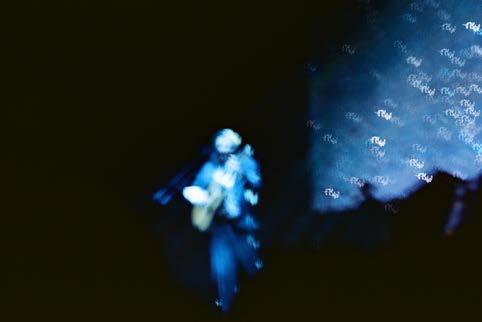
tions Assistant role, she received an email reading , ‘We received a large number of applications for this position, and the calibre of the candidates uniformly high, which made the short listing process especially competitive’ and ‘given the number of applicants received for this particular role, we are unable to give feedback for unsuccessful applicants.’ This email suggests an increase in applications that have made it difficult to accommodate a new intake.
‘I felt like I was just sending out applications into a giant black hole. Living with imposter syndrome, every day was a battle for me.’
Employment opportunities within the fine arts sector remain limited. Recent job postings reveal a modest number of available positions; for instance, as of 27 March 2025, SEEK lists fewer than 70 fine art-related jobs across Melbourne.
‘Your opportunities are generated by networking, so if you don’t have the ad-
people in that process or chain.’ Victoria’s creative job market presents a contradiction: while demand for arts and culture continues to grow nationwide, securing stable employment in the sector remains challenging. Yet stable employment opportunities are scarce. Many young creatives, like Giona Wong and Keisha Yan, face significant barriers to entry, from high experience requirements to a reliance on networking that often excludes newcomers. The struggle to secure roles has forced some to seek opportunities elsewhere, raising concerns among students considering a career in the creative industry about the sustainability of creative careers in Victoria.
by Felicity Bayne
vantage of knowing somebody who works in an institution or gallery, you’re going to get last pick when the ad goes on Indeed. Whilst I don’t necessarily think this is bad, or out of ill will, I will say it makes the industry quite impenetrable, especially to international students,’ Keisha added.
With not many opportunities left for graduates, and new artists entering the industry, Keisha has found hope for the creative space growing in Victoria.
‘I have met people who have found success reintegrating with the art industry from other industries or roles. I have met people that are able to market their own skills well enough to create their own opportunities. It doesn’t work all the time, and requires a good balance of confidence, marketable skills, and perseverance, but I have seen people do it.’
She believes that artists should stay motivated.
‘I think highest on my list is the emphasis of ethics and community in the arts, which is far rarer in corporate alternatives. There is a lot of involvement one gets with the process and products of their labour, and that tangibility is important to me. It’s a lot easier to visualise, comprehend, or value meaning in what you’re doing when you can fully see all the
As I spoke to Keisha and Giona, resilience remained a defining trait of those in the creative industry. While structural challenges persist, individuals who can market their skills, adapt, and persevere have found ways to carve out opportunities. Aspiring to be in the creative industry myself, it feels almost like a given that creatives will not attain financial security unless we win a global award. But I think being in the creative field guarantees fulfilment. The sense of community, engagement going beyond the monetary value.
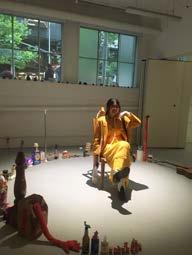
Photography
Keisha Yan with their installation “3 o’clock” Courtesy of the artist
Creating Community for Mob on Campus
An Interview with a Murrup Barak Student Ambassador
Farrago interviews Murrup Barak Student Ambassador Liv Ward, discussing the centre’s resources, new Mentor Group initiative and how First Nations students can get involved.
Sabine Pentecost
Preparing to start my undergraduate degree, I was scared shitless. I worried that all the support systems I had taken for granted during my previous schooling would fall away and leave me treading water at uni. I wasn’t aware at that time that as a First Nations student, I was able to access an incredible community of academic, cultural and social support through Murrup Barak; a community that every First Nations student should be aware of and utilising at the University.
Murrup Barak, the University of Melbourne’s centre for Indigenous students, is located on Level 6 of Building 168 (the same building stop-off for Farrago-ians and Ida Bar-flies alike). This is a new location in 2025, featuring upgraded and expanded facilities for students and staff. Murrup Barak has been instrumental in many Indigenous students’ transitions to UniMelb, including myself, with support starting before the first semester.
A few weeks before my first semester began, I attended Murrup Barak’s Dhumbali orientation camp. ‘Dhumbali’ means ‘commitment’ in Woi-wurrung language, and this camp helped to foster a commitment between Indigenous students and staff at the University. Dhumbali allows students to stay on campus and bond with their peers before semester, and provides support for getting one’s head around the uni’s administrative system.
These few days allowed me to settle into a community before I was flung into the deep end, and I cannot understate how invaluable that opportunity was. I still lean on the connections I made during that camp, and I learnt skills that allow me to effectively ask for help and feel confident in my place as a student.
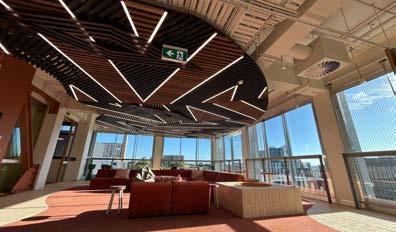
During semester, the community continues with regular events and opportunities which foster a home for me at the University. Even if I’m just passing through between classes, I know I can always chat to someone and make a cup of tea on the go. It’s easy to feel lonely at uni and having a place where community lives and thrives is transformative to the campus experience.
Murrup Barak also employs a group of Indigenous students to be Student Ambassadors. These Ambassadors support their peers while facilitating programs for them. Wanting to know more about the students who uphold the community I value so deeply, I spoke to Liv Ward, a second-year student and a 2025 Student Ambassador, about her experience in the role and her perspective on Murrup Barak as a student resource.
‘MB [Murrup Barak] offers a lot to Indigenous students, including ITAS, which is our tutoring program, and food support, whether it’s at lunch on a Tuesday
or food support like pasta and sauces to go make dinner tonight if you haven’t got the resources,’ she says.
Though, the support of Murrup Barak isn’t just about the services, it’s also the atmosphere.
‘It’s a homely environment that people can come to and escape the stress of uni,’ Liv explains. ‘For me, especially, I find that coming up here, away from the rest of uni, makes me feel back at home.’
One of the major components of this homely environment is the staff.
‘The staff really push you to get to know them and find ways to make sure that everyone feels included.’ She says there is always someone to say ‘hey’ to when you come into the space.
Liv tells me that she was motivated to become a Student Ambassador by the incredible Ambassadors who supported her in first year.
‘Honestly, without MB, the transition would have been really, really, hard for me.’ She wants to make sure that new stu-
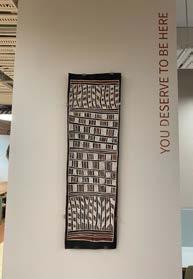
dents feel listened to and welcome at uni.
‘I really try to get around the fresh first years as much as I can, because I know that that was what helped me last year.’ Liv tries to act as a trusted friend for first years to come to and feel supported.This year, Murrup Barak has introduced Mentor Groups. This initiative sees new students assigned in small groups to a Student Ambassador who checks in with them regularly and supports their transition in first year.
‘I think it’s helping a lot of first years to have someone that they know they can go to, someone that will organise events for them to go to and make connections,’ Liv says.
The Student Ambassadors are not just there for new students. Approaching staff can be intimidating for everyone and Ambassadors are there to bridge the gap between students and staff, providing a comfortable space to express needs or concerns, and fostering an inclusive environment at Murrup Barak.
Mob lunch on Tuesday afternoons is a great way for Indigenous students to connect at Murrup Barak, particularly as social opportunities shift intensely between high school and university.
‘Having that secure group that I can come to every Tuesday and feel like I connect to something, was really helpful,’
Even if I’m just passing through between classes, I know I can always chat to someone and make a cup of tea on the go. It’s easy to feel lonely at uni and having a place where community lives and thrives is transformative to the campus experience.
Liv shares.
Liv says that although it might be scary in the moment, ‘taking the first step into MB means you’ll be greeted by a bunch of people who are lovely and will want to support you and make friendships with you.’
If you’re a First Nations student, come on down to Murrup Barak and utilise the amazing new space and resources available for mob! I hope to see you at Tuesday lunches for great yarns and great food.
If you know any First Nations people who may be interested in starting a degree at UniMelb, direct them towards the team at Murrup Barak so that they can help facilitate a smooth transition for mob starting on campus.
An Incomplete List of
- Study spaces
- Fully stocked kitchen
- Free printing
- University gym and pool access

- Weekly catered lunches (Tuesdays 12-1pm)
- Weekly study nights (Thursdays 6pm)
- ITAS student tutoring program
- Grocery support
- Dhumbali and Yagilaith camps
- Exchange program support
- Sport opportunities (including mob basketball and netball)
Murrup Barak’s Services:
Crisis: NUS Education Conference 2025
Mathilda Stewart
Farrago would like to acknowledge that EdCon was held on stolen Ngunnawal and Ngambri lands. We pay our respects to Elders past, present, and emerging. Sovereignty was never ceded. Always was, always will be Aboriginal land.
Intro to #nusedcon25
In late June my fellow Farrago editor Sophie and I had the (dis)pleasure of travelling to Canberra for the National Union of Students’ Education Conference, known more commonly as EdCon.
This year’s EdCon took place at the Australian National University’s Acton campus and was notionally organised around the theme ‘Crisis’, “dedicated to fighting for students’ rights and welfare.”
For the uninitiated, the National Union of Students (NUS) is the peak representative body for tertiary students in Australia and is made up of around twenty affiliated student unions, including the University of Melbourne Student Union (UMSU). The NUS holds two main conferences a year: National Conference (NatCon) in December to set policy and Education Conference in June to discuss education policy — or alternatively as a midyear opportunity for hacks to get pissed.
Monday began with registration at the ANUSA offices before we all migrated to the HC Coombs Lecture Theatre. Farrago was informed that the NUS General Secretary Aidan O’Rourke (SU, UTS) had neglected to book a Welcome to Country as planned. Great stuff.
NUS Education Officer James McVicar (SA, RMIT) opened the conference, arguing that Palestine is the “central political question for millions of young people, students, all around the world and a litmus test for progressive politics all around the world.”
Describing how universities in Australia and internationally have become central sites of political repression, James argued that Australian student union and the NUS are faced with an ‘existential question’ and that the NUS should host a press conference condemning Labor’s support of Trump’s bombing of Iran.
Following James’ speech, it was made almost immediately clear by Student Unity (Labor Right) that a press conference would not occur with their permission, and that it would not occur on the ANU campus.
While National Labor Students (Labor Left) had initially stated they supported press con-
ference, their factional leaders almost instantly backflipped to argue that a press conference would be harmful to the NUS’ press relationships, and that last year’s press conference at EdCon in Perth “burned a lot of bridges.”
Tuesday began with a 59 second press conference, scheduled for 08:00 am on the corner of a nondescript building, thankfully separated by a road (and pouring rain) from the ANU campus itself. The press conference was delivered by James and NUS President Ashlyn Horton (NLS, ANU), with no members of the press or Unity in attendance. Nonetheless, Trump announced a ceasefire with Iran within hours. Truly a testament to the NUS’ outsized influence within global affairs. Unfortunately the ceasefire failed to last a week.
The first plenary of Tuesday, ‘What’s Wrong with our Universities, and What Can We Do About it?’, was delivered by Rod Lyall, an alumni of the Australian Union of Students, a precursor to the NUS. Rod spoke about the neoliberalisation of the higher education sector in Australia over the past half century and questioned whether the NUS was properly representing students’ interests.
Tuesday also saw one of the only memorable moments of clear discussion from the conference in an afternoon workshop on Australian universities’ ties to weapons manufacturers, where ALP students from multiple factions engaged in discussion about organising within campuses, unions, and branches to support Palestine, regardless of the party’s position.
The highlight of Wednesday was without doubt the afternoon plenary on housing policy from Victorian Socialist senate candidate, TikTok personality, and founder of shitrentals.org Jordan Van Den Lamb/purplepingers.
Jordan began by outlining the history of housing inequality in Australia, beginning with invasion by European settlers. “We’ve had a housing crisis for a long time, it’s just particularly stark right now.”
He rejects the argument that the housing crisis is an issue of supply and demand. He argues that capitalism creates the illusion of housing scarcity to drive profits. “In Melbourne alone there are 8000 apartments that have been completed in the past 2 years that developers can’t sell because they won’t make enough profit.”
Jordan described the Housing Australia Future Fund, a scheme established by the Albanese government in 2023, “as a gamble on the stock
market to give money to developers, not to build public housing... to build social housing that is expensive and unaffordable.”
Asked by a student from NLS what could be done to solve the housing crisis in Melbourne, Jordan is clear. “Build public housing.”
Given the opportunity to ask a question students from Unity invariably spoke in simlish, a South African accent, and asked SA if they had built any houses themselves.
Thursday’s first plenary was from organiser Stephen Donnelly. Formerly the assistant secretary of Victorian Labor, he is the founder of community organising agency Dunn Street, named for his family’s childhood public housing estate. (The jokes write themselves!)
While Donnelly referred to himself as “a trade unionist and Labor party activist”, he neglected to mention his senior organisational role in a 2014 scandal where Labor were found by the Victorian Ombudsman to have used $400,000 of taxpayer funds through MP offices to campaign for the state election.
Donnelly encouraged students to engage with constituents and their communities, and to “take clear action together.” Given his stellar credentials, Donnelly’s talk was disappointingly Chat-GPTish.
Thursday ended with a plenary titled ‘Queer Office: The NUS’ Role in Defending Trans Rights’. Having fought to sit on the panel, Deakin University Student Union (Burwood) Queer Representative Clarity James told me afterwards she was ignored and dismissed because she was not Labor or Socialist Alternative aligned.
Clarity explained that while everyone in attendance agreed more need to be done for trans students, argument between Labor and SA students and their resistance to hear voices of a third party resulted in a failure to discuss in any depth issues faced by trans students, or to listen to the voices of trans students present. Tired of being ignored, Clarity eventually walked from the plenary, followed by students from NLS.
Goodbye Canberra
The symbolic pulling of quorum that concluded EdCon 2025 reaffirmed my belief of three mutually reinforcing realities I’ve come to understand about the National Union of Students: that it is needlessly bureaucratic, that it consistently fails in its stated goal of representing tertiary students, and that participation as a student is virtually impossible without being affiliated with either Socialist Alternative or either Labor faction.
While students may be most familiar with academic staff, the University of Melbourne is maintained by countless workers who service, clean, patrol and administer its the infrastructure, allowing so many of us to learn and research.
Today I’m sitting down with Jackie, a Student Library Assistant and parttime honours student, studying ethnomusicology.
Jackie’s role is casual, and her shifts are split between the Southbank Library and the Architecture, Building and Planning Library, on the Parkville campus. “Some weeks I might get one or no shifts, other weeks I might get four or more.” On average, they estimate around two shifts a week, depending on the time of semester.
As a casual worker, Jackie is also one of many staff impacted by the university’s widespread increased casualisation. “The casualisation is the worst part,” she admits. “Not knowing how much work you’re going to get, especially around the quieter times of year outside of the semester.” “The university keeps cutting hours without consulting staff and [this] has made everyone’s workload a lot higher and more difficult to deal with. The cutting of hours also affects the livelihood of staff as many of us use the income from this job to pay for things like bills and rent. If we’re unable to rely on consistent enough income then people begin having to look elsewhere for that consistency.”
As a member of the National Tertiary Education Union, Jackie has been involved with a campaign around superannuation. “For a while the university was not paying any casual library
staff superannuation on evenings or weekends.” “Now, library staff get paid superannuation for all hours worked. Or atleast, we should be!”
Despite structural issues, there’s a warmth in how Jackie describes their day-to-day experience. “People are grateful for the work that we do and I feel like it’s hard to be upset when you’re at a library.” “Students are al-
things slightly outside of the library purview - like helping someone to read a short section of sheet music or giving feedback on a design choice or suggesting a good practice room for an impromptu rehearsal.”
The only minor frustration? Students lingering a bit too long after closing time. “It’s not a huge deal, but it means we end up working a little bit
WORKING PROGRESS
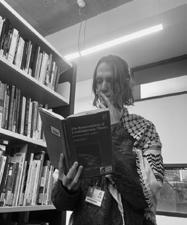
ways grateful for help, especially with things like referencing and finding resources.”
“One of the most important parts about our role is being a friendly face for patrons and students. Having someone who’s kind and approachable – and has been in your position before, not too long ago probably – is really important, especially for new students or people who might not be as familiar with the university or library. I’ve helped students with anything you can think of at the library, but also with
Jackie, Student Library Assistant
Mathilda Stewart
of unpaid overtime and going home later than we should be.”
Having worked at the library for a year and a half, Jackie hopes to continue. “It’s a lovely job and a really lovely community of people. I really like helping patrons access the resources they need.”

Photojournalism Feature: NAKBA DAY 2025

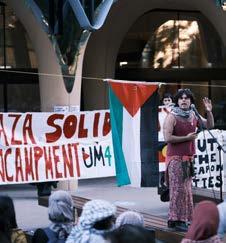

David Lu
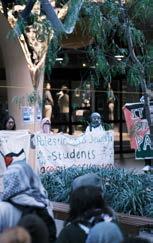

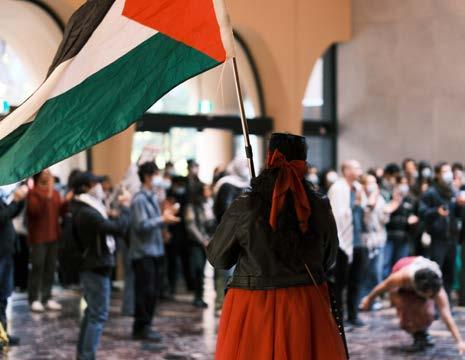
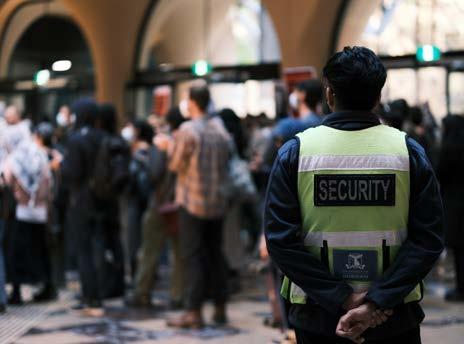
Thinking Campus? about Getting Wet on
A UniMelb Shower Review
Farrago writer, resident weirdo and squeaky-clean-guy (who has asked to remain anonymous) reviews Parkville campus showers to deliver hard-hitting journalism about the best places on campus to get wet!

Stop 1 Ground Floor: 4/10
Given this was my first time getting naked and wet on campus, I went in with no expectations and somehow still left disappointed! The experience left me quivering and moaning ... because the water was diabolically COLD! It gets a few points for the fold out bench which kept my clothes somewhat dry. But midway through the shower, the tiles resounded with a sickening crack (not the type of crack I like. But hey! At least it got me wet!).
Design Basement: 8/10
Nona Lee Sports Center (Mens): 7/10
I turned on the tap expecting the same chill, but I was pleasantly surprised by the warm watery embrace erupting from the shower head. I dried my feet on the scratchy brown carpet and noticed that the showers were completely open to the changerooms - a pristine spot if you’re also into exhibitionism!
The Design building’s shower/wheelchair accessible bathroom is located in a nook in the basement. I was initially apprehensive about making a mess of the bathroom but was glad to discover that the splash zone was fairly conservative. Other than the strange yellow stains on the curtain and the occasional passer-by, this is one of the better spots, with enough space (and a bench) should you choose to make this a communal activity.
Dax Centre Car Park: 7/10
Looking for a quick refresh after a long, hard, bumpy ride to campus? Look no further than the Dax Centre showers, located in the basement car park. Sensitive to even the slightest movement, the overhead lights turned on as soon as I walked in. Upon entering, the shower is immediately exposed with no shower curtain (you gotta warn a guy!). The waterworks were fairly underwhelming.
Mechanical Engineering Ground Floor: N/A
Given the building inhabitants’ unwashed allegations, I was shocked to find a wet puddle, suggesting recent use. The shower floor sported sickly green tiles reminiscent of your grandmother’s bathroom, last re-modelled circa 1960. After spotting a strange mould on the bench, I simply couldn’t bring myself to soak myself in soapy suds. Not because I was anti-fungus but because I was afraid a rare strain of stachybotrys would infect my mind and compel me to campaign in the UMSU General Elections.
Your Shower: 9/10
I crept in while you were asleep and gave this famous shower a good whirl. Water pressure needs improvement but bonus points because I thought your soap tasted really nice.

1. Bring a bag for your wet items. I’m always accidentally slopping my towels into suspicious puddles of idle water. I’ve quickly learned it’s best to bring a bag to keep them separate from the dry stuff.
2. Bring thongs (I was raw-dogging these showers with my bare little footsies until the entire Farrago office shamed me for being a ringworm-prone freak. What can I say? I put the ‘fun’ in ‘fungal’! But my editor Sophie has demanded I provide a safe-shower notice, a PSA that athlete’s foot is not cool and a link to the national hotline at 1800-TINEA).
3. Personally, I showered with scuds of bar soap I found mashed in the drains. But once again, my editor is telling me to tell you to bring your own soap, loofah and shampoo.
The Russian House
A glimpse into the heart of Melbourne’s Russian cultural heritage.
Michael Maynard
Halfway down Greeves Street, in a quiet nook of trendy Fitzroy where light falls dazzlingly through the elms and the magpies make rambunctious chatter, you will find the Russian House. Though I’m not sure why you would be looking. Few do, and you can see it on her face. She looks ancient, grey, serious, her six street-facing windows staring sternly down at passersby. But this austerity is undercut by graffiti—some arsehole’s scrawled tag and a scattering of variegated 2D penises.
What is this place? A plaque lets us know that the Russian House was once the Collingwood and Fitzroy United Friendly Societies Dispensary, a slice of information that would likely be quite interesting, except I don’t know what a dispensary is and ‘friendly societies’ sounds almost oxymoronic. Through an upstairs window I make out the shadow of a chandelier and momentarily picture a ballroom full of elderly Russian expats, the women in sumptuous, Tolstoyan gowns and the men in Imperial tunics. This image, ignorant and inane, vanishes as a Corolla pulls up behind us and begins to park.
‘Stereotypes, Michael. Stereotypes,’ I remind myself, loitering by the gaping front door. Because I know that, whatever it may look like, the Russian House is more than a relic. After all, I was invited here. By signing up for Russian 1 this semester, I have apparently unwittingly attracted the attention of Melbourne’s Slavic émigré community. Already I have been told to join the Slavic Students Club and obeyed. (My protestation—that I was no more Russian than a Vodka Cruiser—was warmly ignored.) Now they have invited me to a student party, held at this funny old building, the Russian House, and I am trepidant and excited in equal measure. I have even brought along a friend, Oscar, for emotional support. He is not studying Russian. I chose him because a) he has

a wonderful habit of relentlessly asking questions, which I am hoping will liberate me from the need to fraternise awkwardly with strangers, and b) because nobody, absolutely nobody else would agree under any circumstance to attend this Russian party with me1
‘Shall we head in?’ Oscar says. And we do.
Inside, the House is far more spacious than I had anticipated. Someone informs me that there really is a ballroom upstairs,
but I don’t see it. I’m too timid to approach the staircase. Instead I mingle with Oscar. We chat to a towering gentleman of thirty or so. Gothic appearance: black trousers, shirt and shoes. A tumble of straggly ginger hair dripping down his shoulder blades. He shows us two diaries, one penned in German, the other in Russian, and explains that this is how he taught himself. What an excellent idea! Oscar and I agree when we have left him to refill our cups of (surprisingly yummy) mud-brown
malt soda, which apparently can only be purchased at a certain Russian mart in Bentley.
Then time for food! Pots of defrosting dumplings are rattling on the kitchen stove. We take a little of everything. Green gyoza, pork pastries and a shiny apricot bun for dessert. ‘Is this really Russian?’ I ask a similarly bemused Oscar through mouthfuls. I don’t think I have ever had Russian cuisine before, at least not consciously. I have never sat down in a Russian restaurant and ordered from a Russian menu. It occurs to me, a student’s indelicate observation, that Russia is one of only a few major countries more famous for its famines than its food.
Whatever ego I, a curious, self-satisfied English speaker, had upon entering the Russian House, dissolves in this whirlpool of unintelligible babble.
As soon as my appetite is sated and the paper cutlery binned, a small identity crisis ensues. Oscar has gone to the bathroom and everyone around me—even the tall ginger bloke—is conversing spiritedly in a tongue that I, alone, cannot comprehend. The sounds are horrid. Each sentence is spat out like a bad plum, replete with rollicking rs, weird oos and yahs. I think I hear someone growl. Whatever ego I, a curious, self-satisfied English speaker, had upon entering the Russian House, dissolves in this whirlpool of unintelligible babble. Discouraged and hardly thinking, I cross the yard and stumble through a low, solemn doorway into a room I have never seen before. Books, Russian books, as far as the eye doth stretch. I am about to take out my phone and snap a pic when a figure emerges from behind the door. He is old. His face is strikingly expressionless, except for the eyes, which betray a certain excitement at finally having a visitor in his library. ‘What is this place?’ I ask for the second time today.
His answer is staggering. According to the man, the room—one of dozens in this
unostentatious monument, the Russian House—is home to the largest collection of Russian-language literature in the Southern Hemisphere. I stare up at him, frog-eyed and fish-mouthed. His eyebrows stare down at me. Evidently, he understands how impressive this fact is and is pleased at this opportunity for dissemination. A moment passes in silence before he turns and totters back to his original position near the door, where he is presiding over an elbow-high stack of worn, ultra comprehensive-looking Russian-English dictionaries. There is a painting of a parrot slung on the wall behind him. Why?
Alone again, I wander down a dark alley. Bookshelves touch the ceiling and delineate a path. I pause every so often to take a title and run my index finger along its illegible—but nevertheless pretty—golden script. I am repeating this action absentmindedly for the fourth or fifth time when I become aware of people speaking nearby. It is the same language that just
Bookshelves touch the ceiling and delineate a path. I pause every so often to take a title and run my index finger along its illegible--but nevertheless pretty-golden script.
fifteen minutes ago terrified me so fiercely I was forced into hiding. But this is not coming from outdoors. The elderly gent, still guarding his pile of dictionaries, is speaking to a small, dark-haired woman. Though neither smiles once and they do not laugh, there is zero anger or intensity in their discussion, but instead a quiet good humour. Their chatter washes from

Photography by Emerald Stone
my memory the panic of moments earlier; it seems to contain some order, something I as a non-speaker can cling to. Russian no longer sounds frightening or even foreign. I eavesdrop with an outstretched ear, as though gleaning snatches of a beloved song overheard on a distant radio. What I hear is a kind of music, less staccato and more melodic than the sound I am accustomed to as an English native. Of course athis is the language of Anna Karenina, I
think to myself. How the hell else could Tolstoy have dreamed it up?
I ought to find Oscar and get him to Listen to this! But for whatever reason my feet are planted in the carpet and will not yield. This, I imagine, is the psychic pull of the Russian House, a locus of more than language. Surrounded by books and delicious foods, an uninvestigated ballroom still awaiting me upstairs, I am not sure I will ever leave.
1 An Average Conversation with a Stranger during O-Week:
‘What are you studying, M-…what’s your name again?’ ‘
‘Michael.’
‘...’
‘I’m studying Arts, majoring in English lit… and Russian.’
‘RUSSIAN??’
Pie in the Blue Sky? How Bluesky Promises Online
Consumers Choice, Clarity and Control
Subverting the corporate control and alogorithmic opacity of established social media platforms, Bluesky raises the possibility of a more democratic internet.
Maxwell Chong
The greatest app I ever used was taken down by greed. ‘Apollo’ was an app made by a former Apple intern named Christian Selig. It took Reddit’s mobile page, combined it with the best parts of the iOS aesthetic and presented it to users for free. The app was a vast improvement over the actual Reddit app, providing its content without annoying ads or sponsored content. Apollo’s operation ground to a halt in 2023, when Reddit CEO Steve Huffman announced that Reddit would be upping the prices for its Application Programming Interface, or APIs. The cost for running Reddit’s third party apps like Apollo became unfeasible, and Apollo eventually shut down. If you want you can still visit Apollo’s mangled corpse on the App Store. It stands, a digital monument to a corporation’s greed.
Social media exists in a state similar to Schrodinger’s Cat, being both the subject of discourse and the medium through which such discourse is possible. For every push, there is a pull: for every #MeToo, there are allegations of data theft, privacy violations, surveillance and censorship. Controversies include Facebook’s role towards unrest in Myanmar, or Tiktok’s alleged ties to the CCP. The company formerly known as Twitter has infamously become Elon Musk’s personal echo cham-
For every push, there is a pull: for every #MeToo, there are allegations of data theft, privacy violations, surveillance and censorship.
ber, filled with bots, trolls and right-wing speech, designed to stoke the flames of hatred in sad people. Social media has enabled many discussions to take place around the world, but as a consequence users place their trust in the hands of technological oligarchs, who are far from the unbiased arbiters of free speech they claim to be.
Controversies and Coercive Control
In retrospect, the early optimism toward social media as a democratising medium was flawed. Most of the biggest players on the social media scene are platforms built around a centralised system, where one entity manages the entire network, with data, content moderation and privacy falling under the purview of the company’s servers. Ultimately, users have little say in where their data is hosted, or how that data is used against them. Take the algorithm, that omnipotent entity
rewarding and manipulating behaviour to increase engagement. Reddit’s algorithm, based on upvotes, encourages ‘karma farming’ with wholesome stories. Tiktok scans your passive and subtle engagement and behavioural patterns, which is why its algorithm can be so aggressively addictive. Meanwhile, on X, your personal standing increases the more you fellate the shadow of the neo-Nazi that stands atop the shitpile. What these algorithms require is engagement, which is a means of control. This control operates in small ways. For instance, Instagram’s home page serves a feed that mostly consists of the people you follow but also posts from accounts of people you don’t. It pushes accounts that you engage with more (via likes and comments) and promotes content the algorithm thinks might suit your personal preferences, while hiding posts from people with whom you are less engaged. These coercions are responsible for sending users down radical political rabbit holes, exposing them to extremist viewpoints and ideas.
Is that choice? Some might argue yes. You choose to consume social media, you choose to open your phone, you choose to watch hour after hour of banal, pointless garbage. But the phone, much to the dismay of anyone who’s ever received a lecture from their parents on the perils of technology, is designed to keep you locked
within an endless cycle of doomscrolling. Hiding the way the algorithm works, subtly pushing more content so you continue scrolling: that is a form of control. It’s a case of dependency, not one of true and voluntary participation with the online community. While there are creators who use the medium in creative ways- think of Tiktok’s duets or Vine (you were too good), a majority of people on these platforms use social media as their form of free entertainment,promoting a culture that lacks intellectual engagement with content, while simul- taneously providing social media conglomerates mountains of user information data. Then there’s the issue of content moderation. X, under Captain Musk, is a ship sailing full throttle towards a massive iceberg, with censorship, misinformation and hate speech as valuable crew. Anyone with a cell of grey matter between their
ears will be evicted from the platform. Musk can remove anyone who shatters his fragile masculinity. Community Notes, though well intentioned, relies on agreement from users on different sides of the political spectrum. This consensus is determined by yet another algorithm. A vast majority of users don’t even see Notes correcting content, with Mashable reporting that posts spreading misinformation are more visible to people online compared to the Community Notes designed to correct said misinformation, meaning that people are walking away with misconceptions which feed their skewed perspectives.
The bottom line is that speech online can be controlled, and moderation techniques aren’t concerned with stemming conflict. Part of this is enabled by social media platforms’ centralised structures, where users submit to the whims of the broligarchs. There’s a parallel between authoritarianism and modern social media platforms: where there is only one way to consume and interact, with rules enforced by a single entity and subject to their own discretion, encouraging passive consumption with just enough participation to create new content. On social media one can only pray to the highest deity that your data will not be abused (it will).
Bluesky’s Promise
Bluesky, the new kid on the block, is different. In 2025 Bluesky went from invite-only to one of the fastest growing social media platforms. To date, 33 million accounts are registered, with more to come. Most had fled to Bluesky from Twitter, following X’s descent into the playground for Musk’s delusions.
It’s easy to think of Bluesky as Twitter before the Dark Times. That’s how it originally started out back in 2019, as an experiment to decentralise Twitter before finally going independent as a Public Benefit Corporation in 2021. Despite the downfall of the parent, Bluesky has a whole new philosophy written into its architecture
Hiding the way the algorithm works, subtly pushing more content so you continue scrolling: that is a form of control.
that has the potential to prove a more participatory upgrade to conventional platforms. X, Facebook, Reddit, and Tiktok, as well as countless others, maintain a centralised network. Bluesky, in contrast, is one of the few social networks built to be decentralised. Instead of a single point of control, there are multiple nodes, which ensures autonomous operation without the need for a central authority. This decentralised architecture is built on a foundation called the Authenticated Transfer Protocol, or atproto. Atproto allows for features such as the hosting of data on a Personal Data Server (PDS), which can be connected to Bluesky itself or a personal server. Another feature is the social graph, which means that when atproto has broadened its scope, users can switch servers and carry their followers and identity with them. Most importantly, it offers users a participatory role in what they wish to see. On Bluesky, there are feeds where one can select tailored algorithms designed around particular topics, such as ‘cat pics’ or ‘gardening’ or ‘Furry art’. Anyone can make a starter pack–with minor coding experience required. While not completely accessible, it does strike me as impressive that anyone with the knowledge can adjust what they see.
Content moderation on Bluesky looks somewhat different, where the user can choose what and how to view their feeds. Bluesky’s App View is a service designed to enforce moderation controls on the platform. It works by comparing the records of users across the PDSes, indexing them at once. If an interaction occurs that should not have been possible, owing to one user blocking another, then the interaction is dropped from visibility. Should the user be unhappy with the moderation rules provided by Bluesky, they can choose to use third party applications that operate alternative App Views that take the same
flow of information but presents it in a different way. On Bluesky’s Advanced Guide website, the App View is compared to a prism, turning raw data into a curated feed unique to the user’s specifications. But Bluesky on its own cannot enforce democratic norms. For the record, I do not think that everyone ought to use Bluesky solely because it is different. What I believe is that a platform founded on the right principles and is truly focussed on social engagement and connection should return some semblance of control to the user. What Bluesky promises is a new way forward, imagining a different way for people to use the internet to communicate, learn and grow. What Bluesky ought to inspire is hope that speech can be policed
Judas Kiss
and controlled by the collective, rather than placing the control in the hands of a company, individual, or artificial intelligence. It is not the responsibility of one organisation, rather it requires that people are active within the community and constantly strive to improve it.
The company could make the same mistakes as Twitter. It’s part of the reason its founder, Jack Dorsey, left the company back in 2024. There are many ways in which this project could go horribly wrong. Implementation of various algorithms and the lack of overall supervision could cause communities founded upon ideas of prejudice to be formed in the digital space, promoting an online culture based in hateful rhetoric. There’s also the
possibility that users continue to use it passively and quietly. Bluesky is a promise of an online platform where engagement is a deliberate choice, instead of a ploy designed to keep users prisoners of overstimulation. It’s a promise of a space where collaboration and creation reigns over consumption, without being subject to the whims of the algorithm or the volatile will of neo-Nazis.
The Bluesky architecture, while not perfect, is definitely a step in the right direction.
Media representations of Judas, the traitorous backstabber archetype and their varyingly sympathetic treatments.
Jesse Allen
As a lapsed Catholic, I can’t help but smile every time Jesus Christ: Superstar rolls back into town. While observant, my family was (mercifully) never so puritanical that we couldn’t enjoy a little light-hearted musical blasphemy. To this day, my sister can still recite every single line from the show (and will do so with the slightest encouragement). Don’t let the title deceive you, though. From the very first number, the ‘celebrity saviour’ shares the spotlight with—and, some might say, is even upstaged by—Judas Iscariot.
This quintessential arch-traitor, whose very name is an enduring byword for treachery and deceit, has been given short shrift over the centuries. Dante Alighieri reserved the deepest, darkest circle of Hell for those guilty of betrayal and this is where the poet finds Judas condemned to being the Devil’s dental floss for an eternity. Others have been less heavy-handed: Caravaggio’s The Taking of Christ is charged with conflicting emotions, while Rembrandt’s first masterpiece, Judas Repentant, Returning the Pieces of Silver, is a rare artistic depiction of Judas’s anguished remorse.
In the biblical texts themselves, we are told
precious little about Judas’s feelings or motivations. It is these gaps in the narrative which the musical fills in. Far from a pantomime villain driven by pure greed or spite, Judas is a much more complex character whose act of betrayal is the culmination of a dark spiral of love, hate, fear and jealousy. We witness a journey from disillusionment (‘it’s all gone sour’) to self-justification (‘I have no thought at all about my own reward’) to final penitence (‘I have been spattered with innocent blood’). We might also join the lead (played by the exceptional Javon King in the current Melbourne production) in wondering whether he can really be held to blame for his actions if everything which happened was somehow preordained.
Of course, Judas is not the only literary traitor who provides ample opportunity for conjecture and speculation. In Dante’s Inferno, Brutus shares the same fate as his biblical counterpart, but it is Iago who represents the Shakespearean back-stabber par excellence. Anyone who studied Othello in high school will know that between wounded pride, masculine insecurity and plain and simple Schadenfreude, there is still no ironclad consensus on his motives. The character himself is unashamedly recalcitrant; when his treachery is at last uncovered, he proudly announces, ‘from this time forth I never will speak word’.
But traitors are seldom so taciturn. Upon his defection to Moscow in 1963, Kim Philby,
If the renegades are often desperate to plead their case, it seems that audiences are generally inclined to hear them out.
one of the Cold War’s most notorious double agents, set about penning his memoir, a 250page exercise in self-justification. The world of espionage is a natural fit for tales of treason and treachery, but it’s not always so easy remembering whose side you’re on. The Netflix miniseries The Spy, starring Sacha Baron Cohen in perhaps the only straight-faced role of his life as Mossad operative Eli Cohen, creates some genuinely tense moments of dramatic irony, and reminds us that the distinction between ‘traitor’ and ‘hero’ is a matter of perspective. The many awards and nominations collected by Shaka King’s 2021 film Judas and the Black Messiah (based on the murder of the leader of the Black Panthers, Fred Hampton) are only further evidence that stories of betrayal continue to capture the popular imagination. If the renegades are often desperate to plead their case, it seems that audiences are generally inclined to
hear them out.
Perhaps this comes down to moral catharsis—we get to sit in judgement from the comfort of the moral high ground and are left
a particularly poignant and nuanced take on the Judas problematic. Through the capricious Kichijiro, we see that living a saintly life has much more to do with being born in the right
Experiencing these stories on the page, stage or screen can therefore reinforce our own hope that we too might find redemption and forgiveness. Many claim to model their lives on the motto what would Jesus do, but, in a more honest moment, we might find we have more in common with the ambiguous, but undeniably human, figure of Judas.
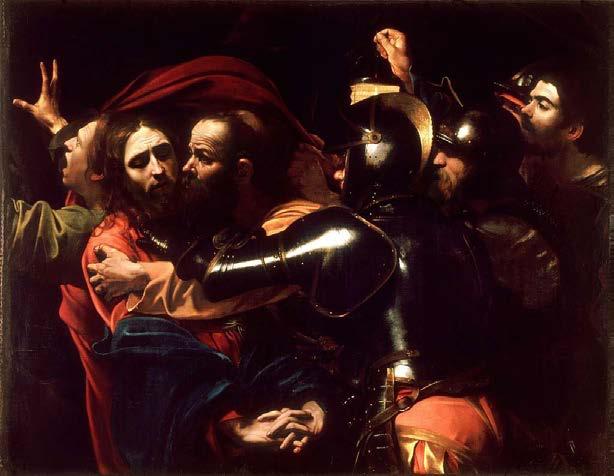
Ticking Tattoo
An op-shop chance encounter, disaffected smalltown adolescence and Donnie Darko
Fergus Sinnott
‘Why is there always at least one Steig Larsson book at every op shop I’ve ever been to?’
I look up from the second-hand book blurb I’m scanning and meet his eyes. We’re standing in the back corner at a Brotherhood of St Laurence, slowly browsing the Crime & Thriller section, the entirety of which takes up half the back wall. This was almost three years
ago, when I was still living at college, and debating whether or not I wanted to stay another year. We had just been to a screening of Alex Garland’s folk-horror film Men, and had cringed in mutual disgust at its grotesque denouement. With nothing else planned for the rest of what was now our third date, we’d decided to make a pilgrimage through the op shops and discount stores along the 1 tram line.
‘I’m being serious though,’ he went on,
holding up a copy of The Girl Who Kicked the Hornet’s Nest, ‘why are so many people getting rid of these? I love the Millennium books.’
Much of the conversations on these dates revolved around similar fare: which directors we couldn’t stand, the books we knew people only pretended to have read, let alone like. There was a strange sense of seeing oneself refracted back through a prism of fictional worlds. He was smart, a
good talker. The conversations flowed with an ease, the kind of conversations whose contents cannot be recalled after the fact, but whose affective afterglow could be felt long after we parted ways that afternoon. Later that evening, a message: Don’t forget to show me the wall
I had made a comment about the fact that one of my college dorm room walls was almost entirely covered with film posters: American Psycho, Point Break, My Own Private Idaho, The Crow, The Lobster, Interview with the Vampire. I had never been one for tour memorabilia or indoor plants; my central tenets were more books than I had shelves for, and more canvas prints than bare walls. I couldn’t describe it fully, but there was something about needing to make tangible the emotional and physical responses I had to films that made me so indebted to purchasing posters. I wanted to be able to show my appreciation for the works, but only within the hermetically sealed confines of my own space, a space into which very few other people ever had cause to enter.
I lived by the notion that the inciting incident in the story of my life had not yet taken place, and would not be able to so long as I remained in my hometown.
My teenage years were unremarkable, ferrying from school to home to my parttime job at the supermarket in my rural hometown an hour’s northwest of Melbourne. I was, for the most part, shy, unprepossessing, and with few friends, a fact which was largely in part due to a sense of apathy for the lives of my peers. I found various back gardens and dugouts around my high school campus to read while I ate lunch and became academic captain in Year 12 after having volunteered as something of an afterthought, only to find out that I had been the sole applicant. I watched a lot of movies and read a lot of books. I studied inattentively, made
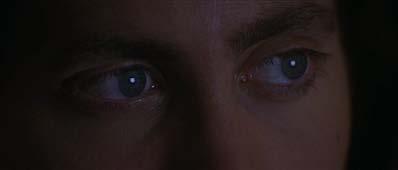
Published in Edition Three (2025) as part of the Movies That Made Me column
'Why is there always at least one Steig Larsson book at every op shop I’ve ever been to?'
I look up from the second-hand book blurb I’m scanning and meet his eyes. We’re standing in the back corner at a Brotherhood of St Laurence, slowly browsing the Crime & Thriller section, the entirety of which takes up half the back wall. This was almost three years ago, when I was still living at college, and debating whether or not I wanted to stay another year. We had just been to a screening of Alex Garland’s folk-horror film Men, and had cringed in mutual disgust at its grotesque denouement. With nothing else planned for the rest of what was now our third date, we’d decided to make a pilgrimage through the op shops and discount stores along the 1 tram line.
grades that were good, but nothing to write home about. Late at night or early in the morning, unable to sleep, I would open up my laptop and bask in its eye-straining glow as I browsed the Trending Now sections of various streaming services. My family’s home was more than one hundred years old. My bedroom door had never been capable of closing fully, given that the doorknob had fallen off years before I had moved into the room myself, and no one, not least myself, had felt the need to fix it. My room doubled as much as a provisional storage space as it did an adolescent’s quarters: boxes with who-knows-what in them propped up in the corner of the room; an enormous ornate wardrobe containing a surplus of clothes given to us by my seamstress grandmother. Suffice it to say that there was no Narnia to be found on the other side of the hand-knitted cardigans and Sunday best dresses. I lived by the notion that the inciting incident in the story of my life had not yet taken place, and would not be able to so long as I remained in my hometown.
'I’m being serious though,' he went on, holding up a copy of The Girl Who Kicked the Hornet’s Nest, 'why are so many people getting rid of these? I love the Millennium books.'
Much of the conversations on these dates revolved around similar fare: which directors we couldn’t stand, the books we knew people only pretended to have read, let alone like. There was a strange sense of seeing oneself refracted back through a prism of fictional worlds. He was smart, a good talker. The conversations flowed with an ease, the kind of conversations whose contents cannot be recalled after the fact, but whose affective afterglow could be felt long after we parted ways that afternoon.
Later that evening, a message: Don’t forget to show me the wall.
The first piece of film memorabilia I ever owned was a cardboard frame of stills from Richard Kelly’s 2001 film Donnie Darko, one of my pre-teen cinematic touchstones. I’d bought it from a market stall in the city one weekend, from a box of similar rectangular cardboard frames, each of which was signed with a forged signature from the respective films’ lead actors. I hadn’t deluded myself into thinking that Jake Gyllenhaal had taken the time to sign this cardboard plaque, and that said plaque was then going to be sold among similar plaques for a single-figure sum, but it was a nice touch nonetheless.
My most recent tattoo, done over the summer between my second and third year at university, pays homage to a scene from Donnie Darko. It’s a recreation of the numbers that Donnie wakes to find he has scrawled across his own forearm with a Sharpie, numbers which prophesy the remaining days, hours, minutes and seconds until the end of the world. Donnie’s appears on his left forearm, but being left-handed, I was careful to align the tattoo with where I would’ve written the numbers myself had I too awoken on that same golf course that Donnie does. It might’ve seemed somewhat morbid to most people, but to me it represented the manner in which I had grown up, a manner which had found to be so commensurate with the likes of Donnie Darko, Veronica Sawyer, Patrick Bateman. In many ways, it feels like a natural progression beyond hanging a poster on a wall, or wearing a shirt with a logo, to the point that the external artefacts you care about are destined to remain with you indefinitely. If those years of my life aren’t ones I necessarily look back on with nostalgia, it is nonetheless with equal parts fondness and intrigue–fondness for the simplicity which no part of my life since has afforded me, and intrigue at the fact that, according to the numbers on my arm, the end of the world should have long since come and gone, and the fact that it hasn’t means that the inciting incident may still indeed be a chapter or two away.
I had made a comment about the fact that one of my college dorm room walls was almost entirely covered with film posters: American Psycho, Point Break, My Own
Eventually, after a few hours, his response: Oh my God, you’re such a nerd.
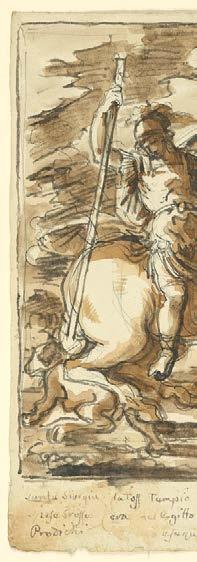
Why I Stopped Writing Poetry: A(Romance) in a Post(Modern) Age
Reflections on fabular tropes of love and expanding romance’s definitional scope.
Claire Le Blond
Aromantic: the experience of little or no romantic attraction and/or desire for a romantic relationship.
In my first year at this university, I had eight separate crushes in a span of six months but pursued none of them (that’s a lie). I haven’t had one since (technically). In the meantime, I invested in theatre, returned to my father’s homeland (Singapore), and started my Honours degree. Somewhere along the way I stopped writing poetry— writing at all, at one point.
There’s a story that we all
comes soon. The list goes on.
In most, if not all, versions of this story, the knight and the damsel make their way into each other’s arms. It is implied, anticipated, expected even.

best attempts, we cannot read the mind of the beautiful stranger at the other end of the bar nor that of our partner. And maybe, just maybe, do we need to?
know. It goes a little something like this: the knight rides to the tower brandishing an impressive sword and makes the display of prowess to the dragon, leading it away for the damsel to be free. There’s the version where the damsel tells the knight to fuck off, for the dragon is her sworn protector and she needs no man to save her. There’s also the version where the knight takes her helmet off to ask for the damsel’s hand from the protector, proving her worth to the dragon. There’s even the version where the dragon is simply old, an ancient being exhausted beyond measure, and all one can do is hope that the ending
Romance is, to put it simply, fun. Even I, as a self-professed hater of romance throughout my youth, found myself instinctively writing romances. I wrote romances and love affairs, whirlwind tales of young love woven into the perfectionist parables I was so fond of creating instead of actually facing my problems and going to therapy (I did… eventually). In being a young, openly queer person in a religious environment, writing and wanting a gay romance was—and still is—an act of rebellion. After a lifetime of hardcore academic pursuit, I assumed that once I got to uni, I would naturally feel the need to chase it in real life too.
So, I did. I was unsuccessful. I wrote poetry about it. Some prose as well. Yet, to my surprise, I was happy that I was unsuccessful.
The knight, the damsel, the dragon; what happens to these archetypes when
I realised, quite simply, that the experience of romance did not compare to the art of it.
one can’t find themselves in any of them? What happens to the story when its very nature, the roots that build upon a tower of metaphor and fallacy, have no stone to hold? The romance of these stories is privileged with perspective. In every version of this story, we know every choice, every perspective. The beauty of a love story is the satisfaction of being able to reach an ending that promises happiness in the form of romance. But as the adage goes, truth is stranger than fiction. Despite our
Fundamentally, I stopped writing poetry around the time I realised the truth of my interpersonal ambitions. I realised, quite simply, that the experience of romance did not compare to the art of it. Writing is akin to prayer for me. The church I worship is a blank document, a rough scrap of paper devoid of ink. I have no worldly desires other than to sit at a wooden desk in a comfortable chair with the window halfway open and to write
But then, the real thing came about and I didn’t want it. I was okay with that.
What even is romance in the (post) modern age? I think back to a Farrago article published in 2023, ‘let’s put our minecraft beds next 2 each other’. The Gen Z love story is one of opposites: lovers born of a digital age longing for the nostalgia of a past they can only consume on a screen, both deeply sincere and unironically ironic.
Furthermore, romance in its most banal, unimaginative and tasteless sense is proselytised, propagandised and perpetuated onto society. Mainstream romance is sanitised, filtered through a heteronormative lens that dulls the psychedelic possibilities that exist beyond.
To speak to my own experience, I find romance in the simple fact of living—in brewing my own coffee in the morning; in the bassline of my favourite song; in the way the wind greets me, flying past as I walk up Swanston Street, because I refuse to pay for the tram; in having deep, cherished friendships; in watching those friends fall in love, and listening to them gush and giggle about their own partners; in being able to not want any of it for myself and still write a damn good story about it.
Ah, the University of Melbourne! One of six Australian sandstone universities, its colonial buildings seem to embody the institution’s academic and cultural prestige. From the Old Arts clocktower to the Ormond College Main Building (which marketing teams can’t seem to understand isn’t the university proper), the campus attracts the elite and pretentious who see their own high self-regard reflected in the well-funded environs of a G8 university.
But what if you’re not looking to smoke outside the Clyde like it’s a 20th-century Parisian café? What if you’re not a college reveller cracking open a beer on some heritage-listed wainscoting? What if you—like the buildings which comprise most of your university—are dull, unremarkable and filled with too much concrete?
In which sad and unsavoury corners of our university should YOU wallow? Take this quiz to find out!
Sophie He
Keep track of your score as you play!
a = 0
b = 1
c = 2
1. Would you ever use ChatGPT to complete a written assignment?
a. No. I value academic integrity.
b. Yes. I know how to get away with it.
c. No. It’s not worth the consequences.
2. What is your favourite library on the Parkville campus?
a. Eastern Resource Centre or Architecture, Building and Planning
b. Baillieu or Rowden White
c. Law or Giblin Eunson
3. How do you feel about Okta Verify?
a. Multifactor authentication is essential. Only the University can perpetrate alleged privacy breaches.
b. I’d prefer the ‘remember me’ feature return.
c. It makes it harder for me to track and hack my enemies on campus.
4. Who is your favourite UniMelb dropout?
a. Julian Assange
b. Cate Blanchett
c. BigShmungus
5. Which UniMelb event are you most likely to attend?
a. Job Ready program
b. Prosh
c. Duncan Maskell house auction
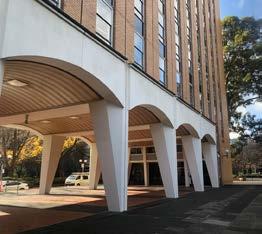
4 - 6 POINTS
GRAINGER MUSEUM LUST BRANCH
0 - 3 POINTS
RAYMOND PRIESTLEY WIND TUNNEL
Congratulations, your drab self is optimised for lurking around the heart of university administration! In the Raymond Priestly Building, you’ll be rubbing shoulders with illustrious Order of Australia recipients Jane Hansen and Emma Johnston. If you, like the Chancellery, prefer to be left alone, the Raymond Priestly Building conveniently forms a wind tunnel. From within, you can enjoy watching as those infernal gusts harry the pesky unionists and activists who insist on protesting outside anyway.

You, like Melbourne-born musician Percy Grainger, approach life with a bohemian zest. Whether you’re composing experimental folk arrangements or crafting homemade sadomasochistic accoutrement, you will feel at home in this international pervert’s autobiographical museum. Grainger was charmingly racist—an ostensible boon to any enterprising public figure looking to have a building named after them at Australia’s #1 university! In 1971, a decade after his passing, historians opened a chest of his labelled ‘Private Matters’, discovering a plethora of his paraphilic paraphernalia. Today, among the musical artefacts housed by the Grainger Museum, the Lust Branch, according to its website, ‘comprises pornography, whips and clothing, and protective devices used by Grainger and his lovers during sexual activities’.
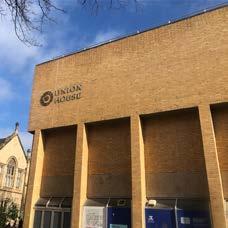
7 - 10 POINTS
OLD UNION HOUSE
Originally a 19th-century Gothic Revival building, Union House has since been remodelled and decommissioned. The brutalist blonde brick monolith now stands, lone and decrepit, occupying what has effectively become a dead zone on campus. If you’re a fiend for StuPol history, try sneaking about the abandoned premises. Why not check out the sickbay where now-Labor National Secretary Paul Erikson was ‘fucking flattened’ by a Liberal? Though, if you’re not keen to contract mesothelioma, you can awkwardly loiter about the balcony outside and imagine you’re watching the Go! campaigners reveal their ‘Vote [1] Liberal’ shirts. Building 168 just isn’t the same.


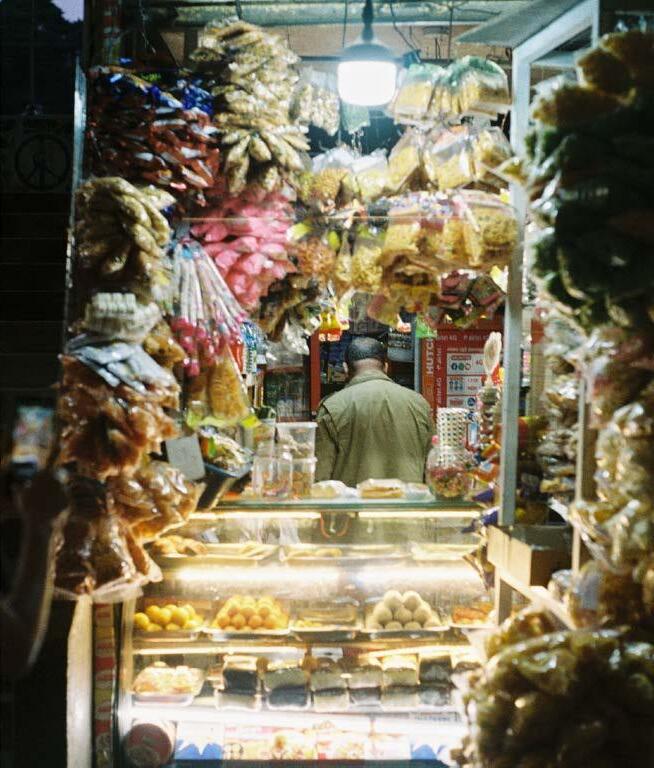
Night Shift
Saria Ratnam


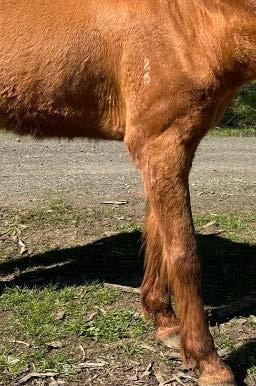
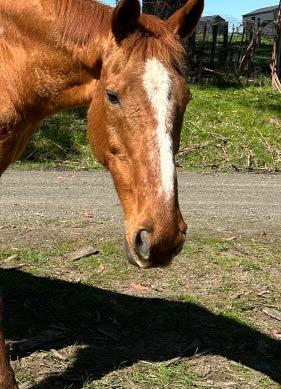
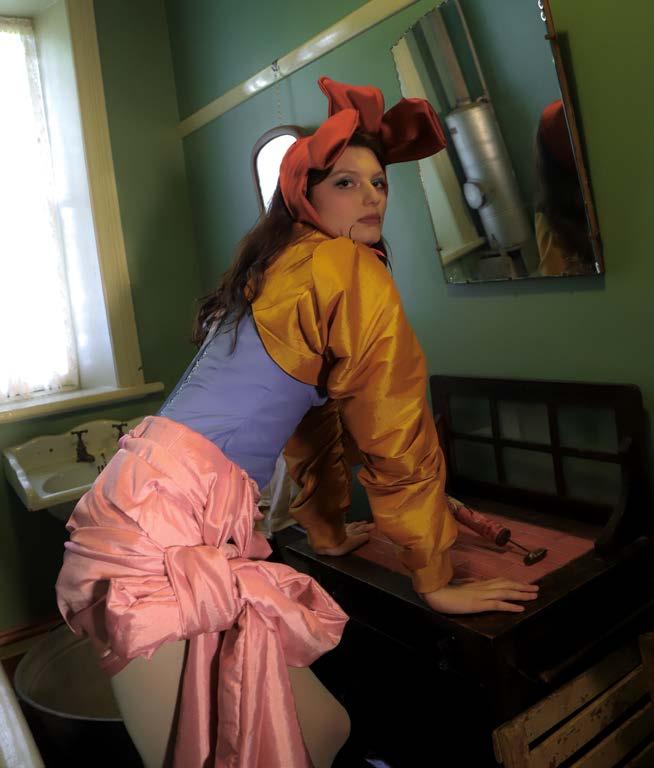
Question #1
The community I gave my heart to for my undergrad now feels like it’s eating itself alive. It’s incestuous, with every branch rooted in its own breaking stem; an ouroboros of passion and pain aplenty. So many people I love are still there and I fear I have to leave them behind.

Dear Incest Hater,
Unfortunately, when you’ve gathered the kindling of basic demographic compatibility, you just need a common interest to spark that statistically-probable fire. Paradoxically, the university’s overwhelming size encourages insularity. For those who have settled into stable social circles, the prospect of never again subjecting yourself to the humiliating rites of casual in-class conversation can be tempting. This is true for both romantic and platonic relationships. You write with an elevated and poetic style, your metaphors bearing cosmic significance. You feel ensnared within a petty web of shifting allegiances and betrayals. Though, as petty as the web may be, you nonetheless feel trapped. So, prove to yourself that you aren’t. Diversify your friendship groups so you’re not living and dying by a few people’s drama. Don’t abandon those you love. Instead, broaden your world by doing what your friends won’t– meeting new people.
- Great Aunt Quickfingers
Question #2
How do I stop everyone from falling in love with me? This sounds like a strange joke but I am being dead serious. In every social context I’ve been in for the past two years, one or two people start acting weird, and then a month or two later, I get that dreaded proposal in my DMs. It’s getting to be a proper HR issue. Help!
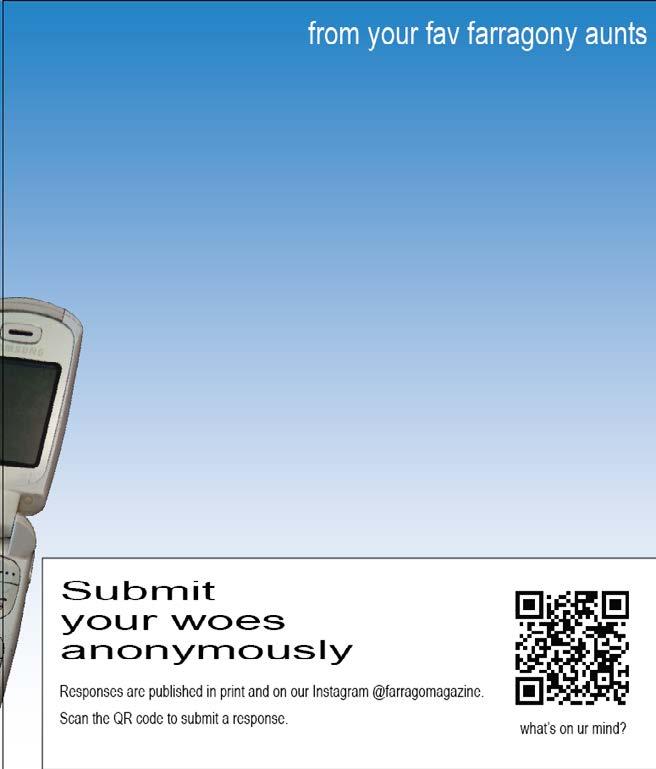
Dear Marcela,
How unlucky to be so lucky in love! But ultimately, you’re not responsible for others. Infatuation is ultimately not about you, but them. You’re distorted into a symbol after which they can pine. There is not much you, as a person, can do to influence a psychological abstraction. Still, the revelation is a terrible recontextualisation; like a retroactive plot twist which collapses the entire friendship behind you. Of course, you could try to be a more challenging object of romanticisation. Dress frumpier, be nasty in disposition and intermittently strike people during conversation. Perhaps you could start a YouTube prank channel or speak exclusively in Gen Alpha slang …
Whether you reciprocate or decline someone’s affections, are they kind in response? Do you recognise when you are being disrespected? Are your boundaries firm? If these concerns are emerging in your workplace, do you feel safe at your job? If not, it actually may be worth making it a proper HR issue.
- Great Aunt Quickfingers
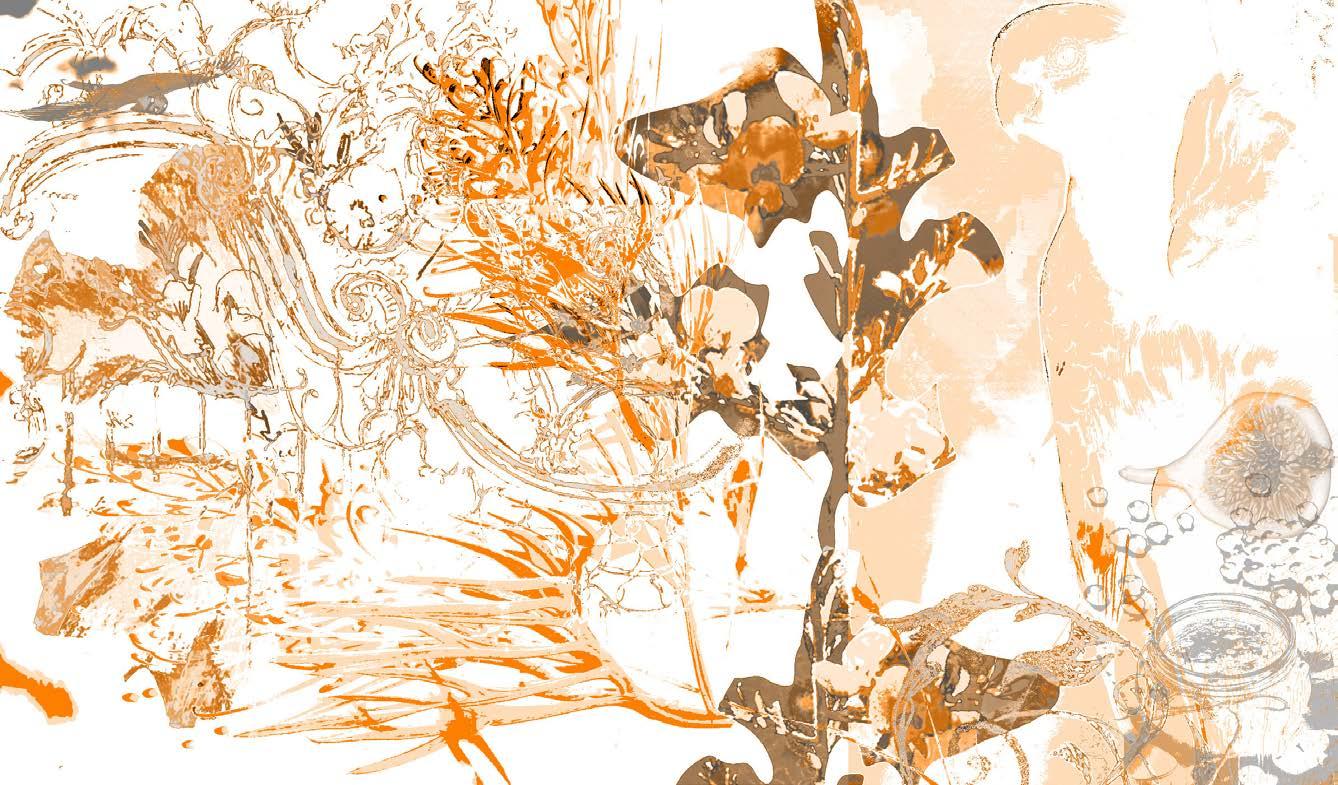
We spent many summers together, but when I think of them now, I see one summer that simply returned over and over. All of it unravelled–the corridors of bottlebrush and bushpea, the gold light of day blazing late and deep, the smell of smoke and ripening fruit–and then folded up again for winter, it seems, for six years of our lives.
There was one field, one veranda. One sunset, which we often watched together. In my mind it’s a still-moving scene, see, like this: three kids, all of us sunburnt and bug-bitten, cicadas shimmering around us in the grassland. I can see us playing in the field at the mountain’s foot, a game of cricket (or almost-cricket, the rules more-or-less made up by Evelyn); I watch as we sit like cross-legged totems in the kangaroo grass, the wispy florets chafing at our reddened knees. I can see, too, the sun lowering itself to meet the edge of the field. There is nothing beyond us but the mountains, rising like high green cathdrals above the grasses.
I knew Evelyn because we were neighbours from the age of three. She lived in the house next to mine on Bundaleer Drive, in a worn weatherboard cottage raised on timber stilts. Her family grew rows upon rows of fruit trees in their backyard, making preserves with whatever they could harvest in the heat: blackberry jams, quince jellies, fig chutneys. Their kitchen shelves were a jumble of red tartan jar lids and glossy label rolls (Pinnacle Preserves, in its signature curly lettering); the kitchen itself fragranced with the heady scent of berries, lying broken in pots of sugar.
There was no fence between our houses, so we must have met in our yards one day, though I can’t really remember a time before Evelyn. My parents weren’t around much, so I could spend as much time with her as I wanted. She’d chase me through the sheets pinned to her clothesline,
through the dappled shade of her pear and apricot trees, and we dueled earnestly with spiky branches and nettle stems, sleeves pulled down over our fingers. Even on days she wanted to be alone–when she had other, imaginary matters to attend to–I sat on her veranda, chin sticky with fruit juice, and watched her talk to the air.
Then there was Connie, but she came much later. Evelyn and I met her during our first week of high school, and after much deliberation, we decided to admit her into our company. This was no small achievement for Connie; until then, we had been a close-knit, highly unsociable pair for most of our brief lives. There isn’t much I can say about her now. Only that I remember a light so particular against her hair: day-lit, it fell in flashing currents of auburn and gold; bright, coursing wavelets of flame. Like May’s gold-tipped cedars. Or a forest fire.
For the six weeks of summer we were off school each year, Evelyn, Connie and I spent almost all our time outside. Houses were small and hot, and besides, the town had better things to offer: yellow-green paddocks and snaking river trails and, above us, the old, slumbering mountains. By the time we were fourteen we knew all the good spots. On cooler days we ventured up the summit, the sound of Evelyn’s laughter given back by the trees’ imposing stillness. One afternoon, after one of these hikes, we found a clearing and laid wearily on the forest floor, the cans of lemonade in our backpacks now flat and unappetising.
‘But don’t you agree, Con? There’s something creepy about old Baxter’s house. I don’t know. Something about the incense he burns in there,’ Evelyn said, yawning and hugging her shoulders. The locals were a frequent topic of conversation. ‘Whenever I walk past his house, it’s like this really smoky–it’s witchy, actually, it’s a witchy smell. Like he’s making potions in there.’
I snorted. The sun bore down on us, close. Warm-bellied, we watched coupling butterflies pitch and spiral through the air. Connie raised herself languidly on her elbows, taking a swig from her can.
‘I don’t know about that, Ev. Where does he live, Sundial Avenue? I don’t go up that way often. I see him hanging round the store, though. He’s friendly enough with my parents. Stops in for a smoke and a chat. I reckon he’s just an old bloke who keeps to himself.’
Evelyn shrugged, and we rested our heads sleepily on our arms, myrtle leaves drifting down from the overstory to rest beside us.
When Connie and her parents moved in from the outskirts of Perth, already well-acquainted with the liquor trade, they took over the only licensed general store in town. Connie was too young to work there, but she liked to read inside the air-conditioned store, perched behind the counter while her dad dealt with the customers. I came in to visit sometimes— often enough that, when my arrival set the doorbell off, her dad simply slipped a bar of liquorice across the counter, nodding. We ate half each on the store’s sun-baked decking, laughing, fingers sticky and sweet, her knee bumping softly against mine.
One particularly muggy day, when the air swelled and settled on our sweatsoaked backs, Evelyn, Connie and I wandered the rows of Evelyn’s fruit trees. We took our pick of plums and apricots, wondrous in their high summer sweetness.
‘What’s this, Ev?’ Connie was holding a fruit, glossy in the sunlight, as if waxed, unreal. It looked like a still-ripening tomato, except it was orange, flat, and topped with a flower-shaped crest.
‘Persimmon. Mum wants to try out a new Pinnacle jam. To be honest with you, I don’t know how it’ll go down with the townsfolk. Last time she experimented, it
In Letters of Smoke
Abigail Brooks
Art by Elsa Li

wasn’t so good,’ Evelyn said, waving a fly from her face. Then, with a dramatic shudder: ‘Ginger eggplant jam, circa five years ago. Never forget.’
Connie took a bite of the fruit’s firm flesh and handed it to me. The space her mouth had carved was a perfect circle. I bit down next to it, our mouth-circles overlapping. It tasted vaguely like honey, but darker, tarry, like something sweet burned through. Disappointed, I almost hurled it into the shrubbery, but Connie caught my wrist, glared at me, and took it from my hand.
‘I’ll have it if you’re going to waste it. I like it, actually,’ she said, bringing it to her lips. ‘I like the aftertaste. Sort of gets sweeter if you just ... focus on it.’
The three of us kept walking through the scattered shade of Evelyn’s persimmon trees, shoes thumping soundlessly on the soil. The wind passed us by gently, indifferently, playing with the leaves. Rosellas circled like sentries above us. I remember how the sunlight passed through the feathers of those rosellas, rays of red and blue briefly lighting our faces, lighting the long dream of the afternoon. In the air they left behind were many-coloured vanes, floating lightly, darted with sunlight. The sky was enormous. I was only sixteen, and it was only a day – only a moment, one amongst so many – but I felt changed. I surprised myself by thinking of a poem, one stumbled upon, I thought, in a book’s prologue, though the name of it escaped me.
Let me spread you out among yellow garlands.
Who writes your name in letters of smoke among the stars of the south? Oh let me remember you as you were before you existed …
In the year that followed, we started to see each other less, perhaps sensing our rapid journey towards some kind of ending; the ever-dawning prospect of growing up, moving away, and living our lives
without each other. There was one night, though, just before summer ended, when the three of us went together to a party out of town. Connie volunteered to drive. She was untalkative, fiddling with the radio, bangles sliding up and down her wrist.
We left the party much later than we’d planned, in the uncharted hours of near-dawn, slipping past drunk stragglers stumbling out onto the moonlit veranda. Connie and I went home without Evelyn, who had disappeared early in the night with a boy we’d never seen before. I fidgeted uncomfortably in the passenger seat as the yellow lights of streets blurred past. The car slowed on the corner of Bundaleer Drive, stopping below my blanked bedroom window. Her headlights appeared as two pale flares in the glass. Then they vanished, and we sat for a few moments in the car’s uneasy dark.
Connie asked if she could come in, and I showed her through the unlit hallway into my room, feeling stupidly shy. We sat on the floor, our backs against my mattress, talking about school, the party, Evelyn. On my dresser, the red glow of a lava lamp slipped softly into blue. I was suddenly very conscious of her body beside me, sitting limb-long like this, our faces turned away from each other. It was too warm. She placed a hand on my leg as if to anchor me, as if I were about to leave, and we looked at each other for a long time. Then, in the hush and half-shadow, she pushed me slowly, slowly down.
It was over so quickly. There was university to think about, and the three of us parted without fuss or tears. I moved down to Melbourne, Connie back to Perth, and Evelyn to Sydney for a ‘sea change,’ she said, laughing (she and I had never seen a beach in our lives), and that was the end of it.
University was like this: boiling a kettle, eating alone; later, walking by the
river, surrounded by voices ringing hazily through the evening. I started counting distance: one hundred-and-fifty-nine kilometres down the M8, twenty-one kilometres down the Pyrenees Highway, and so on, so I could remind myself I knew the way back. I thought about the soughing grasslands, the clouds assembling over the mountains, and the light in Evelyn’s sweet-smelling house, the dark orange colour of the sun through closed eyes.
I still live in Melbourne, and I couldn’t explain my job even if I wanted to. Think an office with grey-carpeted wall dividers. And I didn’t return to the mountains for fifteen years–but just last night, in the company of these persistent memories, I coasted through the glistening wheatfields of the Western District, then north to the ranges, to see time’s play across our absence.
At eight o’clock, it’s still light. A fox crosses the road lightly. The air is faintly incensed, a thread of scent adrift in the evening. Connie’s general store is now a bustling public pool, and three women in linen culottes stand chatting outside its gates, watching their children’s arms dance through light blue waters.
While the sad wind goes slaughtering butterflies,
I love you, and my happiness bites the plum of your mouth …
I want to do with you what spring does with the cherry trees.
A rosella settles, tentative, on a nearby eucalypt. She contemplates me for a while. When a gust shakes the tree, she raises her wings, the branch plunging like a springboard. Then the bird bursts into open sky, lifting her cries above the splayed tops of the forest. The branch keeps moving, up and down. I think it might never stop. When it finally does, it looks so desolate up there, one black limb reaching out into empty space.
Goddess on a Highway
Ky Thorson
Content Warning: pregnancy and abortion
The motel is a long white mirage by the highway.
He laughs in relief. ‘Do you see that? Do you see it? Have you ever seen anything so beautiful?’
She looks up from her book. The flat brown country is the same as the last thousand kilometres except for the motel moving in the heat lines. She shrugs.
‘I’m dying for a shower, clean sheets, and a hot meal.’ He taps the steering wheel excitedly. She eyes him from behind her book. He must think driving days and days is better than being tied to her forever. He must be thinking ‘thank God this will be over soon.’ She doesn’t want this either. She doesn’t want to be a mother any more than he wants to be a father.
The motel advertises two stars and a pool, with a telephone and television in every room. They park in the empty car park.
The manager comes out after they ring the bell a third time. She is short and dowdy and huffs while she writes them in. He checks in under his real name which she thinks is stupid, and pays from their roll of cash.
The manager licks her fingers as she counts out the change.
‘Checkout is ten. Pool’s empty, drained it last July, so don’t go looking for it.’
The ceiling fan in their room spins slowly and airlessly. Two single beds are separated by a nightstand which hosts a clock radio and the advertised telephone. The wallpaper is a fading yellow and there is a mummified gecko stuck to the wall, entombed in cobwebs and dust.
‘Which bed do you want?’ he asks.
‘I don’t mind.’
She locks herself in the bathroom and sits on the toilet. When she finishes she looks down and sees blood in the water. It isn’t her period, the blood is lighter, and
slick, with the opalescent sheen of an oil spill. Something moves in the water. Its wings whirring and vibrating, swimming on its back in the bloody pool. A fly. She dabs between her legs. What if it came out of her? She feels again. What if she has prematurely birthed a grotesque insectile offspring? She flushes the toilet and the blood and fly is replaced by fresh, clear water; a mirror to her face. She strips off and stares at her naked body in the mirror above the sink, and cannot imagine herself with full breasts or a swollen stomach rippled with stretch marks. She steps into the shower and feels the bite of the water, drawn deep from the Galilee Basin, sputter out in bursts into the grimy tub. She burns her scalp with chemical shampoo and scrubs her eyelids until they are red and raw.
They raid the minibar for a dinner of stale chips and flat cokes. ‘We won’t pay for them,’ he tells her, looking at the prices on a laminated menu. The television doesn’t work so they eat in silence. After dinner she reads in the orange glow of the bedside lamp until she gets sick of her book. She searches the drawers for something else to read but there isn’t even a Bible. And in the wardrobe there is only a rusty old coat hanger. She returns to her bed and lays on top of the thin sheet.
‘You know, we could do it,’ he says casually, ‘you won’t get pregnant.’
It’s a bad joke and she brushes him off.
She curls up outside the room in the white plastic chair where he goes to smoke and closes her eyes. She feels the still warm air, listens to the screaming crickets and desperate cicadas. The motel sign glows a lurid neon red, visible through her eyelids, a beacon to no one, displacing the otherwise total darkness.
They sleep in separate beds, but at 3:24 a.m. in the red glow of the clock radio, she crawls in beside him and cries into the nape of his neck.
He stirs and pats her side. ‘It’s okay,’ he breathes, ‘it’ll be okay.’ ***
‘Car won’t start,’ he says a couple hours
later. It’s still dark and she lies in bed. She can only see him by the glow of the cigarette in the doorway. Like a bad Western.
‘Try it again.’
‘I have.’
‘Is it out of petrol?’
‘Gauge says half full. I hope it’s not the gasket.’
‘We’re supposed to be there tomorrow.’ She has it memorised. The address. The time. What to say.
‘I know, I know.’
When the sun comes up, he goes to the manager and asks her to phone a mechanic.
He returns and lights a cigarette. ‘Mechanic can come out from Chinchilla tomorrow at the earliest. I’ll keep trying the car every half hour or so.’
‘We still have a day’s driving to go, we can’t—’
‘I know,’ he snaps, ‘but there’s nothing I can do.’ He stalks off.
She showers again. For a long time. Maybe hours. She lies down in the tub and lets the water nearly drown her. Fill her nose and throat. Trickle into her lungs.
She sits outside the room and dries her hair with a towel and watches him smoke. ‘Looks like it’s going to rain,’ she says, and points to the heavy blue clouds in the east.
‘It won’t.’ He stubs out his cigarette. ‘Those mountains, the ones that look like grey elephants, is the Dividing Range. Means it’s wet on one side and barren on the other. We’re on the wrong side.’
‘Is the car starting?’
‘Nope.’
She returns inside and flops onto the bed. Her head aches and her stomach squeezes. ‘12:23’ the clock says. She presses her face into the pillow and wants to be anywhere but the motel. She struggles to sleep in the heavy heat, cooking her marrow, melding her skin to the sheets, but she does. A hot dreamless sleep. She wakes to his voice yelling from outside.
‘Cec, the motel has a bar, I’m going to get a drink, what do you want?’ ***
‘Water.’
He comes back with two warm beers and a cup of stale ice.
‘Where’s my water?’
‘Oh, I’ll go back.’
‘No, don’t worry.’
He cracks open the beers and places one in front of her. ‘Cheers.’ He drinks deeply ‘Fancy a place like this having a bar.’
‘Mm,’ she nods and looks at him in the reflection of the black TV screen.
‘Are you thinking about it? Naw, it’s a simple operation, Cec, it’s not really an operation at all.’
‘What would you know about it?’
‘I feel like a Sambuca,’ he says, ‘do you want one?’
‘I hate liquorice.’
‘I never knew that.’
‘Yeah, well, I do.’ She chews a piece of stale ice, spits it out.
‘I’ll be back, save some ice.’ He leaves, beer in hand, unlit cigarette between his lips.
When the cup of ice has melted to water, and he still hasn’t returned, she goes wandering. Passes the rows of numbered doors, faded curtains drawn tightly.
She finds him in the pool. Standing in the empty blue basin, smoking. His beer bottle floats in a puddle of stagnant water, dotted with leaves. She watches him. He’s lean, with worn jeans and a holey shirt, and he’s barefoot; he never wears shoes. His face this time, it is serious, and quiet, his eyes squint as he exhales smoke and surveys the dull country. He drops the cigarette to the basin and squashes it with his big toe. He turns and looks up at her, shields his eyes from the sun. ‘Look at all these dead moths, they’re not leaves, they’re some kind of moth.’
They walk back to the room together. ‘I’m out of cigarettes.’
They sit outside and watch the eastern sky redden and the grey elephants turn black.
‘Red sky at night, shepherd’s delight.’
‘What does that mean?’ she asks.
‘I’m not sure.’ He rubs his lips with two fingers, smoking a non-existent cigarette. ‘No damned mechanic, I’ll try the car throughout the night, it might’ve cooled down by then.’
They sleep in the same bed, she feels him move at 4:56.
Hears the car start, the headlights fill the stuffy room with blazing white. He comes in and shakes her awake excitedly. ‘You can sleep in the car, let’s go.’
She rests her head on the vibrating glass of the window and looks out to the dark horizon, like a simmering pot lid containing the red sun, about to overflow.
The car is silent except for when she asks him to pull over for her to pee or dry retch. She feels sicker the closer they
They pull into a small oasis town as the sun is setting. They get burgers and eat in the car in front of an artificial lake. She drinks coke from a styrofoam cup and picks out the tomato from the burger while he smokes a new pack outside. The smoke threads over the lake. She tries to imagine him as a father and cannot.
‘We might as well keep driving. Only a couple more hours.’
She finishes her book by the time they hit the border.
‘How do you feel?’
‘I feel fine.’
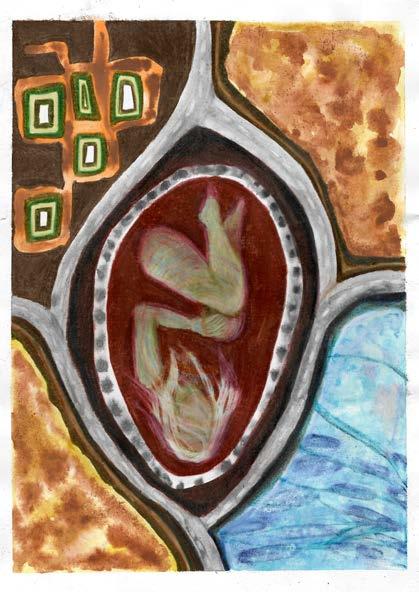
The Gloves
Hallie Vermeend
Content Warning: misogyny, classism, ableism, murder, drug use
On my way into work, I passed the homeless woman again. The cardboard house she’d set up outside the coffee shop was waterlogged and her stolen takeaway cup was half filled with rainwater, a few measly ten cent pieces stuck at the bottom. I skirted around her territory and went inside. When I emerged again, hot coffee held gingerly in the same hand that grasped my briefcase, she was staring up at me with her cup of water held aloft. I let my gaze glance off of her. I hadn’t paid with cash, anyway.
Pity, I thought, if I’d had a coin, I could have tossed it in and made a wish.
I kept on moving as the crowd around me grew thicker. It was like any other winter morning in the city. The air was filled with people’s half-frozen breaths, rubbish was floating merrily downstream in the gutters and I couldn’t see a damn thing for all the umbrellas. I thought about Christine, at home and still wrapped up in the duvet, no doubt. Only half an hour ago I had been there with her, kissing her bare shoulder good morning. She was not a lazy woman by any means, but I earned more than enough for the both of us. And I liked the thought that she was always there waiting for me to get home.
At work, I played back-and-forth over emails with the jeweller. No I don’t want lab-grown, I want a real one. At least two carats in the custom setting we talked about. I want it before Saturday. Yours sincerely,
The homeless woman had become a bit of a staple in my routine. I saw her again the next morning when the line for coffee was out the door − I’d missed my usual train and as a result was now one of the wankers lined up for a cup of coffee at 8:57 AM. Further up the line, someone dropped a coin into the woman’s cup of water. She didn’t say anything, just brought it to her mouth and drank. She swallowed, then opened her mouth wide, Queen Elizabeth
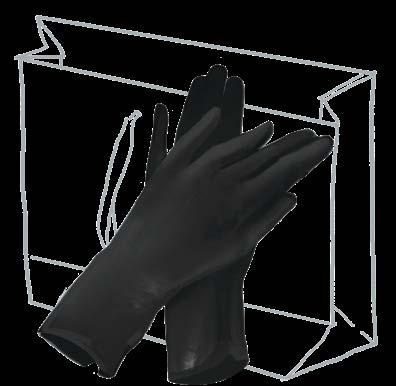
II’s face resting delicately on her grey tongue. I pulled out my phone and pretended to be engrossed in a news article when it came time for me to pass by her.
A text came through from Topher, a friend of a friend. Hey mate lmk if you need me to hook you up with smthn again.
I hadn’t told Christine about the homeless woman. She wouldn’t see it the same way I did. That night, though, I almost brought her up. Christine was cleaning out her closet, a task she’d started at 11 AM and was barely halfway through by the time I got home at 6. I watched on from the bed with a box of Chinese take-out in my hands.
‘I have too many clothes,’ she declared, standing up to her knees in a collection of dresses. ‘There must be so many people out there who need them more than I do.’
‘You do need them.’ I reached over the side of the bed and picked up something yellow and spotty. ‘I like this one.’
‘But what about all those women on the streets? Wouldn’t they like it too?’
An image of the homeless woman in Christine’s dress popped into my head, uninvited. I imagined having to pass her every day in something my money had bought and almost shuddered. I dropped the dress and put down my box of takeout. Suddenly, I wasn’t very hungry. I picked up my phone and started typing out a reply to Topher. Heyy not right now, maybe next weekend? Girlfriend has been on my ass gotta spread it out.
Christine’s attention had wandered to her winter accessories. Several woollen hats had been tried on, and now she’d found a pair of black cashmere gloves. I
Art by Jocelyn Soetanto
remembered buying them for her a few winters ago, on one of our first dates. We’d been ice skating and after five minutes her hands were as cold as the ice rink itself, so we paused for lunch and I ducked into a shop. ‘I remember those,’ I told her. She smiled and tugged them on. I watched as the fabric slipped over her ring finger. Bare, but not for much longer. She held her hands out and examined them. ‘They’re a bit thin. And there’s a hole in this one.’
I remembered that, too. It had formed only a week or so after I’d bought them. I’d wanted to go back to the shop and complain, but Christine wouldn’t let me. I spent the rest of that winter teasing the rip with my thumb whenever I held her hand.
‘Should I get you a new pair? I can take you shopping on the weekend.’
Christine beamed, all thoughts of homeless women forgotten.
It was raining so hard the next couple of days, I skipped the coffee shop altogether and resigned myself to the shitty Moccona at the office. On Friday I heard back from the jewellers. We have the ring, sir. I left early to pick it up and on my way back home I passed the coffee shop. The homeless woman was gone. No cardboard house, no sopping wet blankets. Just a sign in the window advertising the weekend’s special offer. I tried to squash down the sense of relief it gave me to see her gone, but it held fast to a chink in my brain. I thought, maybe, that I only felt guilty because of the new weight of the box in my pocket and the yellow dress Christine was wearing when I got home.
On Saturday we headed to the shopping centre. By the third stop our train was packed, so I gave up my seat to an older man with a cane.
‘That was very chivalrous of you,’ Christine said, winding her hand around my arm as we stepped off the train. Really, it was just something that you were supposed to do, but I took the compliment. We didn’t find anything worthwhile in the first store. Their gloves were all made of polyester, and I wanted something that would last. The second store had a few options, but none matched Christine’s tastes.
‘I like these,’ she said of a pair in the third and final store. ‘They’re really warm.’ They were black, hairsheep leather gloves lined with cashmere wool. I purchased them and handed Christine the bag. I knew she would want to carry it because its handles were made of ribbon, which meant that there was something expensive inside. We stopped at a few more places and gained a few more bags before coming across a bridal store. Christine slowed down outside the window to gaze at the display mannequins. None of the dresses particularly moved me, but I kept that thought out of my mouth and let her look.
‘Sorry,’ she said when she turned back to me. ‘Just thinking.’ And then she smiled a smile that put warmth in my chest and made me wish I had the ring right then and there. I’d left it at home, but I was seriously considering taking her up to the roof that night and asking the question. That was, until we were back in the train station to head home. Christine was talking my ear off about her plans for our next trip to Europe when I spotted her, cardboard house and all. The homeless woman had moved into the station.
She locked eyes with me as we got off the escalator, as if she could somehow remember my face amongst all the others she must have seen going into the coffee shop every day for the past two weeks. Christine must have figured out that I wasn’t listening, because she stopped chattering and followed my gaze. ‘Oh, that poor woman! It’s freezing down here.’
‘At least there’s no rain,’ I said before I could stop myself. I tried to steer Christine towards a bench on the opposite side of the platform, but she tugged on my hand and led me straight to her.
‘Hello,’ Christine said, and bent down to her level. I grimaced inwardly as she placed her shopping bags on the ground. ‘You look a little chilly, would you mind if I gave you something to help?’
The homeless woman glanced up at me as if to say, is she really with you? The whites of her eyes were a watery crimson that I recognised from bad nights out. The crash after a high.
Christine found the bag with the ribbon handles and pulled out her new
gloves. She looked at them for a few seconds before starting to unwrap them.
‘Christine—’ I started.
‘I still have my old pair.’ She handed the gloves to the woman and stood up just as the train whooshed up to the platform. Once we were seated, I looked out the window and saw the homeless woman waving a gloved hand at me, a dirty smile on her face.
***
The mood wasn’t right for proposing on Sunday, either. The previous day’s good deed had set Christine on some sort of Good Samaritan trip, and she was back to sorting through her clothes to find things to give away. I was happy to go back to work the following week, especially now that the coffee shop was reclaimed territory and my train wouldn’t pass through the station the homeless woman had moved into. By Friday morning, Christine had placed two plastic bin bags full of things ready to be donated at the door.
As I passed them on my way out, I called, ‘I can take these to the op shop after work.’
‘Actually,’ she began, skipping over from the kitchen in her short silk nightgown. She ran a finger over my chest, which meant she was about to say something that was likely to piss me off. ‘I thought we could go around to find people in need and give them something in person. Maybe tomorrow?’
I would have needed several more fingers traced along my chest for that to not agitate me, but I gritted my teeth and agreed.
I spent the walk to the train station thinking up excuses as to why I couldn’t join in. Perhaps I could contract some sort of virus at work, or get my hand stuck in the printer. I stopped short as I pulled my ticket from my back pocket just outside the station. A few metres from the entrance was a cardboard house and inside it was the very same fucking homeless woman. What was she doing at my local train station? It was barely a two minute walk from my apartment building. She must have followed Christine and me home after our shopping trip. She must have. But how come I hadn’t seen her all week? Was she being sneaky and just happened to slip
up today? Or had she waited until today to show herself in a deliberate attempt to intimidate me?
My first thought was to go straight to the authorised officer on the platform, but it was 8:30 AM and there was no chance he’d still be there. Instead, I strode right past her. I think I heard her start to say something, but I didn’t slow down to listen. I was determined to get to work and will the time away until I could come back and do something about her. On the train, I texted Topher, and when he didn’t answer fast enough, I called him.
I stayed late at work on purpose, so I’d miss the evening rush hour. I texted Christine and told her not to wait up for me, and then I stayed even longer. I was the last one in the office, bar the cleaner. Topher met me in the alley behind the building. I paid him in cash, and then I caught the last train. I made it back to my station just after midnight, and there she was, waiting on the platform for me. I pretended to search my briefcase for my wallet while I waited for the train to leave the station. When it was finally gone, I approached her.
‘Hi,’ I said with a smile. ‘I have something for you.’
I took out the tiny plastic baggie Topher had slipped me after work. The text he’d sent me afterwards flashed through
my mind again. It’s a lot man don’t do it all at once.
The woman’s eyes looked hungrier than I’d ever seen them. I held the bag out to her. She almost snatched it out of my hands, but seemed to catch herself at the last minute.
‘No strings,’ I assured her. ‘It’s a gift, like the gloves.’
As I walked away, I looked back and caught a glimpse of the gloves coming off and her overgrown fingernails tearing into the bag.
Christine woke me up early the next morning. I didn’t think I’d ever seen the sunrise on a Saturday until she ripped open the curtains and there it was. After she slipped into a practical pair of jeans and a jumper, she grabbed me by the arm and pulled me out of bed. ‘Come on, we’re getting the train in ten minutes.’
I made sure I had the ring in the pocket of my coat before we walked out the door. We got a few weird looks as we lugged the bin bags of donations down the street, but Christine wasn’t deterred and kept a smile on her face. ‘Do you remember that woman I gave my gloves to?’ She asked. ‘I saw her again the other day and told her to come to our station so that I could give her one of my old coats.’
I almost dropped my bin bag in the
Dear Zoe, Love Lisa
Bridget Collier
Lisa knows that the only thing worse than working at the postal centre is being let go from it. Still, she’s surprised when her ears ring loud enough to drown out the hum of conveyor belts as Jerry’s office door clunks shut behind her. She sees a couple of the boys glance over. Did they know? Even Billy has a guilty look about him. He’s stopped sorting, his white-gloved hands hovering over the worktop, envelopes settling in disarray on the floor. Knew it was coming, she supposes. Would have been nice to have a heads up.
puddle I was stepping over. ‘That’s nice,’ I managed. I didn’t think she was lying, but I also couldn’t believe that the homeless woman didn’t have some kind of ulterior motive. I saw it in her sunken eyes every time she looked at me.
When we reached the station there was a large crowd at the entrance and a police vehicle parked on the footpath. Raised voices all around us threw out complaints.
‘What’s going on?’ Christine asked.
‘I don’t know,’ I said. A cop pushed past us through the crowd and I caught his eye. ‘Hey, what’s the hold up?’
He took one look at my suede loafers and decided I was worth his time. ‘First train this morning hit someone on the tracks.’
Christine went pale. ‘Like…a homeless person?’
The cop gave her a pitiful look and kept on moving.
She looked up at me, her eyes watery and bright blue in the winter sun. ‘You don’t think it could have been…?’
I wrapped my arm around her shoulders and steered her away from the scene. I didn’t think. I knew. ‘Let’s go get a coffee.’
That afternoon, we dropped the donations at the op shop before walking to the park to see the fountain. We made our wishes, and then I asked Christine to marry me.
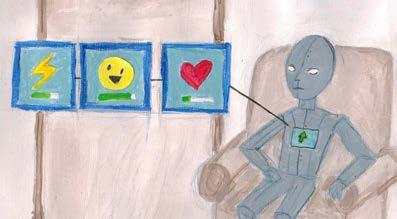
Billy wasn’t too bad. They had worked next to each other for almost two years. This week she’d been put on the S’s, he Art by Ruchini Rupasinghe
on the T’s. St Kilda, Seabrook, Sorrento; Thomastown, Tootgarook, The Basin. Billy would point out the gaps in the alphabet where the old places used to be. They’re filled with factories now, maybe some units; no homes well-off enough to be receiving letters. Lisa knows little about Billy. He has two daughters, he’s older, maybe around 35 or 40, but you can never tell, everyone looks the same past 30, right until the end when their faces droop down all at once. He has a wife who works down the street at the poultry lab. A real wife, Lisa figured. She pretended he didn’t, but Billy knew about Zoe. Deduced as much from Lisa’s muted attitude toward The Company, and the extra money she spent on special occasions in the cafeteria. She didn’t mind when her hours were cut shorter over the holidays, but Billy had to coddle up to Jerry for overtime. He knew, but he never treated her like a pariah. And he at least had the courtesy to look sheepish whenever he returned from Jerry’s office, coughing to stifle the remnants of barking laughter. It felt better for Lisa to forgive him a little.
Now, Lisa looks away from the boys, blinking fast, swallowing. She harboured no grand career ambitions, but there was something comforting about this job that she’ll miss. The smell of paper, slightly warm from the conveyor belts, reminded her of before, when it was normal to have paper in your house, to write letters and read books.
She heads to the lockers and grabs her stuff, supposes she should take home that photo of Zoe. Could be kind of funny to leave it though—a final fuck you to Jerry. She imagines it grimed with the boys’ fingerprints; immediately tucks it inside her jacket pocket. Leaving her entry token in the bottom of Billy’s open locker, knowing he’ll sort it out for her, Lisa walks outside into the frigid air.
It’s quiet on the street, wintery and frosty. Lights come on as she steps underneath them, off again as she moves past. The icy wind rustling through the evergreens drowns out any ruminating she tries. Hasn’t been a winter this cold for years, Billy told her. Even without a TV or radio, she isn’t completely out of the loop. Zoe feeds her some of the news. Used to
tell her more, but it was too unnerving, so Lisa requested a lower frequency of updates. She ponders getting the bus home. It’s quarter past seven and one should arrive in the next 10 minutes. Seems a bad idea to spend the cash though, and likely her coupons won’t qualify anymore. They probably cut you off that quickly. Better to keep walking than find out.
How to tell Zoe? Actually, since Zoe will already know, how to approach the topic? Lisa wonders what Zoe is doing at this moment, imagines she’s started on dinner, maybe showered, tidied away the mess of the afternoon. She’s not sure if Zoe does any of that though, if she does anything at all when Lisa isn’t there. She probably just powers down. Sometimes Zoe just sits there while the data from their previous day is synced and uploaded, prepared to be sent off and evaluated in time for the next pay run. Lisa considered setting up a camera, just to see, but decided against it—she didn’t want to be like that.
The streets are getting busier with the evening rush. Mechanical trees begin to replace the evergreens above Lisa’s head. Getting closer to home, emergency charging stations pop up here and there, the cost per minute taken off your coupons. Lisa watches a couple stop for a charge. She smiles as she passes them, guessing it’s the woman plugging in. It usually is.
Wanting to walk under real trees for a while longer, Lisa turns up a side street and wanders into the path of two men— lush woollen coats, shiny leather gloves— one carries a bottle of wine, the other adjusts the glasses on his nose.
‘Sorry, my fault, wasn’t looking where I was going,’ she says, making to step around them.
‘Wait! Elyse?’ Coming from the one in the glasses.
‘Oliver, no!’ The one holding the wine now, gasping. ‘It’s Lisa. Oh my God, Lisa, hello!’
Lisa peers up at them. Slowly their faces come into focus, and she places them: old uni friends.
‘Oh, hi, sorry, um, how are you? Off to dinner?’
Oliver, looking her over, ‘Oh yep, yes, we are. What have you been up to though? It’s
been, what, like three years?’
She wishes she weren’t wearing her uniform.
‘You know what Oli, why doesn’t she just come to dinner? You know Sophie would love to see her.’
Lisa remembers the name of the one holding the wine: Hamish.
‘We’re off to Sophie’s new place, you remember Sophie, right?’
‘Everyone would be so happy to see you.’
Oliver is grinning at her. Lisa thinks that what Oliver really means is that they’re deliciously curious about what’s happened to her since she dropped off the face of the earth. But it’d be rude to ask her outright, so why not bring her along? A party treat, then they can all find out.
Lisa hesitates. She hasn’t seen any of them since she moved out of college. Bad idea to turn up now. It could be a good thing though—Zoe would approve. Start swimming in those circles again, be creative like you used to. So, she agrees, and Oliver and Hamish tell her that it’s not far now, just up the road.
Arriving, she’s surprised Sophie lives somewhere so close to the units. Probably listed as ‘industrial’, ‘workshop inspired’. The door is unlocked and Hamish ushers her inside, while Oliver announces, ‘Everyone! Look who we’ve run into!’
In the kitchen is Sophie, sparkling eyes and choppy blonde hair. Hasn’t changed a bit. Anne-Marie and Thomas stand to her right. The same expression Lisa read on Oliver’s and Hamish’s faces blink back at her, three times duplicated. Sophie squeals, embraces her, fetches her a glass of wine.
‘Lisa, oh my goodness this is so exciting, where have you been all this time?’
A place is set for her halfway up the table and a plate put down in front of her. Roast ham. Her mouth waters at something not out of a can. Quickly they’re all talking to her, saying that they’ve all been up to the expected things: getting engaged, working long days in the fields they wanted to, and if they aren’t it wasn’t meant to be, you know how it is. It’s not long before it’s Lisa’s turn to share, to pay for her seat at the table. Go on Lisa, give them something juicy after all these years.
‘Working? No, not right now. Oh, you know, writer’s block and all. A girlfriend? Yes! I do have one. Oh thanks, about a year and a half actually. How’d we meet? Well, Zoe, um, well The Company arranged that, but um yeah, Zoe is ah, one of those…so we met that way, at my home actually.’
In the split second of silence that follows, Lisa knows she’s set them up for a great night. It floods from each of them, so fast they can barely hear each other, talking over the beginnings and the ends of each other’s sentences.
‘Personally, I just couldn’t bear to think that the things I talk about with Joey were being reused by someone else’s…else.’
‘Yes, well it’s not for everyone—’
‘I mean I could totally do it. I’d love to be able to turn Marc off sometimes.’ Everyone giggling at that.
‘Shut up, you know you wouldn’t.’
‘Hamish, you know you can’t do that, there’s no, like, off button.’
‘Only joking,’ he glances at Lisa. ‘Sorry, I didn’t mean…how much money does it make you anyway?’
A harmony of hushes and heys, shh you can’t ask that, she’s blushing, look what you’ve done. Lisa swallows the last of her mash potato and clears her throat, trying to give him a that’s-okay-I’m-used-to-it smile.
‘I mean the whole thing is really not that crazy, everyone’s much less lonely now, which was the whole point. They’re very intelligent, emotionally, which I guess
Brutus

Content Warning: animal death
‘Sit,’ I said. ‘Good! Good boy. Now, shake.’
Our dog noticed I was hiding something behind my back, so he gave in. He put out one of his great paws and let me shake it.
‘Just give him the ugly thing,’ my brother said.
‘Go away, Sal,’ I told him. There was a wad of hope in my throat. It felt as fragile as the sunlight flickering through the spring rainclouds. I held the toy to our
is what you want in a partner, right? And Zoe’s language has come a long way since we’ve been together. I got her pretty early on, but the technology keeps improving as they learn from us. As she learns from me, I mean. I suppose I influence her.’ Isn’t that only natural?
‘Not to interject, but isn’t the real question what happens to everything they upload?’ Sophie taking the reins now.
‘Yes,’ Oliver chimes in, ‘and of course, like you said, Lisa, it’s really no different, but it’s not as though everything she comes up with is her own, is it? I mean, everyone is influenced by the people around them and their pasts and what not, but isn’t that all she is?’
Lisa wishes she could dive into the gravy pooled on her plate.
‘Do you know what happens with the behaviours she gets from you? I assume they explain, like, where it’s all going?’
If only. Lisa’s voice catches in her throat, what to say when it’s all been said already?
‘If I told you, then I’d really be in trouble when I got home,’ she grins, hoping she can pass that off. She releases a breath when everyone dissolves into laughter and Oliver raises his glass to her.
They all move on over dessert, Anne-Marie and Thomas expecting, having the nursery prepared, three weeks to go now. Lisa, ears ringing, thinks again about Zoe at home. What does it matter anyway? In five years, Thomas will be on to the next
one, repeating Anne-Marie’s whispers to another woman. So what if Zoe gathers data and experiences from other companions like her? How is that any different from Thomas’ memories of Anne-Marie? Everybody recycles words from other lovers. It’s not like it’s her Zoe saying those things to someone else. Zoe has become the most normal thing about Lisa. Normal to fall asleep watching a movie with her, to relay the night’s dreams to her in the mornings. Normal when their bodies are pressed together, Zoe’s cold fingertips tracing Lisa’s shoulder blades afterwards. Normal when Zoe writes messages on the foggy shower door for Lisa to see while she brushes her teeth. Normal and soft and human. Why does it matter if they trade their normality for companionship or coupons? Everyone loves and makes their living somehow.
Knowing they’ll be anxious to talk about her, Lisa does them a final favour and excuses herself once dessert spoons start to clang against empty bowls. She thanks Sophie for dinner, Hamish and Oliver for bringing her along. She sees herself out and back into the night where it’s started to snow. It’s only the second time she’s seen snow in her life, the first she’s seen it actually falling. She thinks of Billy, hopes he gets a chance to see the snow fall before he goes home to his wife, as Lisa goes home to hers.
pet’s mouth.
‘Here, Brutus,’ I said. ‘Play.’
It was a sort of monkey. The body and head were only burlap bags I’d filled with cotton, but for the arms and tail I’d cut up lengths of my blue skipping rope. It was alright because I knew the rope was knotted tight and tough enough for Brutus to really bite; to really have at it.
Brutus sniffed at it once, twice, then pulled back his paw.
A lazy breeze trawled through and I pretended it was the rustling of the cornstalks I heard, not Sal’s snickering. I made sure not to look at him, but he walked up
beside me so that I couldn’t cut him out of my periphery. He scratched at the bristles on his face and squashed a smile with his lips. Without my wanting it, my foot started to twist, crunching gravel under my shoe. The coarse sound made me nervous, so I stopped it and focussed on our dog. He stood there in front of our barn’s wall. That wall was bright red when I was little, when Brutus was a pup. Now, it had turned ruddy and brown, just about the same colour as the spots throughout Brutus’ coat. He was part of this place just as much as me. Something about that steadied me enough to give him another go.
‘Come on, bud,’ I tried, kneeling down and away from Sal. ‘It’s yours. Here—take it.’ I tossed the monkey at Brutus’ feet. The dog stared at it, at my monkey lying on the ground. The monkey looked back up at him. Both seemed to be waiting for something. It reminded me of when Sal found our sow dead by the trough. She’d not been sickly the day before, our sow, but there she lay, on her back, mud-soaked and stiff. Our sow looked up into his eyes, as if for approval. My brother looked down into hers with a complete denial of recognition on his face. I watched him from the window, in the house. Sal stood there so long I thought he’d died, too.
Later—after he’d dug the grave —I heard Sal’s boots land heavy on the porch. My bones turned hot, and I ran to my room before he opened the front door. When I
went to sleep, I had nightmares about the way he’d looked at our sow.
***
I watched Brutus without breathing. Eventually, he turned his hindquarters on me and my monkey, curling up on the dirt. My ribs felt too tight on my lungs and I knew my voice would wobble if I spoke, so I said nothing. Still kneeling, I found myself unable to face my brother. A shameful taste like vinegar welled up in my mouth and I tried not to let it show. Then, a hand landed on my shoulder. Foggy memories of my brother’s face, warped and impenetrable in my dreams, knotted my throat closed. Peering up at Sal, I feared to see a stranger who had chosen to forget me. But I watched as my brother saw me. His eyes went as wide as mine; his shoulders hunched like mine had over the sadness in my stomach. A fire in my nerves—a
How to Catch a Falling Knife (ESC
Bella Hall
EXT. SUBURBAN STREET - CHRISTMAS EVE
Rain pelts down. A taxi pulls up to the curb. Brakes squeal as it comes to a stop. The back door opens. Two sneaker-clad feet step out. The door SLAMS shut. The taxi pulls away. In the glow of a streetlamp, we see ANNA (26, sardonic estranged daughter) standing in the rain, an unopened umbrella in one hand and an overnight bag in the other. She breathes in the crisp air and exhales, tilting her head to the sky. The rain slaps hard against her face.
Her gaze lands on the house in front of her, covered in Christmas decorations. She sighs, puts the umbrella up and walks toward the front door.
EXT. ANNA’S CHILDHOOD HOME, FRONT PORCH - CONTINUOUS
Anna steps onto the porch. Standing out amongst the rest of the Christmas decor is a comically large nativity scene.
Anna looks at it, perplexed. She locks eyes with BABY JESUS and makes a face. She knocks on the door, not taking her eyes off him.
EXT/INT. ANNA’S CHILDHOOD HOME
FRONT PORCH/ENTRY WAY - CONTIN-
UOUS
The front door swings open. DANIEL (21, Mummy’s little frat boy) catches Anna in the act of blasphemy. He looks at Anna, then at Baby Jesus, then back at Anna.
DANIEL
Jesus, Anna. Anna, Jesus.
ANNA (to Baby Jesus) Sup. She looks at Daniel.
ANNA (CONT’D) Sup to you as well.
DANIEL
Sup right back at ya. They chuckle awkwardly. A moment of silence.
DANIEL (CONT’D)
So, are you just gonna be weird and stand out here or are you gonna come in?
ANNA
You know what? I think I’ll stay out here with my buddy Jesus. And those dudes-She points at the THREE WISE MEN.
ANNA (CONT’D)
--They look like they know how to have a good time.
fire that had been burning for a long time—went out. My throat uncoiled and I couldn’t stop myself from speaking.
‘He doesn’t like it,’ I heard myself say.
‘He will,’ my brother said. Sal picked up the monkey and called to Brutus, exciting him with playful pats on the rump, dancing a jig all around him. Sal waggled the monkey at him, wrenched it back, waggled and wrenched, waggled and wrenched. Brutus couldn’t contain himself: he chomped the monkey’s ropy tail, he held on, he pulled and pulled. Brutus really bit; he really had at it.
Sal didn’t look at me, but I knew he saw me wipe my eyes. He said nothing of it. I didn’t love my brother, but—sometimes—I thought I could.
Daniel laughs loudly, but cuts himself off with a quick glance inside.
DANIEL (low)
Good to know you haven’t changed. It’s nice to see you, though. In the flesh...Your voice sounds different over the phone. Anna smiles earnestly. From the living room, we hear ROBERT (60s, alcoholic hard-ass).
ROBERT (O.S.)
Who the fuck’s letting all the cold air in? Anna’s demeanour shifts - for a split second, she’s back in the role of the child. Daniel doesn’t flinch. He moves aside to let her in.
Anna lowers her umbrella and goes inside. Daniel shuts the door behind them.
Photography by Hallie Vermeend
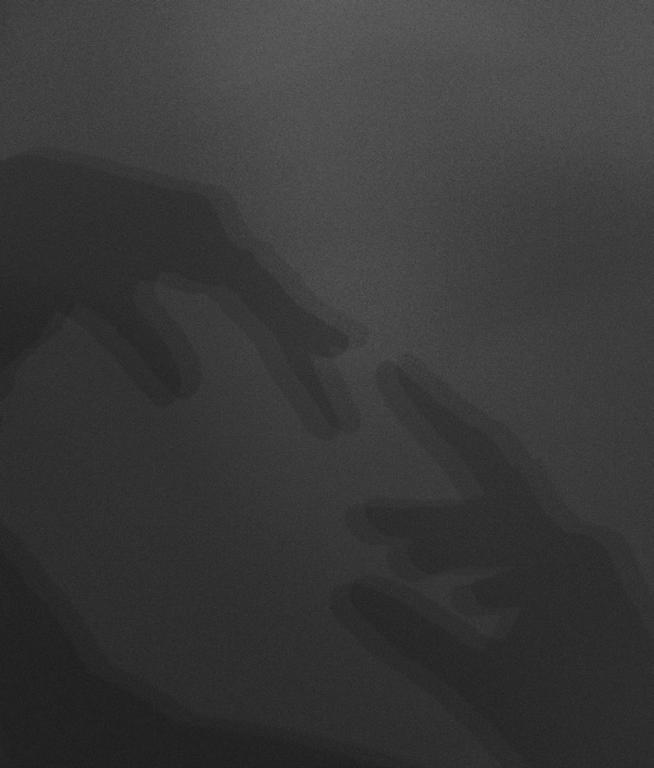
Hold
Jayden Alexander responds to a global wave of anti-trans legislation.
breathe in hold hold
one. two. three. four. breathe out across oceans my brothers and sisters are dying hold on, please do not become a statistic arrow nocked, bowstring taut against my cheek hold
your aim; do not fire more arrows, nocked, hold them, delicately straighten my back, muscles flexing, all this kinetic energy has to go somewhere hold hold
five. six. seven. eight. when did all these arrows appear? hold
them, power through string digging into skin, wood splintering hold back; tears a splintering bow, shrapnel tearing layers of skin and muscle and flesh hold
up, how are you holding up these arrows, dancing on your nerves, prickling against the fibrous fuse of your being hold
still, it will hurt less then, letting go all at once hold down; delicately on bleeding wounds, metal tips of arrows embedded in bloodstreams a thousand stakes burrowed in flesh whipped, gushing red skin hold onto me, please I cannot become a statistic hold me; delicately lying on the grass; salt-tinged petrichor drowns the lingering heat the air in my lungs until grass takes hold of the echo of my shadow
Sabine Pentecost writes two poems about the Anglesea Main Beach from vastly different stages of life
Spying on the Sea
Sabine, age 6

Through the dunes seagrass crackling “I must not be seen,” I said.
The sea is glistening in the sun through the morning light lapping the rocks.
As I walk onto the beach my feet are sinking
Main Beach Reverie
Sabine, age 19
Bleached tumbleweed scratch at my toes, popping seaweed gems between my lips like baby teeth. Filling wet paper bag lungs with the same ocean air.
Waves outrun one another again and again, out of breath and gnashing a dark, foamy growl. Snarling and surrendering to the glinting edge of a rock’s glistening head.
Sand granules match the ones stuck in the lining of my old converse, laces fraying and glitter glue doodles fading raised crab tracks patterned under dish soap foam.
Golden sun evades the chasing gloom, I remember when sepia skies told stories of fire meeting water’s edge: bumper to bumper on Princes Highway to escape Christmas Day.
Smiley laughing children jump into the wet cold ocean. They seem so happy, goose-bumps all over their arms and legs, golden-brown skin all over their bodies.
Gull laughter and young feet splashing, still soft on the bottoms so the shells scratch harder. Unfazed kids bob up above the waves, buoys of blonde and blue lips tangled ankles in boogie-board straps, velcro nipping at goose-bumped limbs. We’re used to a summer that feels dangerous and golden, still. lower, lower, lower into the soft golden sand.
The Mark on the Wall
Elysha English
I feared I would float through the fog forevermore I felt I had finally furled inwards for good my spine curved in hard shellac a divot untouched and static tossed around endlessly in an anything-but-lucid-dream-state until I found myself spat out ashore and already stuck with salt softened skin sewn into webbing of words I try to believe as they pull me closer to you I found I have diffused
into cologne lingering on my bedsheets with traces on my t-shirts and red ink secrets marked and pinned down with nothing making my mind turn tangled and floating away just an emptiness like a clumsy metaphor for I am here with you and I am no longer just letting things happen the penny said thrown back and forth and weighted I am sinking deeper but I am stalling for I am staring at the whorls on the concrete ceiling
I am in my body and you are beside it.
Dandelions
Anthony Vezzu
The father stares at slack eyelids. It is summer, but the ventilator rasps all light. The bare skull of his daughter – buzzed and broken beneath his hands –looks like cardboard crumpled in the rain. This ending is a paperback mauled by flames of mouthless prayers. Knees thud, head slumps, chest heaves. He smells dandelions.
The boy’s calves brush past fuzzy dandelions. His mother speaks over crickets kissing summer:
“These sweet weeds… grass made holy with fur crowns, pure prayers dropped down by angels. Breathe one out; wish.” Her sharp skull –sick, ricocheting sun – eclipses him, ending childhood. The boy seeks God in the lines of his hands.
Nights spent scouring fields with secret, working hands fill three-dozen shoeboxes with dandelions.
The forecast heralds wind. The boy feels the ending
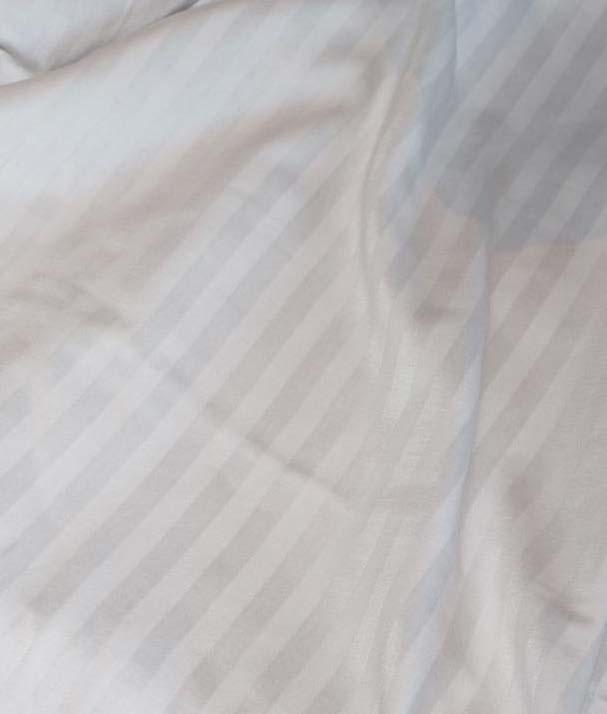
now, opens the boxes in their yard, sees summer in his mother’s smile. The air turns white as her skull: cremation-cured, blessed by the blaze, but not by prayers.
Faced with another skull he cannot mend, mere prayers bring only ending’s ashy taste, yet still his hands meet. Dandelions break apart in the summer.
Inscriptions
E. U. Wood
Browsing my second-hand shelves drifting between and across old spines, hangin’ tough You, greying artefact, what have you inside?
A scrawled inscription Paul wrote to Elena spirit of Yuletide, ‘51 Love, the kind uncertain bestowed upon her with assiduous affection
these pages in his hands, into hers, the moment of giving did their eyes meet?
Photography by Wan Makhzanah
Morning Transit
Lilian Knight
This morning, I made a woman cry –
Not for any particular reason, I just happened to stall within her line of sight.
On a day when rain trickled down her throat, Time unforgivably wasted –
A pair of thread-bare, hand-me-down, second-hand socks.
The bar of soap wilted its way to a stump, The milk all soured on the table, Bread mouldy & hard on the too frigid floor,
Coffee spit out bitter & brown –
A morning of mishap, A woman falling down.
On the morning that I made a woman cry, I sat on a peeling windowsill, Watching droplets tumble face first –
They’re falling from too high.
As if to say we are Here. Alive. Together.
Could they predict their love, his hands in hers, would wash up on my shore?
Did Elena care for you, Memory of Paul, held closely to her end
Did she hate you, Reminder of Paul evicted, passed hand to hand
Mirth faded, lookin’ jaded a mystery—occupying my shelf, keeping them alive A spine among spines.
Moments waiting for their place on the crochet hook
Elysha English

Photography by Angela Nacor
A lost seagull flies between city buildings—I will keep it in my notebook until I can find just the right metaphor and find its home in a poem—not a yarn ball of words
Like the tree beside the butter-yellow-house turning red top down—finding meaning down the stanzas—spoken bare or only in each line break—melding images together—looped on the needle
In their different shades of longing and assonance—kept together—in wait—as granny squares pressed in leather notebooks All important threads—will I ever consider myself a poet without dread?
I have been waiting—since I was seventeen—for the right stanza to say how I used to say thank you to all the candles I blew out—pull through the row
A second gull—two men smoke on the pebble-coloured roof in straw hats
The Lifeguard Problem
Charlie Renfell
Sun. Sun equals busy. Sun equals Sunday equals weekend equals busy. Sun equals heat equals sunscreen equals sand sticking to me equals sunburn. Sun equals yellow and equals red and equals whistle nametag water bottle.
Sun equals Sunday equals penalty rates. Sun equals sweat equals iced latte equals dehydration equals dizziness. Sun equals waves. Waves equals swimming and beach day. Waves times swimming plus family and friends equals fun.
Sun plus fun equals overconfidence. Overconfidence to the power of busy equals recklessness times five thousand equals risk.
Sun plus waves plus confidence plus whistle plus rescue tube plus radio plus resus mask equals lifeguard.
Recklessness plus sun plus busy minus lifeguard equals drowning.
Drowning equals fear in your eyes.
Lifeguarding equals discernment plus
Flailing about equals ‘stop pretending to drown’
Fear in your eyes times practice training plus focus plus whistle plus point plus jump equals rescue.
Rescue equals swim like hell plus heart beating out of my chest equals get out of the way equals sand in my eyes again equals grab onto the tube equals are you okay equals please please come on—
= praying I didn’t wait too long to go in
(Bystander eyes burn as badly as the sun) A radio cracks:

Photography by Hallie
Horoscopes: UniMelb Undergrad
Lani Jaye and Sophie He
Bachelor of Design
Either you’ve given up on a regular sleep schedule or you’ve stopped sleeping completely. Why bother when your dreams are (archi)tortured by looming deadlines? While you commenced your degree with utopian conceits, you’re dragged down by the mundane present. You find yourself struggling to find study spaces and hurriedly completing chores while streaming an F1 race. Innovation feels less grand when it is assigned and graded. You’re a kind person who will shelve responsibilities to be present for loved ones; but when you’re dropping everything for a cut finger, it might be procrastination. To your friends and family, you feel like home, but you’re struggling to build a home for yourself. Imagination isn’t limited to resplendent endeavours and you’re allowed to create a better world, even if it’s just for yourself.
Bachelor of Science/Biomedicine
Bachelor of Commerce
You navigate university with a meticulously-planned pathway which resolves neatly at a Big 4 firm. project far into the future, lucidly assessing potential risks and rewards. While admirable, you may inevitable vicissitudes of university life as threats rigid ambitions rather than opportunities to change You’re befuddled by your peers who spend their years gormlessly roving between majors instead to internships and graduating on time. Though, as your degree may be, you still chose UniMelb–the impractical of universities. Breadths may haunt planner, but they’re a chance to learn. Select subjects instead of WAM boosters and trust your Remember there are nice things in life that aren’t at Deloitte. Friends, sunlight, green grass and mandarins may inspire you in unexpected ways.
Appearing contained and reserved, you surprise others with your passion. Empiricism and reason do not curiosity and creative thinking. Indeed, as you like to believe, they are stronger together. Still, your days from the romantic figure of scientific genius. Faced with a deluge of weekly tests which contribute a percentage percentage to your grade, it can feel like your undergraduate is merely a trial you must undertake before allowed to do the fun stuff. Within a paradigm of caution, it is easy to feel like a caterpillar afraid of change. you must transform because, by nature’s law, a caterpillar eventually turns into a butterfly. There is no shame for help, reducing your course load or deciding not to take the GAMSAT.

Undergrad Edition
Bachelor of Fine Arts/Music
meticulously-planned career firm. Your thoughts potential perceive the threats to your change and grow. their undergraduate instead of applying Though, as practical UniMelb–the most haunt your course interesting your resilience. aren’t a plumb job and a basket of fresh ways.
Like music composed wildly past midnight, your soul occupies the fine line between grace and ambition. There’s always some sort of rhythm humming in your head, with or without your Marshall headphones on. There’s a high chance that you’ve made over 300 playlists on Spotify. You sometimes feel like you have been denied the traditional academic rites. But unlike the Parkville students who must fling assignments into the Canvas void, you can see your skills visibly grow and improve as you create tangible art. Whether it is the physical artwork mounted upon the wall or the ephemeral applause of an audience, you can witness the deserved rewards of your learning. Enjoy those moments of accomplishment and remember that coffee is not a meal replacement.
not preclude are a far cry percentage of a before you’re finally change. But ironically, shame in asking

Bachelor of Arts
You’ve spent the last five months seeing Foucault’s name more than your mother. While prospects appear grim, you have always been able to see possibilities where others only see a lost cause. Your optimism and drive reassures friends. Within your large and anonymous cohort, you sometimes feel alienated and hopeless. Maybe you looked at the fee table once and freaked out. Maybe you wonder what life would have been like if you’d accepted that other university’s LLB offer instead of following your dreams. The creative thinker in you is usually belittled by the vast majority, but little do they know, your superpower is knowing what ‘neoliberalism’ means.
On Morgan Dick’s
FAVOURITE DAUGHTER
Favourite Daughter starts with something like this. Mickey, a kindergarten teacher and functioning alcoholic, learns of her father’s death from an obituary. There’s no call of despair from her mother or texts of condolences from friends. But, a phone call from a lawyer reveals Mickey has been left a hefty inheritance of 5.5 million dollars from her estranged father, with the sole condition that she fulfills seven therapy sessions.
Mickey doesn’t know why her father – who’d abandoned Mickey and her mother 26 years ago – would suddenly do that for her. As Mickey deals with an alcohol addiction much like her estranged father, her clumsy attempts at sobriety and self-hatred for the parts of him she’d inherited felt painfully raw and realistic. The novel doesn’t present alcoholism as a quirk or throwaway trait one might have. It’s much more definite, a condition that is both a lifeline and demise for Mickey. While her character seems irredeemable on-page, delicate parts of her shine through at times. Like, the fact that Mickey is nurturing and protective at her core. She guards memories of playing at the park with her father, and obsessively protects her students to the point of risking her job. The good parts of Mickey become her downfall, and it’s a heartbreaking sight to witness.
What Mickey also doesn’t know is that her mandated therapist is actually Arlo, her father’s other daughter. Her half-sister. Arlo’s a recent divorcee, burdened by the nature of her job and frustratingly self-righteous. She blames herself for a past client’s self-inflicted demise, and most times, she’s bulldozing through signs of a career burnout with no care of how it may affect her way of helping others. At times, her entitlement shows – begrudging her deceased dad
for not leaving any form of inheritance, despite being his shadow and cared for him until his last breath. It may seem valid at first, but as we continue on with her internal monologue, it simply reads immature. Above all, Arlo is mostly lost with her dad’s absence. While Mickey lived to spite her father and prove him wrong, Arlo stuck to him out of responsibility. Despite their differences, they’re two sides of the same coin. They face each other with similar tribulations without knowing it has the same roots, showing just how trauma and loss can wear different faces.
What occurs in Favourite Daughter isn’t necessarily a tale about long-lost sisters finding their way to each other, but something much more messier and uglier, all at the hand of the man they grieve. Throughout the novel, we see both Mickey and Arlo continuously toe the line of ethics and sensibility as they navigate their loss. Whether it’s taking breaks from teaching children to drink alcohol in the bathroom, or giving backhanded advice to a client you’ve figured out to be your half-sister
as some twisted way of unloading your resentment, recovering from the situations they’ve continuously put themselves in feel in vain.
Regardless, Morgan Dick beautifully weaves a story of grief and intergenerational trauma into a premise that seems formulaic and contrived at first. It leaves you reeling and frustrated most of the time, but in its grittiness, it’s real.
Favourite Daughter by Morgan Dick is now out in stores.


Angela Nacor
Golden Plains: A guide for solo festival-going
Now, I have been to plenty of concerts and one-day festivals by myself –but never a camping one. Golden Plains was the first multi-day festival that I attended alone.
As one can expect, I was slightly worried about going, particularly as a woman in her twenties who wasn’t an avid camper and had no idea what they were doing. So yes, it had its lonely moments, where I was trying to figure out how to set up my cheap Kmart pop-up tent in the thirty-four-degree heat. I also camped far away from everyone, in the “outer outer space” camp, which didn’t help as I had to trek to get back to my tent.
So if you’re planning to go solo, make sure you get in a bit earlier to be near the main stage area, for safety and for making friends, depending on if you’re a lone wolf.

My advice for camping festivals: try and find a shady spot because Labour Day weekend is always scorching.; bring some kind of awning, a fan, and an esky with ice; and camp near toilets and showers so you don’t have to trek to those late at night either.
In terms of food, they say to bring mostly dry foods like trail mix, muesli bars, chips etc. but I don’t think it’ll suffice to sustain yourself.
If you bring an esky, bring plenty of protein-based things – like ham, salami, beef jerky – and even those Aldi pre-packed salads like couscous or pasta salad so you can have actual meals ready.
Also, bring a bulk water carrier – it really helps when wanting to brush your teeth or clean something or have water readily available, so you don’t die of thirst.
In terms of people, you can’t expect people to just automatically be your friend, although it does happen sometimes. You have to go up to people and make an effort, strike up a conversation with the people dancing next to you. While you’re eating at the food stall, go up to the person sitting alone. You never know.
The positives of going to this festival alone: I could do what I wanted, when I wanted. If I wanted to go on a side quest instead of watching a set, I could. I love going to festivals with my friends, but there is the hassle of always sticking together, or losing each other, making compromises about which artists you want to see. I didn’t have any of that; I could go and get food in the middle of the set, and I didn’t have to worry about making it to the very front or getting a certain spot.
Also, when you’re with a big group of friends, you’re less inclined to meet new people. When I was by myself, it meant that I spent time talking to people double my age, dancing with them, and learning from them. It was freeing.
Sofia Perica

Book Review
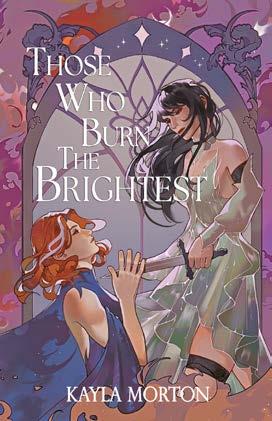
Eira Isolde is a fae heiress – ex-fae heiress, actually. Sent to live in the mortal realm, she’s inexplicably intertwined with Meilin Azelie, a fellow heiress. Stripped of their powers by the cruel king Durante, they are left to test their mettle in The Demir Trials alongside other heiresses that make up The New Reign. Eira and Meilin circle each other, simultaneously cautious and compelled.
I will admit, I haven’t read a book in months, so, when I picked this up I was a little worried that the world would be too difficult for me to wrap my head around. I wondered if I might have somehow lost my critical thinking skills. Usually, when I read a fantasy novel there are vocabulary, settings, characters and motivations that are so unfamiliar it takes me the entirety of the first act to reach a somewhat passable understanding of what’s going on. I managed to read the book in a record-breaking few days, and was left with the glowing satisfaction of finally breaking my reading slump. Personal achievements aside, there were some aspects of Those Who Burn The Brightest that I found really enjoyable.
Those Who Burn The Brightest by Kayla Morton is a young-adult fantasy novel that covers some formidable themes. Morton explores queer allyship and neurodivergence with ease, embedding them into the core of her characters. Each theme plays a part in developing character stakes and informing their decisions, and it was interesting to learn about the way Eira works as a person.
Morton’s writing style in Those Who Burn The Brightest leans towards poetic – almost lyrical – which lends itself to an aesthetic befitting the plot. The world is lush with character and as we delve further into the storyline and see more of the world through Eira’s eyes, readers move deeper and deeper into a whirlwind of adventure.
Though the storyline can be rather murky at times (I suppose that might be due to there being a sequel in the line-up), it was interesting enough that I wanted to see where it would go. However, there were scenes in the last act that I found particularly confusing. A mixture of poetic language and unclear dream sequences can make for a slightly befuddling reading Hayley Yeow
experience but that was most likely the point. The scenes jump back and forth, cutting between unrelated dreams in the same way many actual dreams do. It felt like we were going through what the protagonist was going through – living through these experiences from her eyes. It’s ambitious and at some points elegantly handled, but not without its stumbles.
For one, I was genuinely surprised at the level of violence. I’m not against having violence in a young-adult book – I think it can explore important things – but there were moments I almost wondered if this should be an adult book. I think it errs away from being gratuitous but it does toe the line.
I also wish we had Meilin’s point of view if only to develop an even deeper understanding of her character. We get a really close look at Eira: she is messy and flawed and has a stubborn streak so strong it could almost be frustrating if you didn’t sympathise with her so much. She’s a character who has had her choices stripped away from her and is left with the pieces that she has to try and glue back together. It’s also a refreshing view of neurodivergence in fantasy that I don’t often see. While it’s never explicitly mentioned, I can see people relating to the way Eira functions as a person – I certainly saw parts of myself in her. But Meilin is an enigma. We get glimpses into her character, brief glints of intentions and personality, but not enough that I left with a full emotional attachment to her. I wish we had seen more of Meilin the way we saw Eira.
The dialogue between Eira and Meilin is another place the novel really shines. They banter and tease, even bicker – but balance it with vulnerability and the kind of romance that makes your lips curl in an involuntary smile. Their relationship often remains nebulous (what situationship isn’t?) but it’s easy to tell there’s real affection there.
Those Who Burn The Brightest was a refreshing change to other fantasy romances I’ve read. Where I think Morton takes it a step further is through the exploration of queer community and allyship. Community is hard-won in other fantasy realms, but as Alfie, the bartender of the tavern Eira frequents, simply puts it, “We protect our own here.” No caveats, no facades, just a place to stay with one less burden on their shoulders.
Overall, I think Morton’s debut has some powerful work, and I’m excited to see where she goes with the next novel in the line-up. It isn’t flawless but it’s heartfelt and genuine, which is all I can really ask for.
a blazing debut from Kayla Morton
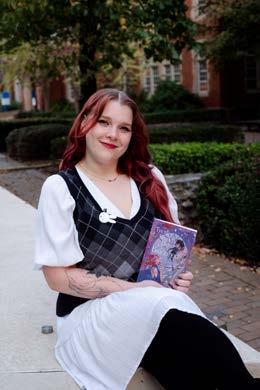
Queerness in fantasy, explicit queerness like the one in
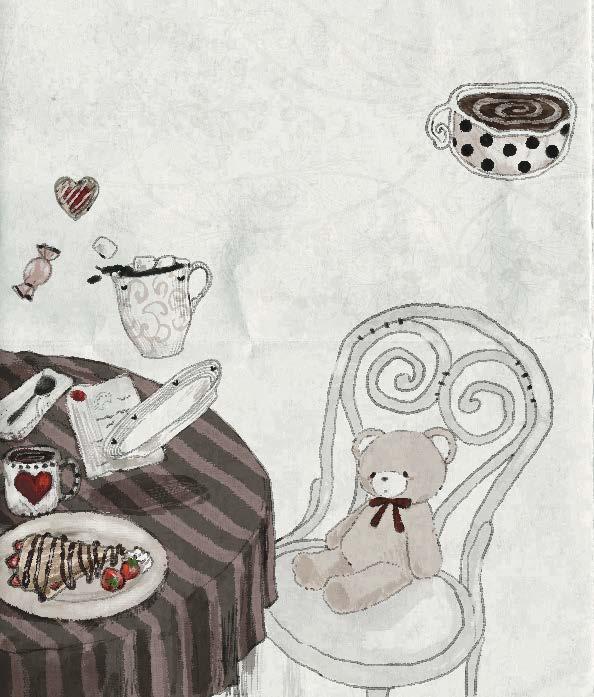
HOT! HOT!HOT! HOT CHOCOLATE!
YOUR EXPERT’S GUIDE TO HOT, SWEET AND DELIGHFUL CHOCOLATE AROUND CAMPUS
Zeinab Jishi
Illustration by Elsa Li
One thing about me is that I love a chocolate sweet treat. Double chocolate muffins, chocolate chip cookies, pain au chocolat—if it has the word chocolate, you can bet I’ll be eating it. Among all of these however, is a clear winner. A hot choccy will simply always have a unique place in my heart, providing me the same buzz caffeine does for others, but somehow fails to do for me. Because of this, I feel like my tongue has developed special tastebuds for chocolate, giving it a unique ability to taste intricate flavours within it.
MUST HAVES
Carte Crepes
It is not in my nature to gatekeep, or to leave the best for last. Parked across from the Baillieu Library and tucked in the corner of the John Medley building, Carte Crepes is the perfect spot for a cosy hot chocolate. A cup there is certain to bring warmth to a cold, hard day of reading (and writing) pretentious essays riddled with long words you’ve (or for that matter, anyone else) never heard before. The chocolate is rich, but not overpowering and is incredibly smooth. And if you weren’t already convinced, it won’t break the bank with a small sized cup at $4.40! With neighbouring walls covered in ivy, you’ll definitely feel like a mysterious, albeit absolute academic missile, sipping on a hot choccy while reading a book.
Castro’s Kiosk
This iconic cafe, like Fidel Castro, hits a home run for perfect hot chocolate on campus. It is a perfect spot to struggle with your fellow comrades (other students struggling with assignments during mid semester) while sipping on uniquely flavoured hot chocolates. Castro’s Kiosk provides a variety of delicious hot chocolate flavours: White Chocolate, Cherry Ripe, The Perfect Wave, and the list just goes on! Personally, I go for the classic regular hot chocolate which has a unique, more subdued flavour compared to others. Here at Castro’s, they appreciate the bitter origins of the hot chocolate, rather than covering it with overwhelmiing sweetness. It is also one of the cheaper options on campus, priced at only $4.50 for a small, with flavoured options a little pricier at $4.80.
HONOURABLE MENTIONS
House of Cards
So as to not leave this on a low note, I would like to give an honourable mention to House of Cards. With its cute gimmick of calling you by a selected card, House of Cards saves you from the embarrassment of a barista’s notoriously awful spelling. I can promise you this, House of Cards creates a solid hot chocolate that will definitely leave you satisfied. Priced at $4.80 for a small, you won’t feel guilty for indulging in its sweet, chocolaty goodness. It has two separate, but not so far away locations on campus—Building 168 and just a few steps away from Building 168—making the cafe conveniently located from wherever you find yourself studying. This added bonus, however, can also cause stress for an indecisive person who just so happens to be right in the middle of them (yikes). Here’s a little secret as well… pull the Joker card and your drink will be on the House!
Journey’s Cafe
Tucked in a small corner on the 4th floor of the Student Pavilion lies an unexpected café—a joint initiative between the University of Melbourne and Asylum Seeker Resource Centre (ASRC), providing training and employment pathways for refugees and people seeking asylum. They have the cheapest hot chocolate on campus at only $4.00 and let me tell you—it tastes really good. A hot chocolate made for Goldy Locks—not too sweet and not too overpowering, but just right. The in-door seating is also perfect for days when you neglect the weather app and naïvely trust Melbourne weather for consistency, leaving you severely underdressed.
AVOIDS (WOMP WOMP)
Professors Walk Cafe
“Boring, yawning, sloppy, lazy,”
Abby Lee Miller helped me find the perfect adjectives to describe this hot chocolate. Literally tasting like absolutely nothing. I was left even more disappointed when I found out I paid $5.00(!!!) for what I would describe as water with a slight note of chocolate. While it is very conveniently located in the Baillieu library, I would rather walk the extra steps to Carte Crepes. Competition is tough in The University of Melbourne hot chocolate market and for me, Professors Walk simply missed the mark.
Scholar and Co
I paid $6.00 for a small—which should be renamed extra small as it was gone in TWO sips—and I have only one word for it. Mediocre. That is all I have to say. Located within the walls of Stop 1, it is definitely not worth the wretched journey there. Instead, I suggest you take a couple of extra steps to the 7-Eleven across the road and get yourself a solid, large hot choccy for only $3.00!
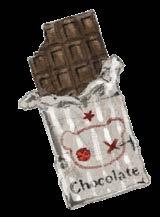
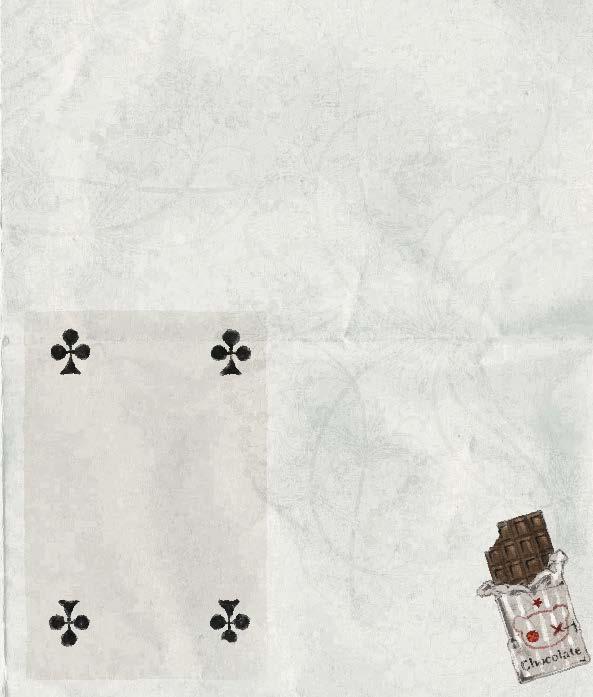
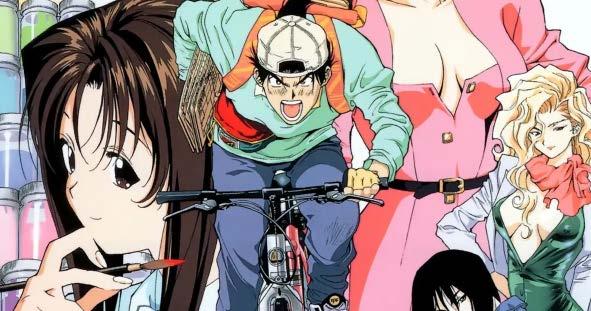
YOUR ANIME OVA BOOKLIST
Original Video Animation – OVA. A cornerstone of the Japanese animation industry in the early days of physical home media. With fluctuating budgets and release schedules, direct-to-video OVAs could be the home of quick and dirty series and specials. However, in the hustle and bustle of university life, quick and dirty is the name of the game. For your booklists this year, let’s run down the OVAs for the university layman.
Golden Boy (1995-96)
Study, study, study! The motto of many a Discovery subject tutor, but also of Golden Boy’s main star. Adapted by Hiroyuki Kitakubo and A.P.P.P., the series follows 25-year-old Kintaro Oe, who upon leaving law school, travels the country on his bicycle, educating himself through the odd jobs and the beautiful women he comes across. That description should suggest two things: for one, we’re going to a lot of different places around Japan. Each new job brings with it an entirely fresh cast and environment for us to sit in; from respectable but seedy mansions, to a competitive swimming school. The different learning opportunities brought to Kintaro, along with varied character dynamics, give each episode a unique
flavour, as well as excuses for gorgeous animation.
For two, girls. There’s a lot of pretty women in this show and boy, does Kintaro know it. If you don’t like sex in your movies look away now! This is a sex comedy in anything but the word—unless you count whatever a woman does in private with a smooth and powerful Bimota Tesi 1D as intercourse. It can border on explicit, and while it’s not reliant on sexual humour, the story often originates from Kintaro’s perverted nature. What sets him and the show apart from others in this bracket however is perhaps its earnestness: even at its least tasteful, Kintaro never acts maliciously or rarely even gets his way with a girl. His sincere and studious nature make him quick to
warm to, even if just for the sake of seeing his face pulped in various shades.
Now me calling Golden Boy outright obscure would be deceitful of me. Anyone with even a passing interest in anime has at least heard its iconic English dub. Produced by ADV Films, you’ll recognise a lot of their regular cast roster like Tiffany Grant and Allison Keith from their Evangelion dub. Doug Smith’s Kintaro brings an enthusiastic energy that makes this one so beloved. Don’t skip out on the original Japanese though – Mitsuo Iwata’s take has a softer baseline that brings out the complexities of his character.
Tom Weir-Alarcon
Animation Runner Kuromi (2001-04)
Deadline crunch and executive dysfunction has never sounded so ska! Akitaro Daichi and Yumeta Company’s two-part workplace comedy follows animation school graduate Mikiko ‘Kuromi’ Oguro, who lands a dream gig as at her favourite studio—only to find herself as the lone production manager, as the studio director dies of a heart attack and her team’s next show is due in mere weeks. If that sounds fast, don’t worry—that’s in the first three minutes. Yes, Animation Runner’s pacing is a bit much at first; introducing animation processes, terms, and characters fast enough to make a film student blush. While this is great at sympathising the viewer with Kuromi’s scheduling stresses, it takes a bit longer to feel comfortable within the work. Once you get a grasp of the lingo though, the show rewards you with a terrific combination of slapstick comedy and biting industry satire.
Hajime Watanabe’s character designs fit this mould wonderfully, with each character made distinct with clearly telegraphed personalities, yet folding like putty when humour arises. It also allows the series to get a bit serious when it needs to. The second episode slows down a bit, with the introduction of another, more seasoned, production manager to the team, presenting a more intricate commentary on the industry’s infamous crunch culture—should the artistic quality of a production be sacrificed on the altar of deadlines? In fact, for such a passionate show, I was surprised at how cynical the conflict was painted—Kuromi may be in the right, but she’s fighting against the very nature of the industry.
The English dub is also stacked for its time, with New York based talent Lisa Ortiz (Sonic X) and Suzanne Savoy (House of Cards) holding great performances as Kuromi and her mellow director idol, Shihonmatsu, respectively. There are some odd choices here and there—Rachael Lillis’s faux-Russian accent… not so good—but it at least understands and upholds the material. Pair everything with its bumping ska soundtrack by Toshio Masuda of Naruto fame and you have a heartwarming, yet raw, look at the animation business.
Galerians: Rion (2002)
Future life prospects? Bombed. Homework requirements? Through the roof. With the stress of uni and adulthood mounting you, there needs to be an outlet. Masahiko Maesawa and Enterbrain’s adaptation of the 1999 horror game offers a gateway drug, slick with biopunk grunge and teenage angst. It follows Rion as he awakens in a lab, drugged up with psychic power, void of memory and hearing someone’s voice—begging him to find her. Admittedly, the story isn’t all too great here, probably due to some awkward pacing. Struggling to balance the game’s plot with the gameplay action in-between, G:R ends up mashing them together, leading to a third act overstuffed with feverish one-on-one fights. Any larger impact these moments could’ve had felt like they were lost in the runtime.
If the plot shows the game taken too literally, the presentation sees its grand evolution. The CGI sees a massive facelift from the original’s FMVs, now rendering the grime and edge of this dilapidated city with a grotesque stylishness. Even the sleekest backdrops are caked in dirt and rust, complimented nicely by the character models’ permanent eyeliner and baggy leather. The animation itself seems to base itself off mo-cap and limited rig work, but the cinematography is an absolute marvel, with truly inventive uses of a free camera system. At one point, the camera takes a fast pan out of a mansion’s winding and densely detailed hallways, before barrel-rolling outside into the shed next door, seamlessly entering the next scene in one shot. I was floored. Even with its age, the style lends itself wonderfully to this biopunk horror.
What’s interesting about its English release isn’t so much the dub this time –it’s okay, though with some weird vocal direction—rather, it’s how this three-episode series was cut into movie length and had Masahiko Hagio’s moody techno replaced with a collection of the most early-2000s metal bands imaginable. Not a direct improvement, but if you want to complete the MTV music video experience with some Slipknot, it’s at least fitting. If there was ever a series to encapsulate the era of post-adolescent angst that MTV helped produced, it’d have to be Galerians
The Flying Luna Clipper (1987)
Picture this: you come back after a long day of uni, absolutely demolished. You lay down in bed, and as you try to get to sleep, you already dream of what you’ll do on next semester break lay down in bed, and as you try to get to sleep, you already dream of what you’ll do on next semester break. This film by Ikko Ohno and his team at Sony Computer Entertainment captures a microcosm of that fantasy, telling the story of the eponymous seaplane and the experience of its passengers, selected as ‘the biggest dreamers’, as they travel around the Polynesian Islands.
Luna Clipper sets itself apart in this list with its unique art-style, testing the artistic capabilities of 8-bit MSX computer technology with a mix of highly toned, but limited animation and edited live action footage. Even with its limited colour and animation, figures and backgrounds are often dense with tonal range and physical detail, sometimes even stitching additional landscapes together in post to create a kaleidoscope of hues. Ohno makes great use of his limitations to craft uncanny, yet phantastic characters: bananas with sensually human lips and eyes, green haired monkeys in human clothing, a duck as the worst person you’ll meet on an airplane.
I stated earlier that Luna Clipper had a story, and well, that’s partially true. However, the bulk of the piece is a framework for video demos of MSX Computers. One second, we’re watching documentaries about the origins and symbology of Polynesian societies, the next we’re watching an extended music video with flying babies and waterfalls in space. A lot of people are probably going to be frustrated by this, and I don’t think it even does a perfect job—the music video being recycled from the director’s earlier short feels a bit disappointing, considering all the unique work created for the film and I don’t think its representation of Polynesia escapes exoticism this way. That said, I think the structure lends itself well to capturing the dream and emotional experience of travel, down to the moments of shaky external camera work. At once a tech demo, a holiday log, and the dream of a holiday, it’s a mesmerising experience if nothing else.
THE FARRAGO CAR TRIALS OF THE 1950 s AND 60 s

WJames Muller
hen you think about Australia in the 1950s and 60s, what comes to mind? Evolving attitudes towards Indigenous Australians? The rise of suburbia and creeping urban sprawl that would cement our car-dependency, resulting in Sydney ripping out the last of its tram network in 1961? Farrago magazine sponsoring car trials at the University of Melbourne? I’m sure one of those came to mind. About that last one, that’s weird.
In 1955, the University of Melbourne Car Club rose from the ashes of its demise in 1941, after they were forced to disband due to fuel shortages amidst World War 2. Eager to get the show back on the road, they immediately began organising competitive car trials for their members. Checkpoints were scattered around Melbourne’s East and South, and driver-navigator duos sped between, with a trophy awaiting the winners. The club gave out so many trophies that throughout 1965, they spent $298.04 on trophies alone, equivalent to $4,791.96 today. It’s no wonder, then, that when Farrago offered to buy the club a trophy for a namesake trial, the car club accepted.
From its inception in 1958, the Farrago Car Trial became a favourite in the car club’s calendar. In 1967, as part of the commencement rally, the participants in the running for the Farrago trophy started from the recently opened Chadstone shopping centre, racing up towards the mountains (no easy feat in a manual car)

and then back down to the bay in the South-East. Roads were often busy, so teams had to choose between driving on emptier but slower roads, or risk traffic on their way to the Farrago trophy at Mt Eliza. The directions, were often vague, with control checkpoints described as “On the red road, approximately 50 yards generally west of Tar Barrels Corner”. In a time before Google Maps, drivers had to rely on their passenger-princess navigator to get them around in a timely fashion.

Designed for newcomers, teams were given 90 minutes to complete the trial.
It’s not entirely clear when the Farrago trial stopped. Records of the car club at the uni stop after 1968, and there are no trophies to be found on campus or in the archives. The car club still runs today, though it became disaffiliated from Unimelb in the mid-1990s for not meeting undergraduate member requirements. When the Farrago editors were asked if they still buy trophies for them, they stated most of them don’t have a driver’s licence, much less extra funds to invest in motor events. Despite a very extensive search into the archives, pestering at least four university archive employees, and even contacting the now unaffiliated car club and the sports union, no one was able to shed light on this mythical event. Unfortunately, it’s likely the Farrago trial will never return. Apparently, letting university students race private vehicles on public roads is an insurance nightmare.
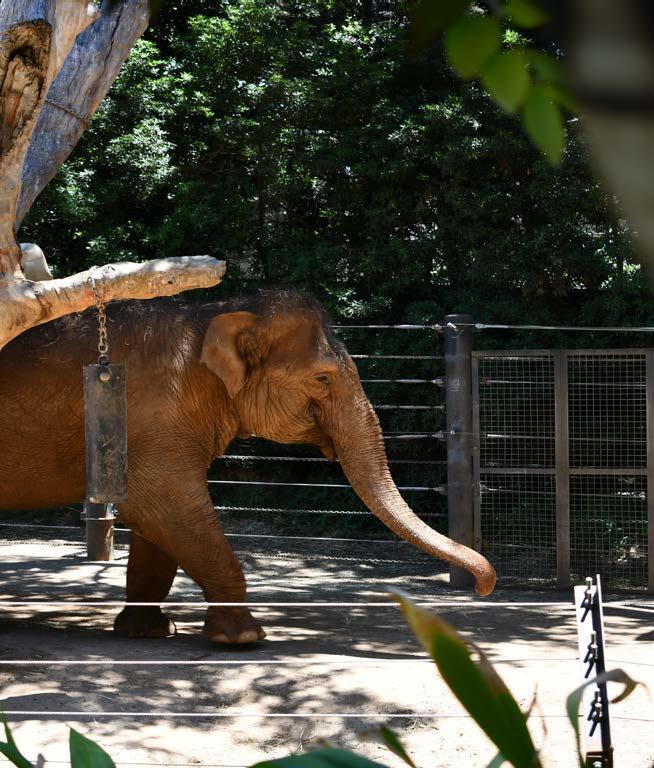
Protesters Find Loophole by ‘Glamping’ on South Lawn
Aaron Agostini
The University of Melbourne has once again become ground zero in the eternal tug-of-war between student protest and University policy, though this time, it smells faintly of cinnamon and features significantly more velvet throws.
In response to the University banning on-campus protests in 2024, students opposing the University’s ties to weapons manufacturers have found a stylish workaround: glamping. The term — a portmanteau of ‘glamorous camping’ — has taken on radical new meaning as South Lawn is transformed into a Pinterest-perfect protest site complete with fairy lights, ethically-sourced teas and enough cable-knit shawls to warm all of Kyrgyzstan.
‘I cannot believe Duncan didn’t write this into the policy change,’ muttered Emma Johnston, shielding her eyes from the glare off a solar-powered aromatherapy diffuser. ‘Technically, there are no tents.
Just … yurts. And a teepee that might be a sculpture.’
A rugged outdoorsman, invited by campus security to assess the scene, declared definitively: ‘This is not camping. This is an insult.’
‘It’s nicer than my $500-a-week Scape apartment,’ said one student, adjusting the throw blanket over their shoulders to line up with the one across their lap. ‘Also, the Wi-Fi is way better.’
‘The University has defined ‘camping’ as occupying a temporary dwelling on campus,’ a PhD candidate employed as a casual tutor added, cracking open seven cold-pressed green juices at once, ‘but amid wage theft and a cost-of-living crisis, I’m here to stay.’
While critics have called the movement unserious, University officials are reportedly concerned by how well-rested and emotionally regulated the protesters
appear. ‘They’re dangerously reflective,’ warned one administrator. ‘If they start journaling, we’re done for.’
Some see the protest as a microcosm of a deeper issue: not just the University’s ties to weapons manufacturers, but its increasingly hostile stance toward collective action; especially when the collective action includes artisanal pastries and drinking chai lattes from oversized mugs with both hands. While glamping is not inherently political, is it possible that the future of resistance is soft, well-brewed and aesthetically curated?
One thing is certain: if peace can’t be achieved globally, it may at least live for now under a macrame canopy, surrounded by silent disco raves, within a guided morning sound bath, led by a barista with a beanie named Eliott, on the University of Melbourne’s South Lawn.

Art by Alex Saveski




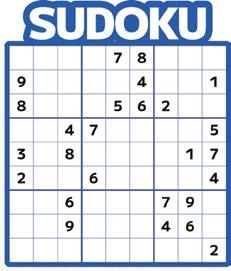
DOWN ACROSS
1. Dedicated groups
3. Fun loving mariner food
4. American state, but Mexican
6. To say when injured
7. Egyptian soul

Which of the following is not an Ancient Greek architectural order?
A. Corinthian B. Arcadian
C. Ionic D. Dorian
How many Wiggles are currently active?
A. 3
C. 6
1. Hat, worn by 11th iteration
2. At the shore, by a swimmer
5. An unfunny blague
8. Something you fin
9. What happens when you drive on ice
B. 4
D. 8
Classical guitarist Francisco Tárrega’s ‘Gran Vals’ is associated with which tech company?
A. Nokia B. Microsoft
C. Intel D. Samsung
What is the second brightest star in the sky?
A. Sirius B. Betelgeuse
C. Canopus D. Vega
Which Melbourne suburb is named after Eureka Rebellion leader Peter?
A. Epping B. Lalor
C. Fitzroy D. Werribee
Which of the following was slang for early matches?
A. Lucifers B. Vestas
C. Chapmans D. Dragons
Which is the odd one out?
A. Jacu B. Panda` C. Civet D. Elephant
Whose sculptural work, currently located on UniMelb’s Parkville campus, was not originally displayed in the CBD?
A. Victor Tilgner and Edward W Raht B. Christine O’Loughlin
C. R. S. Jackson D. James Gilbert
Police seized $82,000 from the home of which UniMelb alum during their Farrago editorship?
A. Nam Le B. Julian Assange C. Bianca Censori D. Nicola Gobbo

DOWN
Norse god of mischief
Decorates a cake
Response to something funny 5. Someone that replaces the bottom part of a shoe 6. “Kinda?”
Personal two cents preface, initials
28. Tiny bugs
29. Dressing option
30. Y of YSL
31. Religious subgroup
35. Australian coastal painter, J. W.
36. Chest muscle, for short
39. Sender of a billion emails
41. “What if you fly?” counterpart
42. Group of amateur soldiers
44. Australian goth wrestler
ACROSS
1. “Are you saying I'm ___?”
6. First relatives, for short
10. Black and white cookie
14. Evening, in Madrid
15. Bad sign
16. Carlton cinema
17. Swedish retailers (and homes of plush sharks)
18. Device used to measure fluid flow
20. Opposite of being in one's element
22. In addition to
23. Compass direction
24. “That's not what's important right now”
31. Sharp stick, or fish variety
32. Farm noise
33. Croat, for example
34. “___, Actually”
35. Stance named after a letter
37. Hydrocarbon suffix
38. Optionally locked when typing
40. Done to an engine
41. Apple computers
43. End of a salty non sequitur?
47. Relaxing sighs
48. Stop a plan in its tracks
63. Has staying power 1. “It's not ___, it's a when”
45. Something that's important
46. Makes it hard to see
49. Spinach, for example (with paneer)
50. Never again

Used to row
Place for a sail
Person on the internet, for short
Free car Winfrey
25. Inner West Sydney suburb, near the airport
26. “Let me suggest”, legally 27. Help initials
51. Two of the options on a switch, for example
52. “Are you ___ out?”
53. Snake sound
54. Warm up something
55. Valley north of the Australian Capital Territory
56. Place to unwind
49. Odd circumstances, or what's common to 20-, 24-, and 43-Across
56. Larger of Italy's two microstates
57. Place to get lost
58. Walk in circles around the room
59. So much
60. Cartoon family middle child
61. Stress, maybe
62. Extra

